
speculative investors control the battery industry The year ahead: views of the great and the good Bringing the industry together www.batteriesinternational.comTHELASTWORD:DEATHOFANEWSHOUNDFORETOLD Issue 126 Winter 2022/2023 How India is braced for energy storage bonanza Formation at its finest: only the best will do Europe's giga dreams in tatters Decisions needed to avert battery crisis
Why



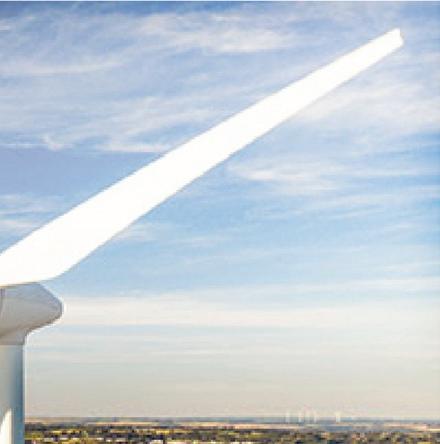

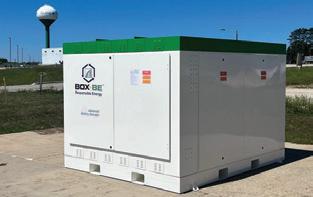

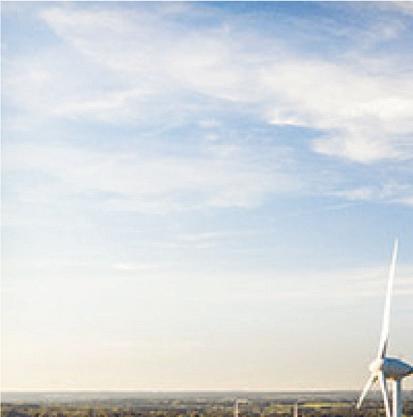




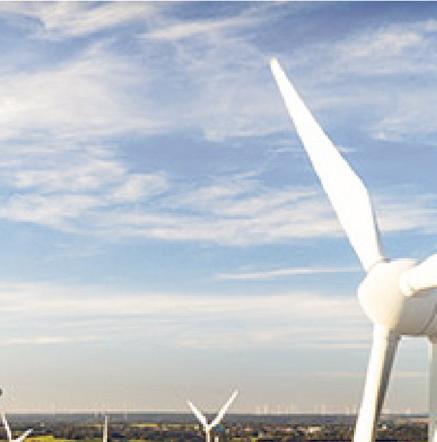
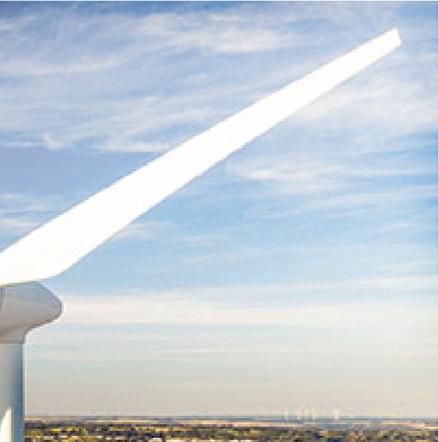

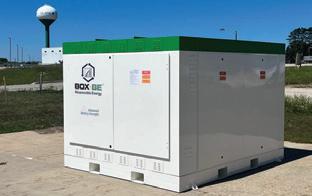
A G . D D B B , B W (C), B -B S C E , S E R . www.advancedbatteryconcepts.com info@advancedbatteryconcepts.com 1-855-230-3390 A B C ’ L E S S B -BE(TM) P R E G S (TM) T . B -BE S D M E S N T F G . D D B B , B W (C), B -B S C E , S E R . www.advancedbatteryconcepts.com info@advancedbatteryconcepts.com 1-855-230-3390 A B C ’ L E S S B -BE(TM) P R E G S (TM) T . B -BE S D M E S N T F G . D D B B , B W (C), B -B S C E , S E R . www.advancedbatteryconcepts.com info@advancedbatteryconcepts.com 1-855-230-3390
Time to fix Europe’s competitiveness problem

36 Europe’s ambition to become an EV batteries powerhouse could stall as lucrative US tax breaks lure gigafactory investors away and China extends subsidies. EU is now in a crisis to salvage its electric dreams as industry leaders accuse policymakers of being asleep at the wheel
Global giga investments tip scale in favour of US 40


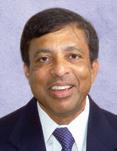
Investment needed to secure critical materials to power EU’s electric future
UK giga-project runs out of road
Stryten incoming CEO Judd reunites previous Johnson Controls management, Vargo to become chairman • Grupe takes over as Digatron CEO

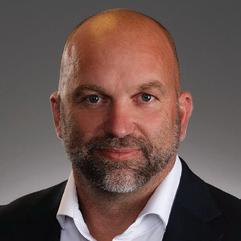
• Distinguished service honour for Ramesh Natarajan • Pam O’Brien leaves BCI • CBI appoints two in the US, seeks to recruit another in Brussels • Employer award honour for Gravita • Hammond Group names four industry experts to Innovation Leadership Council • Posters showcase added to BCI’s Kentucky program
• Giuliani joins Sunlight’s executive team • EnerSys appoints Tamara Morytko to board • Volt Resources makes Chintawar new CEO • Spearmint Energy makes Rood chief development officer • Jansen named as interim Solid Power CEO as Campbell retires • Highview Power appoints Redding as general counsel
NEWS
15
Metair rejects early batteries unit bids as plans for sell-off go on • Refined lead metal demand exceeds supply, says report • Exide Industries renames lithium business unit • US ‘set for 1,000GWh surge in EV battery capacity by 2030’ • Nala’s Belgium BESS set for commercial start
• Metair rejects early batteries unit bids as plans for sell-off go on
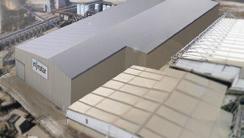
• Refined lead metal demand exceeds supply, says report • Exide Industries renames lithium business unit • US ‘set for 1,000GWh surge in EV battery capacity by 2030’
• Nala’s Belgium BESS set for commercial start
• Construction launch for Neoen’s 200MW Blyth Battery in South Australia • BASF in materials supply first for ToyotaPanasonic joint venture firm • ABC, Exide Industries reveal bipolar lead BESS plans for India • GS Yuasa online battery academy now multilingual
RECYCLING NEWS
23
Port Pirie back in operation as Nyrstar launches ‘early works’ on product recycling facility • New Nour battery recycling unit ‘operational by spring’ • ACE partners Tabono for Africa recycling
• Gravita forecasts recycling boom, but fewer participants

CONTENTS www.batteriesinternational.com Batteries International • Winter 2022/23 • 1 COVER STORY: EUROPE’S GIGA DREAM IN TATTERS 36
8
How to destroy Europe’s battery industry in three quick months PEOPLE NEWS
Stryten incoming CEO Judd
EDITORIAL 4
8
42
45 Work starts at Port Pirie 23 ABC opens BOX of deals 17 Hammond names four industry experts to Innovation Leadership Council 13
26
Redwood to start work on US battery materials site in $3.5bn investment • CATL in 123GWh Honda deal, plus BESS supplies agreement with Gresham House • Russia gigafactory plan is ‘first step toward batteries independence’ • US ‘set for 1,000GWh surge in EV battery capacity by 2030’ • Nala’s Belgium BESS set for commercial start
• Construction launch for Neoen’s 200MW Blyth Battery in South Australia

• BASF in materials supply first for Toyota-Panasonic joint venture firm

FEATURES
HERE COME THE MONEY MEN!
50
Private equity and venture capital investors have been circling the lead battery industry for well over the past decade. Their ownership can bring benefits but also difficult times.
THE YEAR AHEAD
Each December Batteries International asks leading figures in the battery and energy storage market for their take on the year gone by and the year ahead. BATTERY FORMATION

• The bright sparks at batteries’ journey end
• Supply chains and the new world order
58
Our definitive guide to the conferences and exhibitions in the months ahead
LAST WORD
95
Death of the Newshound? The News-puss cometh • Nobel Laureates explained — it’s chocolate • The Curse of Moe returns
Publisher
Karen Hampton karen@batteriesinternational.com
+44 7792 852 337
Editor-in-Chief Michael Halls editor@batteriesinternational.com

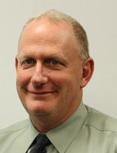
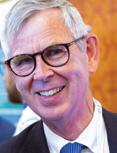
+44 7977 016 918
Advertising director Jade Beevor jade@batteriesinternational.com
Editor
John Shepherd john@batteriesinternational.com
Contributing editor Frank Millard Researcher, journalist Frances Jones frances@batteriesinternational.com
Finance administrator Juanita Anderson juanita@batteriesinternational.com
Subscriptions, enquiries subscriptions@batteriesinternational.com admin@batteriesinternational.com
Production/design
Antony Parselle aparselledesign@me.com

International advertising representation advertising@batteriesinternational.com
The contents of this publication are protected by copyright. No unauthorized translation or reproduction is permitted. ISSN 1462-6322
© 2022 Mustard Seed Publishing UK company no: 5976361. Printed in the UK via Method
CONTENTS 2 • Batteries International • Winter 2022/23 www.batteriesinternational.com
ENERGY STORAGE NEWS
69
EVENT REVIEW — ILZDA 2022 76 International Conference on Lead and Lead Batteries December 5-6, New Delhi, India
EVENTS 81
•
• Fine dining à la BCI
Poster, poster on the wall who is the smartest of them all? • Saving the environment, the US way • ‘Child’s play’ in Indian hotel mix-up
Disclaimer: Although we believe in the accuracy and completeness of the information contained in this magazine, Mustard Seed Publishing
warranties
representation
this. Nor should anything contained within it be construed as constituting an offer to buy or sell securities, or constitute advice in relation to the buying or selling of investments. Last Word: Poster time ahead 96 What’s in store for 2023? 58 Here come the money men 50 Formation at its finest 69
makes no
or
about

How to destroy Europe’s battery industry in three short months
In a former lifetime I spent over 20 years working as a financial journalist in the City of London. My speciality was the foreign exchange and derivative markets where a move of one US cent with leverage could earn a good trader’s bank a six figure profit in a matter of minutes.
In those days there were two types of trader. The analytical and the instinctive.
The first would work carefully at considering the trends, index weightings and charts looking for the pattern to make a winning trade. This is unmistakably similar to the analysis that goes on in predicting our future battery requirements, players, market penetration, investment subsidies and the like in working out the economies of the gigafactory and battery needs of the future.
The second trader was the instinctive one. They would have a gut feeling about the way a market was moving and would often choose something random as an omen. One favourite used to be the angle of the half-naked woman then found on page 3 of The Sun newspaper. Parts of her facing one way meant the dollar was going to go up. Or down.
Both traders made money. But they each did so in different ways. Interestingly enough they each had an interest in expensive wines — one would understand and savour the bouquet and taste. And the other? Well he’d spoof you that you couldn’t drink a $200 bottle of Château Lafite in one.
The relevance to the battery markets is that we’re in a situation where we have two fundamentally different approaches to how we can develop the gigafactories and battery cultures of the future.
Look to the US and China and you see two countries instinctively wanting to play at the top table for the new energy game in town.
The tax breaks in the US Inflation Reduction Act have been calculated and, yes, the entire $370 billion on offer has been analysed but fundamentally the American approach is knee-jerk and instinctive.
So too is China’s approach in handing out subsi-
dies to get the gigafactories of the future. The rest of the world — thinking particularly of Canada, Japan and South Korea — are also making moves.
If our electric future is going to be one powered by renewables with batteries for energy storage as now seems inevitable it’s just plain common sense that you’ll want to support your own nation’s attempts to become top dog in the technology.
But there’s also the analytic approach that seems to be part of a general European bureaucratic understanding of the world.
In this idealised future — imagine the whole continent is gently humming with everything from perfectly recyclable toothbrushes to infinite cheap power at its command — everything will be perfect.
In this analytic world the underpinning of it is being thrashed out now by the civil servants of the European Commission as we transition to this gleaming future where we all wear open-toed sandals, hum Joan Baez songs and there’s not a whiff of that deadly CO2 around.
But just a quick glance through the agenda that these dedicated and, we presume, well-meaning bureaucrats have, shows the immensity of the tasks they are setting out for themselves. And their inability to achieve them in any kind of sensible or time-realistic fashion.
The over-arching aim is set out in the European Green Deal but this and the regulation around it is huge.
Your eyes may blur over the next few paragraphs but there is a valid point considering the scope of what the European Commission seeks to achieve. We have the European Climate Pact, enabling the Green Deal, the Sustainable Products Initiative, the creation of the Circular Economy, the Renewable Energy Directive, the EU Biodiversity Strategy, the Zero Pollution Action Plan, the Carbon Border Adjustment Mechanism, the Energy Taxation Directive, the Fit-for-55 Package (55% reduction of CO2 by 2030) and the soonto-go-live Battery Passport to name the first ones to come to mind.
To add misery to this blur of legislation we have
Mike Halls • editor@batteriesinternational.com
EDITORIAL 4 • Batteries International • Winter 2022/23 www.batteriesinternational.com
In its Farm-to-Fork program the Commission sets the target to make 25% of EU agriculture organic by 2030 — none of the EU’s 440 million citizens or 12 million farmers were asked for their opinion let alone their vote on the matter.
just had the approval of the first phase of the Batteries Regulation (that update of the 2006 Battery Directive) which sets commercial logic to one side and says only batteries made to EU specifications can be allowed into the bloc.
However, to make the regulation actually work is going to require another six to eight years of secondary regulation and committee work to achieve its goals. As an aside is that really what European automotive OEMs want? More expensive batteries to go into their already expensive EVs?

The EU’s attempt to drive lead battery manufacturing out of Europe — sometimes it feels like the use of lead batteries too! — has its culmination in the magnificent REACH regulations banning all hazardous substances out of the continent. Lead, of course, being one of them.
At least it’s kept ILA staff more than busy for over a decade in combatting (mostly successfully) Commission inroads into the lead battery industry.
This attempt to regulate all life across the EU — the Economist newspaper once called it the potential de-industrialization of Europe — has even extended to the food we eat. In its Farm-toFork program the Commission set the target to make 25% of EU agriculture organic by 2030. A quirk of governance: none of the EU’s 440 million citizens or 12 million farmers were asked for their opinion or vote on the matter.
The odd thing about these targets — and let’s face it a lot of what the Commission hopes to achieve are sensible — is that no democratically elected body in Europe voted for most of them.
Europe’s system of governance is an odd one — the unelected civil servants set out the policy and the regulations while the elected European Parliament rubber-stamps them. This may be a slight over-generalization, but the generalization is valid.
The Commission itself is above the sordid world of business and accountable public expenditure — every month they ship the whole apparatus of EU governance from Brussels to Strasbourg for a few days as part of a treaty obligation to keep the French happy a couple of decades ago. (Imagine the uproar over the cost if the US moved the seat of government from Washington to New York for a few days every month!)
And in the next couple of months this difference in approach between the instinctive and over-analytic is going to come to a head as everyone that had previously been inclined to set up gigafactory plants in the EU is now voting with their feet and heading east and west.
The European Battery Alliance — an organization that stands out above others and dares to speak its mind — reckons that at least €100 billion ($106 billion) is needed to avert a potential investments meltdown for gigafactory plans.
EU Commission vice-president and batteries czar Maroš Šefcovic, who in fact set up the Alliance in 2017, has been told in no uncertain manner of the damage being done to Europe’s fledgling battery plans by foreigners.
But let’s not ignore the impressive achievements that the EU has made in drawing post-war Europe together and unifying a fractured continent. The ability, for example, to take a five-hour drive through Europe, going through seven different countries but using one currency is an impressive one.
The trouble with creating this cohesive entity — where there are 24 official languages by necessity — is that decision-making is complicated by the need to be consensual.
And, in the race to attract battery investment into individual member countries, a long, dragged-out partisan dialogue is more than likely to happen …
Mike Halls, Editor-in-Chief
EDITORIAL www.batteriesinternational.com Batteries International • Winter 2022/23 • 5
We’re in a situation where we have two fundamentally different approaches to how we can develop the gigafactories and battery cultures of the future.
Hammond-engineered to reduce acid New GravityGuard
Hammond is a Leading Developer of Lead-Acid Battery Chemistry for Advanced Energy Storage Applications







Red Lead & Oxides
High-Quality Staples of Battery Manufacture, Tailored & Processed


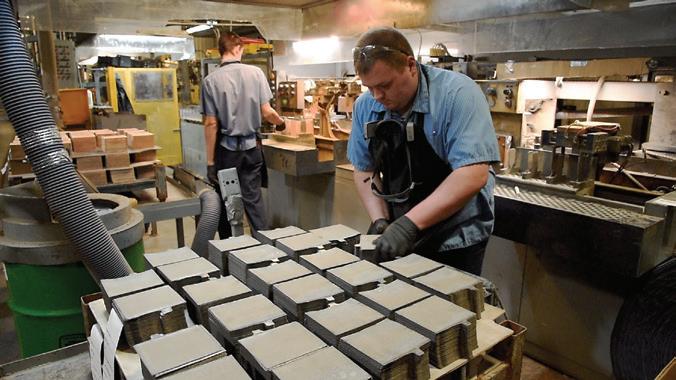
And has Served the Global Battery Industry
For 90 Years.
Technical Assistance








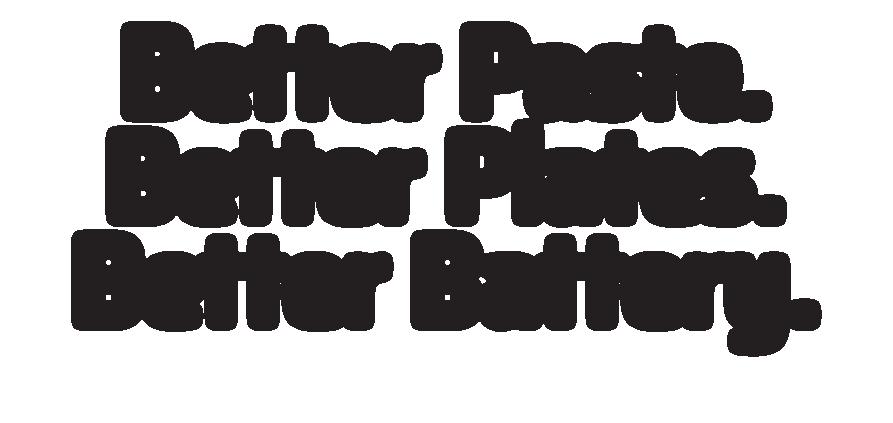




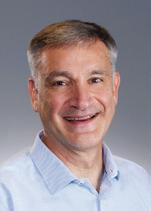







Better Paste. Better Plates. Better Battery. Engineered to Customers’ Specific Particle & Batch Size Documentable Savings of Paste Material & Curing Time SureCure® Accelerates TTBLS Crystal Growth More Tested & Proven Benefits of Hammond Original & Treated SureCure® Improved Charge Acceptance • Strengthened Positive Plates • Enhanced Curing Consistency Increased Cycle Life • Improved Partial-State-of-Charge Cycling • Reduced Carbon Footprint Hammond Group, Inc. announces two Senior Fellows to guide its Innovation Leadership Council — John Miller, recently Senior Director of Engineering for Stryten, and Dr. Francisco Trinidad, recently Director of Battery Technology for Exide Europe. With extensive battery industry expertise they will play leadership roles in supporting and advancing product development and innovation at Hammond. Also joining them on the Council are Rosalind Batson, President of Clear Science Inc., and Lash Mapa, Professor of Industrial Engineering and Technology at Purdue NW. We welcome these important voices in developing Hammond's next generation of innovations for the battery storage industry. Read more at HammondGlobal.com/news. Hammond Names Senior Fellows to Innovation Leadership Council INDUSTRY NEWS Miller Batson Trinidad Mapa
Stryten incoming CEO Judd reunites previous Johnson Controls management, Vargo to become chairman
as VP and general manager Americas. He left the firm when it became Clarios after being bought by Brookfield Business Partners in May 2019.
Stryten Energy unveiled a major shake-up of its leadership team on January 4 with a reformulation of ex-Johnson Controls senior management that had worked together in the previous decade.
Stryten president and COO Mike Judd will be promoted to succeed CEO Tim Vargo, who will become chairman. Judd who joined Exide Technologies in 2019 before it became Stryten had also spent 12 years in senior positions in Johnson Controls.
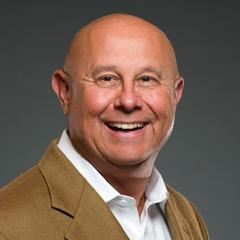
Both appointments are to take effect before the end of Stryten’s fiscal year on March 31.
Vargo, a former CEO and president of Exide Technol-
ogies, said Judd’s promotion to CEO was “the culmination of a succession plan the Stryten Energy board and I have developed over the last several years”.
“Mike is the right leader to take the reins of the business and achieve the company’s strategy for increased profitability and growth,” Vargo said.
Meanwhile, Petar Oklobdzija, CFO at separator manufacturer ENTEK, will join Stryten as executive VP and CFO effective February 1 to lead the company’s finance, accounting, treasury, information technology and strategic sourcing.
Before ENTEK Oklobdzija spent 18 years with Johnson Controls most latterly
Meanwhile, Dan Autey joined the company on January 3 as executive VP commercial. Autey had previously spent 19 years with Johnson Controls/Clarios most latterly as VP/GM aftermarket, US and Canada.
A further appointment has been the promotion of strategic sourcing VP Jeremy Furr to that of senior VP of strategic sourcing. This was confirmed in a LinkedIn post on January 3.

Incoming CEO Judd said Oklobdzija’s career in operations and finance in the automotive and battery industries would help the firm accelerate plans to expand in new and existing energy storage markets. Autey’s automotive and industrial battery expertise “will help strengthen our ability to serve our customers’ evolving energy needs”, Judd said.
Stryten arose from the creation of two standalone companies in 2020 — Stryten Manufacturing and Element Resources — following Atlas Holdings’ acquisition of lead battery manufacturer and recycler Exide Technologies’.
Stryten bought the vehicle power division of Galvion, a military equipment maker whose products included lithium batteries for onboard systems typically used in combat vehicles such as tanks, in 2021.
In January 2022, Stryten announced its move into vanadium following its acquisition of Storion Energy, a commercial spin-off from technology firm ITN Energy, which began its research into redox flow batteries in 2010.
That was followed in March 2022 by Stryten’s formation of two divisions — Motive Power and Essential Power — focused on developing and producing multiple battery technologies, including lead, for the energy storage market.
Posters showcase added to BCI’s Kentucky program
Registration is open for the next Battery Council International Convention + Power Mart, to be held in Louisville, Kentucky, on April 23-26.

The submission deadline for the prestigious annual Innovation Award and the 2023 Amplify Award — which recognizes a highly effective and toprated internal or external campaign, program or communication that serves to inform, educate and promote lead battery products, components, services
or the industry as a whole — was February 3 Keynote convention speakers have yet to be confirmed, but the golf tournament, receptions, Women in the Global Battery Industry networking event and technical sessions have been listed as usual.
A Poster Research Showcase is being added to this year’s convention.
“Undergraduate, graduate and postdoctoral level researchers and assistants are invited to submit post-
ers that will bring forward scientific work on lead and other battery types,” BCI said.
“The showcase will support researchers in university, government and commercial settings in
building awareness about the scientific opportunities, advancements and career objectives in today’s battery industry and to share cutting-edge science and technology across this critical industry.”
PEOPLE NEWS 8 • Batteries International • Winter 2022/23 www.batteriesinternational.com
Mike Judd Tim Vargo
Conference rendezvous in Louisville
Grupe takes over as Digatron CEO
Distinguished service honour for Natarajan
Friedrich Grupe has been promoted to chief executive officer at Digatron Power Electronics, effective January 1 and will be based in Aachen, North RhineWestphalia, Germany.
The firm is the central core of the larger Digatron group which has operations in Qingdao, China; Pune India (working through Ador Digatron); Milan, Italy; and Shelton, Connecticut, US; as well as its headquarters in Aachen.
Grupe, who is a wellknown and well liked figure in the battery community, says he is expecting great things in this coming year. “We’ve got an exciting range of existing products and a couple of new ones in the pipeline,” he says. “One of which we will be launching shortly.
“The market for high quality testing equipment is booming. We are also steadily moving into lithium battery formation equipment where we are developing work with Digatron Systems Italy which was set up in 2019.
“I see this as a time for ourselves and the wider group to grow internally and externally. We’ve just
moved into our brand new R&D facility here in Aachen and we have recruited new staff here with more to come.”
Grupe’s appointment comes at a potentially pivotal moment in the wider Digatron.
Bjoern Stoll took over as new CEO of Digatron Power Electronics Inc in Connecticut on January 1 which will concentrate on expanding further into both the lead and lithium sides to the energy storage market.

Ador Digatron last year launched its Quench, product which is making steady inroads into DC fast chargers for EVs in India.
Grupe takes over from Holger Driesch who has taken a senior management position in Mangoldt an electrical engineering firm.
Grupe has been with Digatron for almost 14 years and started as a project manager in May 2009. He was appointed vice president for sales and marketing in October 2015 and vice president for product management in September 2019.
Digatron was set up by Rolf Beckers in 1968.
The India Lead Zinc Development Association distinguished services award for 2022 was presented to Ramesh Natarajan, a lead battery industry veteran of more than 42 years on December 5.

The award was presented on the first day of the ILZDA’s International Conference on Lead and Lead Batteries by Sudhendu Sinha, director of India’s Niti Aayog policy think-tank.
Natarajan’s work in the industry began as a graduate trainee at the age of 20. He went on to hold senior managerial posts, design batteries for various applications as well as lead training programmes
for quality management systems. He has also conducted technical training programs in Asia, the Middle East, South Africa and the UK.
Today, he is perhaps better known as an author — for his ‘batteries demystified’ books — the second of which was released during the conference.
Natarajan said he hope his books inspire ambitious young people with innovative ideas to enter the battery industry.
But he stressed that despite his foray into publishing, he wants to continue working with the lead batteries industry for many years to come.
EnerSys has appointed Tamara Morytko as a director, the company said on December 7. She joins the board with immediate effect for two years.
Morytko’s last worked as president of the pumps division at Flowserve, a US supplier of industrial and environmental machinery where EnerSys said she established a reputation as a supply chain subject matter expert.

Before that, Morytko spent two years as CEO of Norsk Titanium, a Norwegian aerospace and defence firm.
Previously Morytko spent seven years with
oil services company
Baker Hughes becoming Asia Pacific region president.
From 1996 until 2010, Morytko held a number of increasingly senior positions at aviation components manufacturer Pratt & Whitney.
PEOPLE NEWS www.batteriesinternational.com Batteries International • Winter 2022/23 • 9
EnerSys appoints Tamara Morytko to board
Ramesh Natarajan
Friedrich Grupe
Tamara Morytko
Pam O’Brien leaves BCI
Pam O’Brien stepped down in December after seven years as vice president of operations at Battery Council International and almost 13 years with Smith Bucklin Corporation, the managing
agents for BCI. She will be sorely missed.
Working initially with Mark Thorsby, then EVP for the council, Pam took their plans to enlarge the ambit of BCI’s operation seri-
Jansen named as interim Solid Power CEO as Douglas Campbell retires
All-solid-state batteries developer Solid Power said on November 29 that CEO, board member and co-founder, Douglas Campbell, had decided to retire effective immediately.

David Jansen the company’s chair and president, has been appointed as interim CEO while the firm looks for a permanent replacement.
Solid Power independent director John Stephens said: “Since co-founding
Solid Power in 2011, Doug has served as a passionate entrepreneur, beginning with the company’s earliest stages as a spin-off from the University of Colorado.”
Stephens said Campbell and the board had decided new leadership was needed “as we enter the next phase in our evolution and build on our momentum as a newly public company”.
Campbell said he planned to spend more time with his family and pursuing other interests while “continuing as a significant shareholder of the company for years to come and watching the growth and progress that I know the talented team at Solid Power will continue to make”.
Solid Power has partnerships with both BMW and Ford to jointly develop allsolid-state batteries.
ously. She became a driving force in making BCI annual meetings worth attending (even if you didn’t play golf) and was one of the driving forces behind creating the Women in the Global Battery Industry.
Chris Pruitt, president of BCI, praised her for her “exemplary commitment and dedication to supporting the efforts of BCI to establish the Women in the Global Battery Industry, an organization of professionals, founded to promote and develop the growth of women in the battery industry.
“Her commitment to this program has exceeded that asked of her and demonstrates her full and complete dedication and passion to the industry as a whole, and to the industry’s goal of supporting the careers of women in the battery industry and STEM careers.”
Julie McClure, a BCI director and chair of MAC Engineering, said: “Over the past year, Pam has moved mountains to take the WGBI from a concept presented to the BCI board by a small group of BCI members and
staff, to a fully-fledged and functional networking and professional collaboration group of industry women. “
Roger Miksad, EVP at Battery Council International paid tribute to working with her. “She was not just highly efficient and effective at what she was working on but also fun to be with,” he said.

“Whatever she did, she did well,” says Mike Halls, the editor-in-chief of Batteries International. “She had a fantastic ability to organize her loyal and dedicated staff. But what made her truly effective was that she could always see beyond the details and would immediately grasp the bigger picture.
“BCI and the wider lead battery community will miss her and owe her a huge debt of gratitude.”
Pam said she intended to enjoy taking a break from some of the hectic schedules of working at BCI. “I intend to chill out and have some time to myself, I’ve plans to learn French, teach myself how to play the guitar and play more golf,” she said.
Employer award honour for Gravita
Lead recycling group
Gravita India was honoured by Rajasthan’s state government on December 23 for the company’s employment practices.
Gravita received the ‘President Trophy’ best employer award at a ceremony organized by the Employers’ Association of Rajasthan.
Rajasthan governor Kalraj Mishra and state industry minister Shakuntala Devi presented the award, which is given to recognize working conditions provided by companies including
health, safety and skills
development.
On September 17, Gravita was honoured by Rajasthan’s state government for the company’s services to the exports sector.
Gravita has 13 manufacturing facilities across Asia, Africa and Central America.
The company told Batteries International in June 2019 that it had started commercial production of lead in Ghana and Tanzania, with the aim of supplying European markets.
PEOPLE NEWS 10 • Batteries International • Winter 2022/23 www.batteriesinternational.com
Pam O’Brien
Doug Campbell
in Raman customisation.
Introducing our Raman microscope integrated with a battery cycler for Li-Ion battery research

For research on battery for both Raman spectroscopy and battery cycling


• Simultaneous test on Raman and battery cycling at error margin >= 0.1 seconds and at a regular interval
• 200 x 200µm Raman mapping on 40X
• For use with optical cells*
• 0.0002mA~ current control
www.nanobase.co.kr
nbsales@nanobase.co.kr

NANOBASE
*We have successfully tested compatibility with optical cells by EL -CELL® .
Discover the latest innovation
Battery Cycler
Scanning Raman Microscope Raman TRPL Photocurrent Battery Cycling


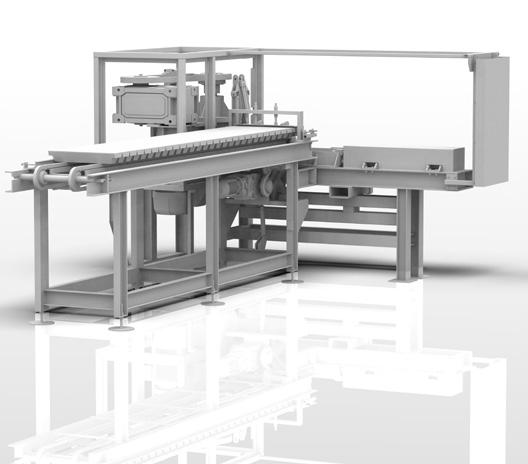
Find out more! Call Us: +39 0872 57724/5 Via Pedemontana 13, 66022 Fossacesia (CH) - ITALY Email : cam@cam-srl.com Web: www.cam-srl.com Oxide production without a melting pot, cylinder caster, exhaust chimneys, or gas burners provides significant energy savings with the CAM Lead Shaving System. Plus, our cold milling system avoids the mechanical stress of other processing systems. The Lead Shaver, comprising the use of lead shavings as feed material for ball mills was patented in 2004. The Lead Shaving system is composed of: CAM LEAD SHAVER PRODUCES WITHOUT CASTING OXIDE WITHOUT CASTING Heavy-Duty Italian Battery Equipment A ZERO-EMISSIONS SOLUTION FROM CAM Inclined lead shavings conveyor Lead shaver Lead ingot conveyor with automatic tipping system CAM R&D Department INCREASE YOUR PROFITS WITH A NO GAS LEAD SHAVER
Hammond Group names four industry experts to Innovation Leadership Council
Hammond Group announced mid-December two senior fellows to guide its Innovation Leadership Council. They are John Miller, recently senior director of engineering for Stryten Energy, and Francisco Trinidad, recently the director of battery technology for Exide Europe.
“We’re excited to have John and Francisco join Hammond,” said Gordon Beckley, chief operating officer at Hammond.
“With their extensive battery industry knowledge base they will play a leadership role in supporting our research and development staff, enhance our product development efforts, and contribute to Hammond’s continued innovations towards the industry’s goals of advanced energy storage solutions.”
With 37 years in the battery business, Miller has a long history of introducing innovative products to the marketplace. Before his most recent position at Stryten, Miller led teams in the areas of product engineering, process engineering, applications engineering, and R&D at GNB and Exide Technologies.

He has participated in
various industry committees and forums and has helped write battery standards, handbooks, and white papers for Battery Council International and the Society of Automotive Engineers.
During more than 43 years of experience with different electrochemical systems, Trinidad has been the author of 24 articles, more than 70 presentations in battery conferences, and holds 14 international patents. He looks to promote new technological approaches for automotive and industrial applications, including the use of different materials for positive, negative, and electrolyte of current battery designs as well as determine the added value of new alternative designs like bipolar plates and spiral wound cells.

In 1977, he joined the Tudor group and was promoted first to the position of research manager in Azuqueca (Spain) and then the industrial devel-
opment director in Madrid and Soest (Hagen Industrial plant). Following Exide’s acquisition of the company, he became its research director in Paris, then, the development director of transportation Europe, basic research director, and more recently, director of battery technology.
Also joining Miller and Trinidad on the Council are Rosalind Batson, president of Clear Science, and Lash Mapa, professor of industrial engineering and technology Purdue NW.

Batson is a lead-acid battery expert specializing in characterization of leadacid battery materials. She owns Minneapolis-based Clear Science, a laboratory focusing on the testing, research and development of metals, powders, porous materials, coatings, and advanced materials.
She is a metallurgist working with advanced materials and is a recognized expert in the Taguchi DOE method, which is de-
signed to produce a highquality product at a low cost for manufacturers.
Earlier in her career as the R&D manager for GNB Technologies, Batson co-invented a patented continuous process for making lead-acid grids and plates for a family of cells and batteries.
Professor Mapa has several years’ experience as a chemical engineer, process and project manager with European and US lead-acid battery manufacturing organizations.

Currently, he is associated with the MS Technology program at Purdue NW and has managed over 30 projects including lean six sigma projects with manufacturing, service industry, and educational institutions.
Beckley said: “We welcome these important voices in developing Hammond’s next generation of innovations for the battery storage industry and look forward to the years ahead.”
PEOPLE NEWS www.batteriesinternational.com Batteries International • Winter 2022/23 • 13
“We welcome these important voices in developing Hammond’s next generation of innovations for the battery storage industry and look forward to the years ahead”
John Miller
Francisco Trinidad
Rosalind Batson
Lash Mapa
New Consortium for Battery Innovation makes new appointments
The Consortium for Battery Innovation has made two appointments to its staff in its Durham, North Carolina office in the US.
Alyssa McQuilling joined in December as a new research and innovation manager. She has over 10 years of research experience in energy storage, air quality, and advanced agriculture, and her scientific record includes peerreviewed publications and presentations on a wide range of topics.

Highview Power appoints Redding as general counsel
Highview Power has appointed Sandra Redding as general counsel, the company announced on November 23.

Redding has more than 20 years of international experience across a number of corporates in the en-ergy sector, and in a wide range of cultural and political environments. She most recently worked as general counsel for Seadrill and before that as general counsel
Previously she oversaw the operation and commissioning of two energy storage systems at Southern Research in Birmingham, Alabama. She reports to Carl Telford who becomes senior research and innovation manager.
Lara Papi Wilson becomes the new communications manager. She has a diverse background in communications, public relations, marketing, and events across a wide variety of industries including environment, real
of the Dubai governmentowned Dragon Oil.
She has also held several in-house legal positions within the RWE, Gaz de France and National Grid groups.
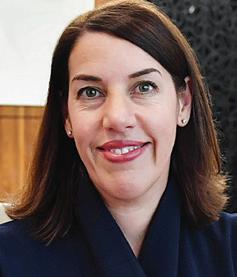
Giuliani joins Sunlight’s executive team
Gianpaolo Giuliani has joined the Sunlight Group as commercial energy stor¬age systems executive director, the company announced in a LinkedIn post on December 29.
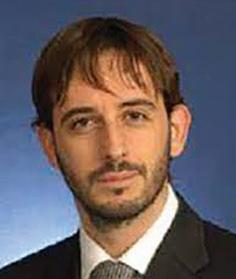
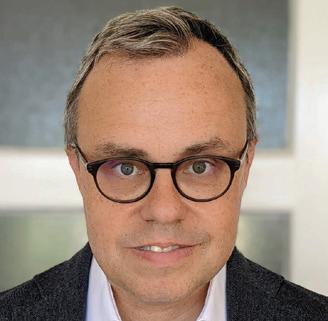
estate and construction, government, military and defence, science, and technology.
Wilson has won national awards for marketing and event programs.
Meanwhile CBI is looking to appoint a research and innovation manager based in Brussels, Belgium. They will be responsible for managing government-funded project bids and running ongoing projects. They will report to Carl Telford.
Giuliani, a former global sales director of energy storage for GE, will lead a team focused on prod¬uct management for Sunlight’s ESS high voltage portfolio and business development for global markets.
He brings over 15 years of experience in energy, management and renewable hybrid generation and, as of 2014, has specialized in renewables and energy storage.
Volt Resources makes
Chintawar new CEO Volt Resources promoted Prashant Chintawar to become CEO on Janu¬ary
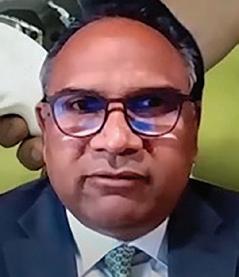
1. Chintawar joined the Austra¬lia-based company as battery metals senior adviser on September 1. He is a former director of global business development and sales for German chemicals conglomerate BASF.
Volt MD Trevor Matthews became financial and commercial executive direc-
tor on the same day, while COO Justine MacDonald, who joined Volt in 2021 after 22 years in the African mining industry, will expand her in¬volvement in the operation and ad¬vancement of the company’s graphite assets, Volt said.
Non-executive chairman Asimwe Kabunga said: “Since joining Volt, Prashant’s high-level industry expe¬rience and deep industry networks have shone through in the work he has done and the projects he has un¬derway.”
PEOPLE NEWS 14 • Batteries International • Winter 2022/23 www.batteriesinternational.com
Lara Papi Wilson
Carl Telford
Alyssa McQuilling
Prashant Chintawar
Sandra Redding Gianpaolo Giuliani
Monbat takes hit following from collapse of Britishvolt
Monbat revealed on January 17 that it had been forced to delay part of a bond loan repayment as a result of the collapse of UK gigafactory developer Britishvolt, because a cash and shares deal between the two had not been completed in time.
Monbat’s announcement came on the same day administrators were appointed for Power by Britishvolt Limited, which had insufficient equity investment to continue — as reported separately in this issue.
Bulgaria-based lead acid batteries giant Monbat had previously agreed to sell its lithium-based EAS Batteries company to Britishvolt in a cash and shares deal worth
€36 million (about $38 million), which was announced in May 2022.
Monbat said in a Bulgarian market update on January 17 it had expected to use the proceeds of the Britishvolt deal to repay a bond loan linked to that agreement.
Instead, Monbat has been forced to “alternatively secure funds” for the first principal instalment on the bond loan in the sum of €5,603,000, due on January 20. This will now be paid not later than January 31, the battery maker said.
“Due to circumstances outside our control, the transaction with Britishvolt was not finalized within the planned timeframe,” the
company said.
Under the terms of the bond loan, a substantial part of the proceeds from the issue were used to acquire shares in the capital of the entity Monbat Holding Germany, in the balance sheet of which the lithiumion division of the Monbat Group was consolidated.
Monbat said the expected cash portion to be received from the transaction significantly exceeded the amount of the obligation for its first principal payment of the convertible bond issue.
“For this reason, the intention of the management was to use the cash from the Britishvolt transaction to service this payment.”
Monbat, a predominantly
lead battery manufacturer, acquired EAS in 2017. Under the terms of the deal with Britishvolt, Monbat said it would continue to be part of the expected growth of the lithium ion industry through a minority stake it would hold in the UK developer.
Monbat’s announcement came on the same day administrators were appointed for Power by Britishvolt Limited
China facing ‘tighter’ lead market from pandemic, new-year holiday
The impact of the pandemic on China’s lead supply network has been revealed in a new survey conducted by the Shanghai Metals Market (SMM) — which has warned that supply could tighten further, exacerbated by the Chinese new year shutdowns.
SMM data confirmed by the benchmark prices provider to Batteries International on January 9 indicated that upstream and downstream enterprises of the lead industry chain were all affected by the continued effects of the pandemic across the domestic lead sector.
China produced 367,900 tonnes of secondary lead in December 2022, down 4.29% month-on-month and 0.49% year-on-year, according to SMM.
A secondary lead smelter in Inner Mongolia also halt-
ed production for around six days amid employee absences caused by the pandemic.
Separately, a secondary lead smelter in Guizhou reported that lead battery scrap available in the market had been limited because most traders had been affected by illnesses caused by the pandemic.
SMM said on January 10
that restocking of lead acid batteries by traders would be halted shortly in advance of the Chinese new year holiday period, which started on January 22.
Battery companies had already suspended deliveries to remote areas of the country — about 10 days earlier than in previous years — as firms broke up early following a decrease in raw mate-
BCI joins Global Battery Alliance
Battery Council International said on January 18 it had joined the Global Battery Alliance (GBA).
BCI executive VP and general counsel Roger Miksad said the move would bolster BCI’s work in promoting a responsible and circular battery value chain.
“As one of the first industries to develop a true circular economy across North America, BCI supports GBA’s guiding principles, in particular to establish a circular battery value chain to support the transition to a low carbon economy,” Miksad said.
GBA is a public-private
rial supplies.
Meanwhile, overall lead production was largely expected to be suspended for planned maintenance at facilities before and after the Chinese new year holiday. That, coupled with the country’s ongoing “unstable pandemic situation”, should result in a further tightening of the secondary lead supply market, SMM said.
collaboration initiative founded in 2017 at the World Economic Forum to help establish a sustainable battery value chain by 2030.
It brings together leading international organizations, NGOs, industry actors, academics and governments.
NEWS www.batteriesinternational.com Batteries International • Winter 2022/23 • 15
European Commission chief warns China, US over battery investments
European Commission president Ursula von der Lyen has warned of tough action against China and other countries engaged in “aggressive” moves to lure industrial projects including battery manufacturing away from the EU.
Von der Lyen told the World Economic Forum in Davos on January 17 that it was no secret the EU also feared new US tax breaks were luring gigafactory investments to North America.
“Our aim should be to
avoid disruptions in transatlantic trade and investment. We should work towards ensuring that our respective incentive programmes are fair and mutually reinforcing,” she said. “But when trade is unfair, Europe must “respond more robustly.”
Von der Lyen’s warnings came as battery industry leaders warned that at least €100 billion ($106 billion) was needed to avert a potential investments meltdown for Europe’s gigafactory plans, because developers
were being lured away by more lucrative deals and incentives in Asia and the US.
She accused China of openly encouraging energy-intensive companies in Europe and elsewhere to relocate all or part of their production with a promise of cheap energy, low labour costs and a more lenient regulatory environment.
China simultaneously gives domestic energy heavy subsidises and restricts access to its market for EU companies, she said.
However, she agreed with critics in Europe that the Commission had to do more to support the bloc’s nascent EV batteries sector, saying there was “a small window of opportunity to invest in clean tech and innovation to gain leadership before the fossil fuel economy becomes obsolete”.
See the special Batteries International report on the EU’s battery investments crisis starting on page 36 of this issue.
PENOX EXPANDERS
PENOX EXANDERS
Improved Battery Performance
↗ High current charge acceptance
↗ Dynamic charge acceptance
↗ Life time
↗ Cold cranking
↘ Water consumption
All Battery Applications

EFB: In combination with TBLS+® for negative AM
EXTEND YOUR BATTERY’S LIFE
NEWS 16 • Batteries International • Winter 2022/23 www.batteriesinternational.com
EFB expander formulations NEW
ABC agrees bipolar lead BESS projects deal for California, confirms $50m capital raise underway
Bipolar lead battery technology is to be deployed in a 646MWh energy storage deal for California, Advanced Battery Concepts announced on January 18.
ABC said its BOX-BE system, launched last September, will be supplied under an agreement with renewable power generation projects company Coram to benefit customers in the Coachella Valley and Los Angeles regions. The BOX-BE system uses the firm’s EverGreenSeal battery tech.
The Coram supply agreement is based on an initial project set consisting of three phases — an initial demonstration, followed by two installations at two different identified sites. The two sites, representing 646MWh, will require about 2,000 BOX-BE units.
The Palm Desert area of Southern California was an early adopter of renewable energy, hosting wind and solar farms that supply residential, commercial and agricultural locations with electricity.
However, the intermittency of renewable power supply means grid operators have had to turn to fossil power generation to meet peak electricity demand.
Coram founder and president Brian O’Sullivan said: “We look forward to working with ABC to commercialize its utility-scale BESS and address the only remaining issue for a fully renewable electric grid — the control, storage and on-command dispatchabil-
ity of clean and economic electric energy.”
The California announcement comes after ABC founder and CEO Ed Shaffer confirmed to Batteries International on January 11 that a $50 million cash raise was underway to further advance development of the firm’s bipolar lead battery technology and products.
Shaffer had already told Batteries International (Autumn issue 125) that fresh investment was being sought, including for ramping up production at its Michigan plant.
Now the New York arm
of investment bank Stephens has been named as the financial institution that is leading the series ‘C’ capital raise. This follows the series ‘B’ undisclosed growth equity round in October 2020 that was led by Nuveen, the global investment manager of TIAA Investments.
A series ‘C’ financing is typically for firms that are already quite successful. This type of funding is focused on scaling the company, growing it as quickly and as successfully as possible.
In addition to expanding manufacturing plant
capacity, the latest capital injection will be used to support increased bipolar battery production — especially the new EverGreenSeal batteries and to satisfy BOX-BE energy storage system orders we have in development, Shaffer said.

He said the company has already had “serious discussions” with various groups that have expressed interest in the capital raise and talks are ongoing.
“Current investors have committed to participating in the series ‘C’ round of investment, for which we are grateful.”
NEWS www.batteriesinternational.com Batteries International • Winter 2022/23 • 17
In addition to expanding manufacturing plant capacity, the latest capital injection will be used to support increased bipolar battery production — especially the new EverGreenSeal batteries and to satisfy BOX-BE energy storage system orders we have in development
Ed Shaffer, founder and CEO, ABC




FLY HIGH Above the Rest Automation • Oxide Production • Material Handling • Service Sorfin Yoshimura LTD 100 Crossways Park West, Suite #215 Woodbury, NY 11797 Tel: + 1.516.802.4600 Email: sorfin@sorfin.com Eagle Oxide Services Inc. 5605 W 74th Street Indianapolis, IN 46278 Tel: 317.290.8485 Email: sales@eagleoxide.com www.eagleoxide.com Accurate Products Hvidsvaermervej 135 DK-2610 Roedovre Denmark Tel: +45.4453.4546 Email: accurate@accurate.dk FLY HIGH Above the Rest.
Metair rejects early batteries unit bids as plans for sell-off go on
Metair missed its 2022 year-end goal of selling off its international batteries division after rejecting unsuitable bids and has taken its search for a buyer into the new year, Batteries International has revealed.
The South Africa-based batteries and auto components group had hoped to find a buyer for its energy storage division — including battery firms in Romania (Rombat), Turkey (Mutlu Akü) and South Africa (First National Battery) — and announce a sale before the end of 2022.
However, a Metair spokesperson said on December 15 offers received up to that point “were not suitable for the current environment”.
“Metair and the board will consider future offers and revisit the strategic options,” the spokesperson said.
In a ‘voluntary operational update’ report to the Johannesburg Stock Exchange on December 5, the lead and lithium group said the failure to secure a

sale so far was “largely due to the geopolitical climate within Eastern Europe”.
The company said its energy storage division was performing “resiliently under tough operating conditions”, but cautioned that the last quarter of the calendar year was “the most volume sensitive time for the business” and sales in that period would have a strong bearing on annual figures.
Total sales of automotive batteries are expected to reach between 8.5 million and 9 million units for the full year, with the expectation that its Mutlu Akü lead battery manufacturing business will increase sales by at 17% compared to 2021.
However, Rombat sales are expected to be around 15% lower, mainly due to dampened consumer confidence from the ongoing conflict in Ukraine, Metair said.

Sales from the group’s First National Battery company in South Africa are “expected to be on par” with 2021 figures as a result of efforts to improve competitiveness and market share progressing, the company said.
Metair’s automotive components division continued to perform well too, relative to “challenging operating environments” and key projects remain on track despite the impact of global supply chain disruptions.
Refined lead metal demand exceeds supply, says report
World refined lead metal demand exceeded supply by 46 kilotonnes during the first 10 months of 2022 as total stock levels fell by 62k. This is according to preliminary figures released by the International Lead and Zinc Study Group (ILZSG) on December 14.
Global lead mine production reported to the group fell by 2.1%, which was primarily a consequence of reductions in Australia, Bolivia, China, Greece, Peru, Turkey and the US, the Lisbon-based study group said.
However, lower refined lead metal output in China, Germany, Italy, South Korea, Russia Turkey, Ukraine and the US was partially balanced by rises in India and Japan — resulting in an overall decrease globally of 1.3%.
Refined global lead metal usage fell by 0.4%, which the ILZSG said was
primarily influenced by reductions in South Korea, Mexico, Taiwan and Thailand, which were largely offset by rises in Europe, India, Japan and the US, Chinese imports of lead contained in lead concentrates fell 17% to 462kt, while net exports of refined lead metal totalled 93kt — an increase of 62kt compared to the first
10 months of 2021.
ILZSG market research and statistics director Joao Jorge told the International Conference on Lead & Lead Batteries in New Delhi on December 5 ( see our detailed conference report elsewhere in this issue ) that there would be no major change in trends in the lead market in the short to medium term.
“The main reason is lead’s still-dominant position in the automotive sector.
"Looking ahead, we are confident that lead batteries can continue to play a significant role in this sector and the growing energy storage market — particularly that generated from renewables,” Jorge said.
India’s Exide Industries said on January 4 it had changed the name of a lithium-focused subsidiary company set up under an initial joint venture with Swiss battery firm Leclanché.
Exide said the now wholly-owned Exide Leclanche Energy Private Limited, branded as ‘Nexcharge’, has been renamed Exide Energy Private
Limited.
The move follows Exide’s announcement on December 12 that it was considering proposals to merge the unit with another wholly-owned lithium subsidiary — Exide Energy Solutions (EES) — that was formed to collaborate with China’s SVOLT Energy Technology to manufacture lithium ion battery
cells in India.
Construction of the EES gigafactory in Bengaluru formally began on September 27.
Exide CEO and MD Subir Chakraborty said on November 16 the development and sale of lead batteries continued to be the company’s “core business”, despite its foray into the lithium ion sector.
NEWS www.batteriesinternational.com Batteries International • Winter 2022/23 • 19
Exide Industries renames lithium business unit
Monbat signals entry into BESS market to support ‘energy independence’
European lead battery major Monbat is to unveil a range of energy storage systems for the industrial and residential markets, the company revealed on November 24.
The commercial director of Monbat’s industrial batteries division, Bozhidar Nekeziev, said the company intended to promote a range of BESS systems for the residential and small business sectors, deploying “traditional, well-established leadacid VRLA batteries” as well as lithium ion-based technologies.
Bulgaria-based Monbat says the move aims to support “energy independence” and could encourage customers to
form their own power supply microgrids as Europe looks to ramp up renewable electricity generation.
Monbat said enabling homes and business to play an active role in the deployment of future energy systems would “change the philosophy” of electricity generation, distribution and consumption from a linear, ‘producer-distributorconsumer’ relationship, “to an open system with complex and synergistic complementary roles and functions”.
Securing a “critical mass” of installed BESS capacity would support homes and businesses that use integrated systems in generating and consuming
“more than half or almost all of their electricity demand”, Monbat said.
The company did not say when it expected to launch its BESS products, but said it would offer options for outdoor or indoor modular systems, configured with lead acid or lithium batteries.
In June 2022, the senior management team of Monbat pledged to further develop operations after securing a 20.78% stake in the lead batteries group.
Also in June, Monbat and Advanced Battery Concepts announced plans to develop a commercial bipolar battery for mass production in an investment deal worth around €16 million ($17 million).
Exide Industries says lead batteries are still ‘core business’ as exports rise
The boss of India’s Exide Industries has said the development and sales of lead batteries continues to be the company’s “core business”, despite its foray into the lithium ion sector.
Exide CEO and MD Subir Chakraborty told a secondquarter earnings call on November 16 that the firm’s market share of the over-
seas lead batteries market “continues to grow rapidly” — along with increased requests for quotes to supply auxiliary lead batteries for electric vehicles.
“We are now exporting to 60 countries globally, with the largest markets being Europe, the US, Saudi Arabia and southeast Asia.”
Chakraborty also con-
Shandong Jinkeli opens R&D center, signs agreements
China’s Shandong
Jinkeli Power Sources Technology Co opened up a new R&D building on November 10 at its headquarters in Zibo City, Shandong province.
The firm said it celebrated its 40 years of trading at the opening with the signing of
strategic cooperation agreements with H&V, Yadea Group, KIJO Group, Xinfeng Group and Cane Battery.
Separately, Shandong Jinkeli, became a member of the Consortium for Battery Innovation in late November.
firmed that Nexcharge, its lithium ion joint venture with Swiss battery storage firm Leclanché, was now a 100%-owned Exide subsidiary. Exide previously held an 84.90% stake in Nexcharge.
Meanwhile, Chakraborty said Exide was pushing ahead with its collaboration with SVOLT Energy Technology for lithium ion cell manufacturing in India.
SVOLT, which has its headquarters in China’s Jiangsu province, is supporting the setting up of a state-of-the art green field manufacturing plant on a turnkey basis to be built by the Exide Energy Solutions (EES) subsidiary.
Exide said EES entered into an agreement on July 26 for the 80-acre site at the Hi-tech, Defence & Aerospace Park, in Karnataka state.
Deficit alert for battery metals Li, Co, Ni
Supplies of lithium, cobalt and nickel are unlikely to be available in quantities needed to meet the anticipated escalation of global demand for the battery metals over the next few years, a top analyst said on December 5.
Joao Jorge, market research and statistics director of the International Lead & Zinc Study Group (ILZSG), said it was “becoming clear that it is unlikely there will be sufficient supplies of the new battery metals” in the short term.
Jorge told the International Conference on Lead & Lead Batteries in New Delhi that a mix of battery technologies, including lead, would need to be deployed across industry sectors.
He said despite “the generally negative sentiment often directed toward lead”, the Lisbonbased study group believed there would be no major change in trends in that market in the short to medium term.
“The main reason is lead’s still-dominant position in the automotive sector. Looking ahead, we are confident that lead batteries can continue to play a significant role both in this sector and the growing energy storage market — particularly that generated from renewables,” Jorge said.
“This is mainly because lead acid batteries are a low-cost, safe and proven technology that is easily and effectively recycled.”
The ILZSG said in forecasts published on October 24 that global demand for refined lead metal was set to increase by 0.8% to 12.42 million tonnes this year after rising by 4.6% in 2021.
NEWS 20 • Batteries International • Winter 2022/23 www.batteriesinternational.com
ABC and Exide Industries reveal bipolar lead plans


A partnership aimed at building and selling bipolar lead battery technology energy storage systems in India was announced by Advanced Battery Concepts and Exide Industries on November 17.
The companies signed a non-binding letter of intent agreeing to “scope-out and define a program” for jointly commercializing ABC’s ‘BOX-BE’ systems, comprising the firm’s proprietary EverGreenSeal bipolar battery technology, for the Indian market.
The partners said they would determine and
explore the business opportunities, applications and addressable markets in India then agree on the design of a commercial EverGreenSeal battery. "This would depend on the appropriate testing of the resulting product or products,” they said.
“Based on successful testing of the battery design and favourable market indicators for investing and producing the products, further steps will emerge as a result of this initial effort,” the partners said.

ABC announced the launch of BOX-BE on September 15.
GS Yuasa online battery academy now multilingual
GS Yuasa has announced the European launch of its online battery training hub — expanding its Englishlanguage content to include German, Italian, Spanish and Swedish.
The company said on November 9 the GS Yuasa Academy is designed to provide training for professionals who are unable to take time out from work to attend faceto-face training.
Peter Whittaker, general manager of automotive and motorcycle engineering at GS Yuasa Battery Europe, said thousands had benefited from training via the online academy since it was launched in 2019.
“An understanding of batteries is essential for all technicians to ensure that batteries are stored, applicated and fitted correctly.”
Courses covering a range of battery-related topics are available in “easy-to-follow, bite sized modules” and certificates
can be downloaded after the successful completion of each course, Whittaker said.
The courses are supplemented by multiplechoice tests for users to check their understanding as they progress.
Jon Pritchard, general sales and marketing manager at GS Yuasa Battery Sales UK said the academy supported customers and workshops that fit the firm’s batteries.
“Results of a recent survey of workshop technicians highlighted a real need for comprehensive training,” Pritchard said.
“Worryingly, 62% of participants asked did not know what battery state of charge and state of health were, and 52% were unaware of the reasons battery failure is more common in the winter. These results highlighted some concerning knowledge gaps, replicating what we often see at our workshop training events.”
YOUR ITALIAN PARTNER FOR BATTERY RECYCLING AND LEAD PRODUCTION

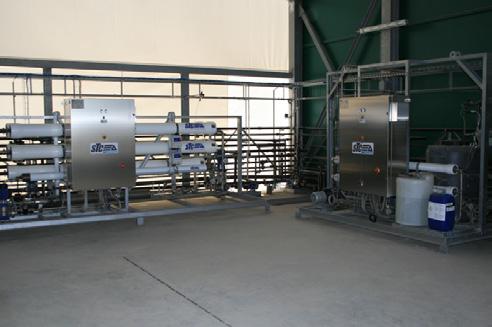
S T C d e s i g n s a n d s u p p l i e s a f u l l r a n g e o f p l a n t s , s e r v i c e s a n d e n g i n e e r i n g s o l u t i o n s f o r W a t e r a n d W a s t e W a t e r t r e a t m e n t s p e c i f i c a l l y d e s i g n e d f o r B A T T E R Y
M A N U F A C T U R I N G , B A T T E R Y R E C Y C L I N G ,
L E A D P R O D U C T I O N O u r s o l u t i o n s i n c l u d e :
P u m p
E v a p o r a t i o n U n i t
H e a v y M e t a l s R e m o v a l
E l e c t r o l y t e C o n c e n t r a t i o n
T h e p l a n t s a r e m o d u l a r , s k i d - m o u n t e d c o m p l e t e o f p i p i n g , i n s t r u m e n t a t i o n a n d e l e c t r i c a l c o n n e c t i o n t o a l o c a l p a n e l w i t h
P L C r e a d y f o r I n d u s t r y 4 0
NEWS www.batteriesinternational.com Batteries International • Winter 2022/23 • 21
U l t r a p u r e w a t e r p r o d u c t i o n f o r B a t t e r y M a n u f a c t u r i n g N e u t r a l i z a t i o n o f w a s t e w a t e r a n d s u l p h u r i c a c i d E l e c t r o l y t e F i l t r a t i o n a n d H e a t
www.stcitaly.com




Port Pirie back in operation as Nyrstar launches ‘early works’ on product recycling facility
Nyrstar is restarting its Port Pirie lead smelter in South Australia following a planned 55-day outage.
The shutdown, which began last October, was part of an AUD45 million ($28 million) works and maintenance programme — focused on rebricking the hearth of the top submerged lance furnace, as well as major capital works in the blast furnace, acid plant and across the site.
A Nyrstar spokesperson told Batteries International on January 4 that the plant was restarting production, having concluded work to “further support improvement of Port Pirie’s emissions and operational performance”.
Meanwhile, the spokesperson confirmed the start of “early works” on its product recycling facility at Port Pirie aimed at further reducing lead in air concentrations.
Once completed, the facility will be sealed and under negative air pressure, allowing intermediate materials used in the production process to be stored
and mixed in an enclosed facility.
The facility will be built near existing processing plants to “reduce the handling and transport of materials in the open air”, Nyrstar said.
South Australia’s state government is contributing AUD7 million to the AUD23 million project.
Port Pirie general manager Mat Lynn said: “Nyrstar Australia will continue
to focus on how we can continue to improve our operations to reduce lead in air concentrations and complement the targeted lead abatement program and actions of the state government, Port Pirie Regional Council and people of Port Pirie to reduce lead levels within the local community.”
In June 2020, Port Pirie signed a new licence agreement with Australia’s
Environment Protection Authority to cap emissions by 20% as well as submit a comprehensive lead monitoring plan.
The Port Pirie smelter has been in continuous operation for more than 130 years on the Port Pirie river, 230km north of Adelaide. The plant is one of the world’s largest multi-metal smelters, producing lead, silver and by-products such as sulphuric acid.
Aqua Metals gives battery metal recovery update
Aqua Metals said on January 11 it had recovered its first battery metal from spent lithium-ion batteries at production scale by electroplating.
The company claimed its pilot Li AquaRefining system had proven its ability to remove impurities and trace metals from tons of recycled lithium battery black mass and then “selectively recover pure metal using electricity” instead of using furnaces or chemical processes.
Aqua Metals is one of several firms competing in the space for environmentally friendly recycling of lithium battery parts. RecycLiCo Battery Materials (formerly American Manganese) announced in November significant advances in its hydrometallurgical testing and its demonstration plant has now advanced to the next stage of the RecycLiCo patented process to demonstrate lithium recovery at demo-scale.
Aqua Metals says copper
is the first of the products to be recovered using the process and the company said it intends to follow by recovering lithium hydroxide, nickel, cobalt, and manganese dioxide.
Aqua Metals president and CEO Steve Cotton said the move represented a “significant milestone” towards supporting development of a US domestic supply chain for materials essential to electric vehicle and battery energy storage system manufacturers.
New Nour battery recycling unit ‘operational by spring’
A new lead battery breaker plant supplied by Italian engineering company STC for Tunisian battery producer Nour is to start operations before spring, Batteries International has learned.
STC said last April that it had been awarded a $5 million contract to supply a lead battery recycling plant to Nour.
An STC spokesperson said on January 4 that production of the five-tonnes-
per-hour unit had been completed on schedule and was in the pre-assembly stage ahead of delivery.
Installation of the unit will be carried out by technicians of STC, which is part of the Monbat group.
Technology featured at the plant will include the company’s novel ‘U4Lead’ paste desulfurization tech, which STC says will produce “highly desulfurized lead paste and ammonium
sulfate as a by-product, which is easily saleable as fertilizer”.
The facility will comprise an automated scrap batteries feeding system, together with systems for magnetic metals separation, battery crushing with an STC hammer mill, components separation, paste filtration with membrane squeezing, a fully automatic filter press, electrolyte collection and neutralization and a
general ventilation and gas scrubbing system.
STC said the components separation system will be able to recover polypropylene chips, PE separators, fine metallic lead, poles and posts, fine paste, coarse paste and clean electrolyte. The Nour recycling deal was agreed following Monbat’s formal acquisition of a 60% stake in Nour, announced on April 6 in 2022.
RECYCLING NEWS www.batteriesinternational.com Batteries International • Winter 2022/23 • 23
Gravita forecasts recycling boom, but fewer participants
The CEO of lead recycler
Gravita India has welcomed the introduction of a series of regulations to ensure lithium ion and other batteries are disposed of responsibly and of which some are subject to waste management rules that currently only apply to lead batteries.
Yogesh Malhotra also welcomed plans to introduce a national online system of tradeable EPR certificates, similar to carbon credits, which he said “created opportunities for recyclers” such as Gravita in terms of buying waste batteries on the domestic market and exporting recycled lead products.
He said as new regulations start to force unregulated recycling out of the market, he expects this will eventually lead to consolidation of only around 20 or so main industry recycling players in India.
However, he said there would still be scope for the reduced number of recyclers to increase overall lead production by two to three times current levels in
the years ahead.
Gravita, which has a panIndia presence, could see even higher growth, he said.
Malhotra told a secondquarter earnings call on November 3 the rules, some of which supersede regulations dating back to 2001, are designed to crack down on unregulated battery recycling and ensure all such activities are managed in “a proper, organized manner”, as is the case with lead batteries.
The new rules apply to entities involved in the collection, segregation, transportation, refurbishment, and recycling of waste batteries, in addition to producers and those already covered by existing rules.
“If we can shift away from the disorganized processes we have now, that is going to help companies such as Gravita,” Malhotra said.
He also welcomed incoming ‘extended producer responsibility’ (EPR) requirements — which will make producers responsible for the collection, recycling or refurbishment of waste bat-
teries, and for the use of recovered materials from waste.
EPR requires all waste batteries to be collected and sent for recycling/refurbishment and it prohibits disposal of batteries in landfills or by incineration.
The EPR regulations are being finalized and should enter into force within six months, Malhotra said.
In addition, battery producers will be required to register with the Central Pollution Control Board, submit an EPR plan and file regular returns detailing information on waste batteries collected or received.
Malhotra revealed that Gravita expects to expand its lead production capacity to 425,000 tonnes by 2026, on the back of increased investment in recycling facili-
ties in India and abroad.
The company’s Ghana lead battery recycling plant is currently one of its biggest and producing around 16,000 tonnes per annum, he said.
Gravita as a whole boosted its lead production capacity by around 6% in the first half of financial year 2023 (which began last March) from 159,000 tonnes to 168,000 tonnes, compared to the corresponding period a year ago.
In terms of future prospects for the company, Malhotra said diversification will lead to at least 25% of its business by 2025-26 coming from recycling commodities other than lead — such as aluminium and plastic — and in future, lithium, copper and paper.
ACE partners Tabono for Africa recycling
ACE Green Recycling is teaming up with Tabono Investments to build and operate battery recycling facilities for lead and lithium ion batteries in South Africa, the firms announced on December 13.
The partners have signed the term sheet to form a joint venture to build and operate two plants on greenfield sites that will separately process and recycle lead and lithium ion batteries using
ACE’s technology, which it claims operates without fossil fuel-based heating.
Under the partnership, ACE will have a 51% ownership of the joint
venture to Tabono’s 49%.
Tabono co-founder Reon Barnard said that the business aimed to help South Africa retain valuable battery materials such as lithium and cobalt, which might otherwise be lost without recycling.
ACE’s vice-president for global strategy and business development Farid Ahmed said in July 2022 that the company was on track to produce refined lead in the US towards
the end of 2023. Some industry commentators say that the hydrometallurgical process for battery recycling is fraught with potential commercial and technical difficulties, making such projects unfeasible (see Batteries International issue no 121).
However, Ahmed said ACE expects production to start at the plant it is building in Texas around the fourth quarter of 2023.
RECYCLING NEWS 24 • Batteries International • Winter 2022/23 www.batteriesinternational.com
“If we can shift away from the disorganized processes we have now, that is going to help companies such as Gravita”
Yogesh Malhotra, CEO, Gravita
Under
the partnership, ACE will have a 51% ownership of the joint venture to Tabono’s 49%
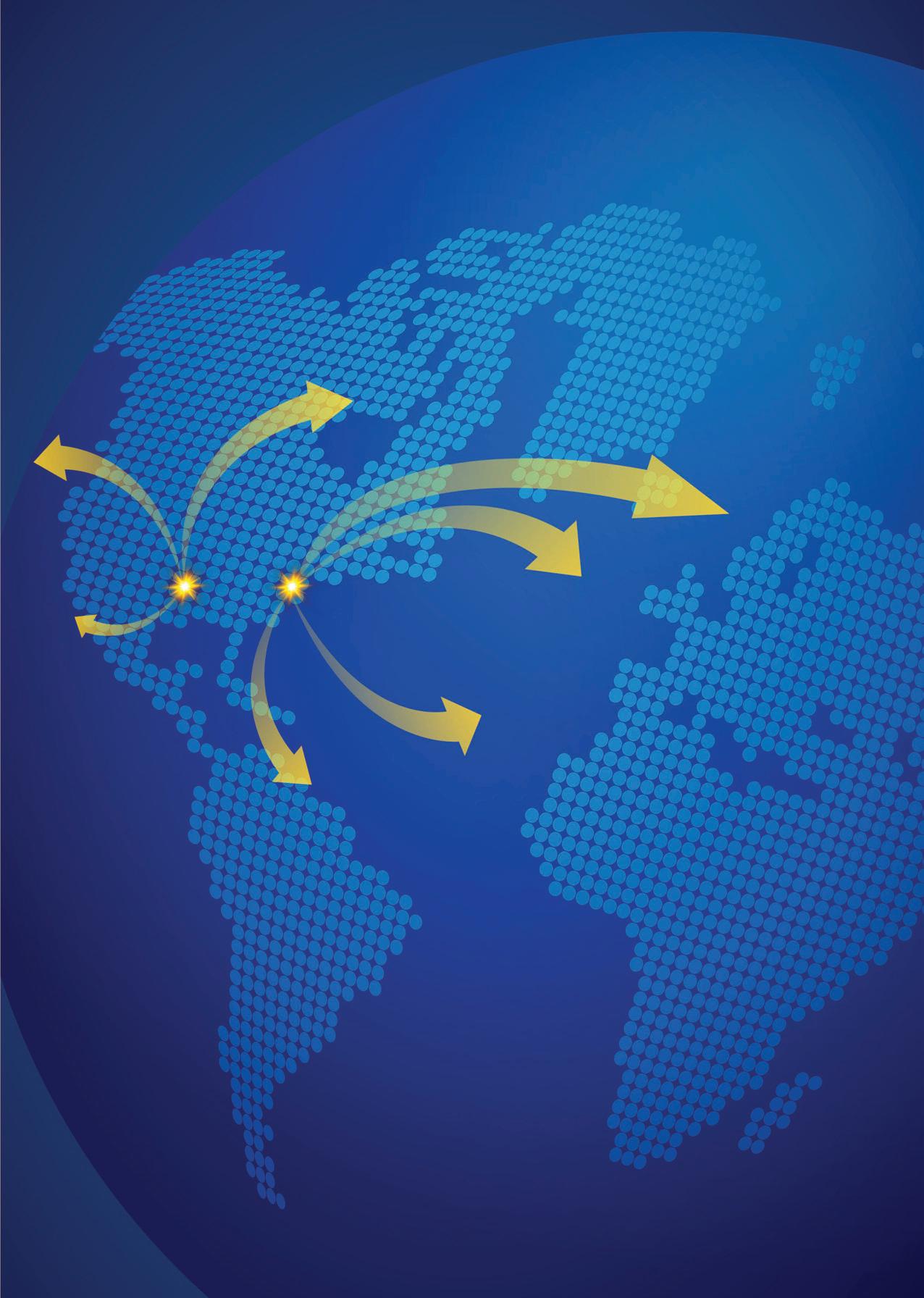

ATOMIZED PRODUCTS GROUP, INC. atomizedproductsgroup.com info@atomizedproductsgroup.com SERVICE VALUE QUALITY TEXEX ® NEGATIVE EXPANDER Expanding the Possibilities Your Trusted Partner APG produces our TEXEX® Negative Expander in our Texas and Virginia locations using the best raw material components from around the world. We export our products to over 20 countries where they are used by many of the largest battery manufacturers. We offer a comprehensive line of expander formulations designed for a variety of battery applications. After 25+ years of business, we are still proudly family owned and operated!
Recharge Industries and Accenture gets set to build 30GWh
Recharge Industries announced on January 16 that Accenture, the Dublin-based information technology services firm, will be its engineering and design provider to build its gigafactory in Australia.
The large-scale lithium-ion battery cell production plant, to be located in Geelong, Victoria, at full capacity will generate up to 30GWh of energy storage per year. Recharge Industries says it will make it one of the world’s
gigafactory
largest. Building will start in the second half of 2023, with the goal of producing batteries equal to 2GWh annually in the second half of 2024 and 6GWh by 2026.
At full capacity, the factory will employ up to 2,000 workers.
Recharge Industries has secured the production equipment for the first 2GWh production line, which is scheduled to arrive in Australia in May.
The two companies will
Asahi Kasei wins China patents legal battle
Asahi Kasei revealed on January 10 that it had won a series of court challenges in China to protect its patent for lithium ion battery separators.
The Japanese tech firm said a final ruling by China’s supreme people’s court, handed down on November 2, has ended four years of legal wrangling concerning Li battery separator patents in Asia.
The final ruling brought to an end a protracted legal battle launched in August 2018, when Asahi filed a patent infringement lawsuit with the Shenzhen intermediate people’s court against Shenzhen Xu Ran Electronic Co Ltd and others.
The move sought to prohibit the companies from selling their ‘single-layer Wscope’ battery separators in China and to receive damages for patent infringement amounting to a total of Rmb1 million ($148,000).
Asahi said its claim was initially accepted in full by the supreme people’s court in December 2020.
However, Xu Ran then tried to have Asahi’s patent invalidated — a bid that was rejected by the China
in Australia
also collaborate with Charge CCCV (C4V) a technology partner of Recharge Industries, to support the project’s timing. C4V will provide IP, supply chain blueprints and technology concepts for battery manufacturing, which will accelerate the project.
Rob Fitzpatrick, CEO of
Recharge Industries, said: “Establishing a sovereign manufacturing capability to produce state-of-the-art lithium-ion battery cells is critical to Australia’s renewable energy economy — meeting national demand, generating export income and securing supply chains.”
National Intellectual Property Administration and also by the Beijing Intellectual Property Court, which handed down its decision in September 2021.
Xu Ran made a final appeal to the supreme people’s court, whose November ruling ends the matter.
Asahi said it is paying close attention to protect its intellectual property rights, warning that it stands ready to deal with infringements.
A new initiative using residential solar and battery storage systems to create a virtual power plant has been launched in California, the Sacramento Municipal Utility District (SMUD) and not-for-profit electricity supply firm Swell Energy announced on December 22.
The VPP aims to boost energy supply reliability and initially should give the district 10MW/20MWh of renewable capacity by recruiting, installing and aggregating capacity from customers’ battery storage systems in the utility’s service area.
However, the project
could eventually be scaled up to 27MW/54MWh.
The initiative should start operating in April, with contract capability based on a two-hour deliverable capacity.
Around 600 SMUD customers already have domestic energy storage systems, with an additional 400 finalizing interconnections and “thousands more” projected over the next several years, according to the district.
SMUD chief zero carbon officer Lora Anguay said: “As more customers add solar panel systems paired with battery storage solutions, they’ll be better able to manage their carbon footprint.”
Italvolt enters strategic collaboration with StoreDot for XFC lithium-ion batteries
Italvolt, the Italian gigafactory developer, announced it had entered into ‘a strategic collaboration’ with Storedot, a lithium-ion battery developer, on January 16.
Italvolt will license StoreDot’s extreme fast charging technology (XFC) and IPR to manufacture XFC lithium-ion batteries at its plant, which is to start production in 2024 in Turin, Italy.
The agreement between the two companies will
allow Italvolt to scale and upgrade its battery cell production.
It also enables StoreDot to buy Italvolt’s batteries for its own business, once production is complete.
StoreDot’s ‘100inX’ product roadmap has an ambition to develop advanced battery cells capable of 100 miles of drive range in five minutes’ charge by 2024, reducing to three minutes by 2028 and two minutes by 2032.
Lars Carlstrom, founder
and CEO of Italvolt, said, “Our collaboration with StoreDot is an inflection point in our journey to deliver high-quality, lithiumion battery cells, at scale.”
Doron Myersdorf, CEO of StoreDot, said, “This agreement lets us obtain captive capacity so we can guarantee supply of cells to our future OEM customers. It is extremely important that StoreDot creates these strong relationships as we rapidly move towards mass production.”
ENERGY STORAGE NEWS 26 • Batteries International • Winter 2022/23 www.batteriesinternational.com
Sacramento VPP aims to deliver 27MW/54MWh
Morrow signs deal for Norway battery plant shipments
Morrow Batteries has signed a logistics services agreement with Rhenus Norway for delivery of production equipment for its Norwegian battery cell factory, marking the starting point for Morrow’s operations through the deep water port of Eydehavn in Arendal, the company announced on January 11.
Lars Christian Bacher, who took over as CEO of Morrow on December 1, said the agreement includes the establishment of a new logistics hub.
“We are teaming up with an innovative and flexible agent. Rhenus Norway has developed a solution combining sea freight, integrated European locations han-
dling and last-mile services in Arendal, tailored for this highly demanding logistics project,” Bacher said.
Norwegian prime minister Jonas Gahr Støre laid the cornerstone of Morrow Battery’s battery cells gigafactory on the country’s south coast in a ceremony last September.
Støre said Battery Factory
1, under construction in Arendal, was essential to his government efforts to make Norway an “attractive host country for sustainable and profitable activity along the entire battery value chain”.
Morrow has teamed up with Siva — the Industrial Development Corporation of Norway — in establishing a joint company to build the 30,000m2 plant in four phases with construction company Veidekke, at a cost of NOK400 million ($38 million).
Energy Vault in potential 700MWh
‘green hydrogen’ long duration BESS
Energy Vault Holdings is working with US utility Pacific Gas and Electric (PG&E) on plans to build a battery plus ‘green hydrogen’ long-duration energy storage system (BH-ESS) that will have a minimum capacity of 293MWh, the partners announced on January 5.
The system’s capacity could eventually be expanded to 700MWh.
The move comes after Energy Vault chairman and CEO Robert Piconi said in a third-quarter earnings update on November 14 that the introduction of green hydrogen into its technology portfolio “further validates our technical differentiation with our energy management software platform and the market for hybrid short and long duration integrated systems”.
Piconi said the company was positioning itself as the only energy storage company offering “a hardware agnostic portfolio of both short and long duration storage solutions, bringing innovative gravity, green hydrogen and hybrid solutions to the market for the first time”.
The system for PG&E, if given the go-ahead by the California Public Utili-
ties Commission, would be owned, operated and maintained by Energy Vault on a one-acre site. It would be the first project of its kind and the largest utility-scale green hydrogen project in the US, the company said.
BH-ESS includes a hydrogen fuel cell powered by electrolytic hydrogen derived from renewable energy sources. Green hydrogen, also called renewable hydrogen, is produced through the electrolysis of water. The process is powered entirely
by renewable energy. The system will replace mobile diesel generators typically used by PG&E during broader grid outages to maintain its microgrid serving downtown and the surrounding area of the Northern California City of Calistoga.
Construction is to begin in the fourth quarter of 2023 with commercial operation by the end of second quarter of 2024.
Regional P&G VP Ron Richardson said: “This
breakthrough collaboration provides a template for future, renewable community-scale microgrids that successfully integrate thirdparty distributed energy resources, which is expected to cost customers less than the benchmark set by state regulators based on the alternative use of mobile diesel generators.”
Last May, Energy Vault said it had broken ground on its first gravity-based energy storage system in China.
Saft wins Meridian Energy contract to build New Zealand’s first large-scale BESS
Saft, a subsidiary of oil giant TotalEnergies, said on January 10 it had won a contract from New Zealand power firm, Meridian Energy, to build that country’s first large-scale grid-connected BESS.
The 100MW/200MWh facility, to support grid stability as renewable power generation increases, should enter service in the second half of 2024.
The BESS is the first stage of a project that will include the building
of a 130MW solar farm by Meridian, sharing the same location at Ruakaka in the country’s North Island.
The BESS will include 80 Intensium Shift battery containers, based on lithium iron phosphate technology with 40 inverters, 20 mediumvoltage power stations and a power management system provided by third-party suppliers. Saft will integrate this equipment with Meridian and Transpower 33kV switchgears, SCADA and
power station.
This will open multiple new revenue streams for Meridian, with the ability to load shift between price periods and participate in the North Island reserve electricity market. Meridian anticipates that the BESS will deliver annual revenues of up to US$35 million.
Neal Barclay, CEO of Meridian, said, “The shared infrastructure provided by the BESS will significantly improve the economics of the future solar farm.”
ENERGY STORAGE NEWS www.batteriesinternational.com Batteries International • Winter 2022/23 • 27

www.wirtzusa.com
TPPL batteries have advanced...but has your manufacturing process? The demand for reserve power and energy storage is rising, from data centers to submarines. Wirtz has the experience and solutions for ALL your TPPL process needs - start to finish. Our proven ConCast grid casting combined with our plate pasting process technology is ideal for producing and handling pure-lead and lead-tin alloy grids. For optimum grid performance, high-speed production, and consistent quality–it can only be Wirtz.

INNOVATIVE | RELIABLE | PERFORMANCE OVER A DECADE OF TECHNOLOGIES AND PROCESSES UTILIZED FOR • GRID CASTING, PASTING • PLATE STACKING • OFF LOADING • PALLETIZING Discover the benefits and market advantage your company can experience from our TPPL process by calling +1.810.987.7600 or emailing sales@wirtzusa.com The Wirtz Group of Companies THIN PLATE PURE LEAD your one source solution CONTINUOUS TPPL


Redwood to start work on US battery materials site in $3.5bn investment
Redwood Materials plans to break ground for a cathode components processing complex in the US state of South Carolina in the first quarter of this year as part of a $3.5 billion investment in the region, the company announced on December 14.
Redwood said its ‘battery materials campus’ (pictured) outside Charleston will recycle, refine and manufacture anode and cathode components on a site spanning more than 600 acres. Initial operations are expected to start by the end of this year.
The campus will eventually produce 100GWh of cathode and anode components a year, which Redwood said is enough to power more than one million EVs. Pro-
duction capacity could be expanded to “potentially several hundred GWh annually”, the Nevada-based recycler said.
The site will form part of a new manufacturing corridor from Michigan to Georgia, becoming known as America’s ‘battery belt’, where hundreds of gigawatt-hours of battery cell production capacity annually are set to be built and start operating between now and 2030.
Redwood said the move is needed because anode and cathode components are not yet produced in North America and battery cell manufacturers have to source them from a global supply chain of more than 50,000 miles.
“As a result, US battery
manufacturers will spend more than $150 billion overseas on these components by 2030,” the firm said.
Charleston will be similar to Redwood’s Nevada operations in that the site will be 100% electric and will not use fossil fuels, Redwood claimed.
The Charleston project follows Redwood’s November 15 announcement that
it would supply recycled materials for use in Panasonic Energy’s EV lithium ion batteries.
Recycled copper foil will be used in batteries made at Panasonic Energy of North America’s plant in Nevada starting in 2024. Recycled cathode active materials will be used in batteries manufactured at Panasonic’s new facility in Kansas starting in 2025.
Russia gigafactory plan is ‘first step toward batteries independence’
Russia’s prime minister Mikhail Mishustin says work has started on the first of a potential series of gigafactories as it scrambles to ramp up domestic battery manufacturing capacity for energy storage systems and EVs, after foreign investors and partners quit the country over the war with Ukraine.
Mishustin told a meeting of deputy prime ministers on December 26 that Russia had to achieve “technological sovereignty” for the automotive industry in particular — and state-owned corporation Rosatom had started building a 4GWh lithium ion batteries plant in the Baltic Sea enclave of Kaliningrad. The plant should start operations in 2025.
“We will need to create conditions for saturating the domestic market with cars, while many foreign
corporations have left Russia under pressure from their authorities, and to create our own components base with the widest possible range, from the simplest parts to complex elements,” Mishustin said.
Russia must also “create an infrastructure for charging stations” for EVs, he said.
Rosatom announced on November 23 that it had established a new subsidiary — Renera — dedicated to the manufacture of energy storage systems.
Lithium ion batteries are already being produced by Rosatom, but the group said Renera’s task would be to coordinate and expand manufacturing capacity and “consider” building additional gigafactories.
Kaliningrad, which lies between Poland and Lithuania, does not border mainland Russia but is home to Russia’s Baltic
fleet. Rosatom says the Kaliningrad gigafactory will produce 50,000 EV batteries annually.
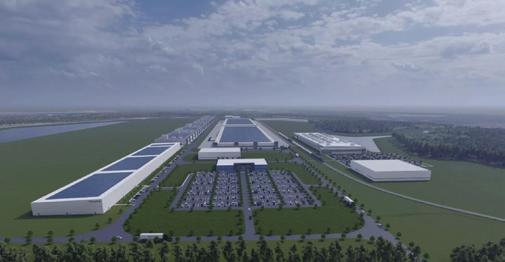
US-based battery producer EnerSys announced last March that it was suspending its operations in Russia following the country’s “illegal military action against a sovereign Ukraine”.
Last April, Batteries International reported that tougher new EU proposals to restrict trade with Russia were likely to include exports of lead batteries and related battery tech products and services.
Lithium battery systems manufacturer BMZ Group said on September 15 it intended to acquire a stake in German plastics supplier Schütz Kunststofftechnik, in part to shore up its materials supply chain.
BMZ said it would act as a strategic investor in
supporting its supplier of battery cell holders.
The planned deal would give Schütz access to BMZ’s network of clients, including those in the energy storage and e-mobility sectors.
Schütz is a longstanding supplier of cell holders and spacers installed in BMZ battery systems.
BMZ founder and CEO Sven Bauer said: “Procurement bottlenecks, price developments and a shortage of skilled workers means we are in very challenging economic times. At the same time, our market is a future-proof growth industry.”
Strategic partnerships that enable BMZ to secure and expand its market presence “are only logical”, he said.
Schütz managing partner Michael Schütz said the investment deal was “a door opener for new sales markets, across industries and worldwide”
ENERGY STORAGE NEWS www.batteriesinternational.com Batteries International • Winter 2022/23 • 31
Nala’s Belgium BESS set for commercial start
UK-headquartered Nala
Renewables is on course to start commercial operations at one of Belgium’s largest battery energy storage systems to date in the first quarter of this year, joint owner Trafigura said on December 8.

The 100MWh Balen lithium ion battery project (pictured) involves investment of up to €30 million ($32 million) said Trafigura, which is the 50-50 partner with IFM Investors.
BASF in materials supply first for Toyota-Panasonic joint venture firm
BASF has delivered the first batch of customized nickelcobalt manganese cathode active materials (CAM) for high performance EV battery cells being produced by the Toyota-Panasonic joint venture Prime Planet Energy & Solutions (PPES).
BASF said on December 19 that its majorityowned BASF Toda Battery Materials company
produced the CAM at its Onoda calcination plant in Japan. Work to expand cell production capacity at Onoda to up to 45GWh is underway and the increased capacity will come online in the second half of 2024.
Toyota holds a majority 51% stake in PPES, which started operations in April 2020 to produce automotive prismatic batteries.
Construction launch for Neoen’s 200MW Blyth Battery in South Australia
Neoen said on January 5 had launched construction of its 200MW/400MWh Blyth Battery in South Australia.
Blythe is one of seven new grid-scale battery projects across the country that will be supported in part by financial backing from the Australian Renewable Energy Agency.
NHOA Energy will be the battery storage specialist for the project. Details of the battery tech were not disclosed, but NHOA produces a range of lithium ion-based energy storage systems.
Blyth will mainly be deployed in combination with Neoen’s Goyder South Stage 1 wind farm to deliver 70MW of renewable baseload energy to mining group BHP. Neoen said the energy will power BHP’s Olympic Dam operations in South Australia.
The construction period will last between 12 and 16 months and the battery will be Neoen’s fifth biggest in the country, taking the company’s overall Australian asset portfolio close to 3GW in operation or under construction.
Balen is being built at a zinc smelting facility owned by Trafigura subsidiary Nyrstar.
Trafigura said the BESS will be able to store 25MW for more than four hours and provide stability and balancing services for the Belgian grid, as well as help shift renewable energy pro -
duction into high-energy demand periods.
Nala is developing renewable energy generation and storage assets in Belgium, Chile, France, Greece, Netherlands, Poland and the US.
The company has grown its renewable energy asset portfolio to 2.8GW and is on track to meet its 4GW target by the end of 2025, Trafigura said.
Nala announced last March that it would also be developing four new BESS projects in New York State.
The company is working with New York-based power and infrastructure firm, Rhynland Energy, to start building the facilities by mid-2024. The units will have a combined storage capacity of 280MW.
US ‘set for 1,000GWh surge in EV battery capacity by 2030’
EV battery manufacturing capacity in North America is set to accelerate from 55GWh annually in 2021 to nearly 1,000GWh by 2030 as a wave of new manufacturing facilities come online, according to a US government forecast published on January 2.
The figures underline separate analysis, which indicated that the US is outpacing Europe in the battery gigafactories investment race, following tax incentives unveiled by the federal government in the Inflation Reduction Act last August.
According to the latest forecast by the federal Vehicle Technologies Office, most of the announced battery
plant projects are to begin production between 2025 and 2030.
By 2030, this production capacity will be capable of supporting the manufacture of roughly 10 to 13 million allelectric vehicles per year, the report said.
Many of the battery plants will be co-located with automotive plants to optimize supply chains, according to the report.
Most of the planned projects in the US are concentrated along a north-south band from Michigan to Alabama. Based on current plans, Kentucky, Tennessee, Georgia, and Michigan are projected to see the highest growth in battery manufacturing capacity.
ENERGY STORAGE NEWS 32 • Batteries International • Winter 2022/23 www.batteriesinternational.com
$58bn pledged for long duration storage projects since 2019
Commitments have been made to invest more than $58 billion in long duration energy storage (LDES) projects around the world since 2019, according to analysis released on December 7 by Wood Mackenzie.
If all of the pledges made by governments and companies went forward, it would lead to the installation of 57GW of LDES projects — equivalent to three times the global energy-storage capacity deployed in 2022, says Wood Mac’s Longduration energy storage report 2022.
The report said projects representing $30 billion are already either under construction or in operation.
However, most LDES technologies are still nascent and developers will “struggle” to scale costeffectively before 2030.
The report also showed what are described as clear geographical disparities in the development of the LDES market. For the Asia Pacific region, the deployment of vanadium redox flow batteries and compressed air energy storage has accelerated rapidly in China, which has been largely driven by strong policy support.
Kevin Shang, senior research analyst at Wood Mac and report lead author said: “In the western hemisphere, the US continues to invest in and build its LDES industry, with companies actively pushing for innovation, and promoting pilot and demonstration projects.”
By contrast, most European countries have been less enthusiastic, said Shang, although the UK government has been an exemption, as it explores the role LDES technologies have to offer, while actively
seeking to support industry players.
“Long-duration energy storage technology, with longer durations of eight to approximately 100 hours, holds great promise as a low-cost solution to enable a grid with more renewable sources.”
Wood Mac said support from governments is needed to help lower upfront capital costs, provide revenue certainty, and “generate market signals for investment” and the broader deployment of projects.
However, companies need to create new business models to attract private investors with a view to making profits without subsidies in the long term.
Amara Raja building lithium cells plant in Telangana
Amara Raja Batteries has agreed to a build a 16GWh lithium battery cells factory together with research facilities in the southern Indian state of Telangana, the company confirmed on December 2.
The lead batteries major said the new plant would include a 5GWh battery pack assembly unit, under the terms of a memorandum of understanding signed with the state government.
Amara Raja chairman and MD Jayadev Galla said Telangana would become the company’s ‘giga corridor’, featuring advanced laboratories and testing infrastructure for material research, prototyping, product life cycle analysis and proof of concept demonstration.
He said the partnership with Telangana was “a giant leap for Amara Raja and will bring in the impetus for innovations in sustainable technologies for the whole region, in addition to generating employment opportunities”.
The partnership follows Amara Raja’s launch of a new subsidiary, announced on November 3, to spearhead the addition of lithium ion tech to the group’s lead battery manufacturing operations.
The company said then that a site for the subsidiary’s “multigigawatt” battery cells facility would be confirmed soon.
RPC partners BESS firm Eelpower to target UK market
Renewable Power Capital has announced its entry into the battery storage market in Great Britain in a partnership with BESS constructor-owneroperator Eelpower.
RPC said on November 23 that the joint venture will acquire, build and operate utility-scale projects and is targeting up to 1GW of storage capacity with a near-term 240MW projects pipeline.
The partners will take part in wholesale electricity markets and provide ancillary services to the UK’s National Grid.
RPC’s focus on the UK market follows its recent acquisition of a 528MW ready-to-build onshore wind portfolio in Sweden.
London-headquartered RPC was established in 2020 and is backed by the Canada Pension Plan Investment Board — operating as CPP Investments.
Since its formation, RPC has committed nearly €1.5 billion ($1.6bn) in acquisitions including wind and solar PV in Spain and the Nordics.
According to RPC, Great Britain represents the largest utility scale battery storage market in Europe with 1.7GW installed by the end of 2021 and with growth forecast to be up to 10GW by 2030 on the back of increases in renewable power
generating projects.
Eelpower announced in July that it had bought a 20MW lithium ion storage system from British firm Anesco for an undisclosed sum.
The Rock Farm battery storage system, which consists of 16 1.25MW BYD-made storage units, was developed, constructed and commissioned by Anesco in June.
‘Europe’s largest BESS’ goes online in England
Investment firm Harmony Energy Income Trust, an investment firm announced on November 21 that its Pillswood project, in Yorkshire, UK had gone live some four months’ earlier than previously planned.
The 98MW/196MWh facility is the largest BESS project in Europe by MWh, Harmony said. This is equivalent to power around 300,000 UK homes for two hours.
The project, using a Tesla two-hour Megapack, will provide balancing services to the UK electricity grid network, underpinning energy security and enabling the replacement of coal and gas power stations to renewable power sources.
Pillswood sits next to the National Grid’s Creyke Beck substation. This is planned to be the connection point for Phase ‘A’ and ‘B’ of Dogger Bank, the world’s largest offshore wind farm. Its first phase should go live in summer 2023.
The project was developed by Harmony Energy with construction managed by Tesla. Pillswood will be operated through Autobidder, Tesla’s algorithmic trading platform which has a strong track record. Two of its projects have been the top performers in terms of revenue
ENERGY STORAGE NEWS IN BRIEF www.batteriesinternational.com Batteries International • Winter 2022/23 • 33
generation in the UK this past year.
Harmony Energy Advisors director Peter Kavanagh said: “All stakeholders have recognized the importance of achieving energization for this project ahead of winter to ensure the BESS services can be provided during the initial winter months.”
Harmony Energy Income Trust has five battery energy storage systems under construction, set to go live next October and three new pipeline projects which will increase its portfolio to nine projects with a total capacity of 500MW/1GWh.
Canada clamping down on China investments
Canada has ordered Chinese companies to divest their holdings in three Canadian-listed junior mining companies planning to develop lithium deposits, in a bid to safeguard critical battery material supplies for the domestic market.
Industry innovation and science minister FrançoisPhilippe Champagne said on November 2: “While Canada continues to welcome foreign direct investment, we will act decisively when investments threaten our national security and our critical minerals supply chains, both at home and abroad.”
Champagne said the decision had been taken under the Investment Canada Act following a review, supported by the nation’s intelligence services, into Canadian firms engaged in the critical minerals sector, including lithium.
As a result of that process, the government ordered Sinomine (Hong Kong) Rare Metals Resources to divest itself of its investment in Power Metals Corp, which is
exploring and developing caesium, lithium and tantalum assets in Canada.
Chengze Lithium International was told to divest itself of its investment in Lithium Chile, which is developing projects in Argentina and Chile.
Zangge Mining Investment (Chengdu) was also required to divest itself of investment in Ultra Lithium — a publiclytraded Canadian mineral exploration company focused on advanced lithium and gold projects in Argentina, Canada and the US.
Champagne said the decision coincided with the finalization of the government’s critical minerals strategy.
“Canada’s critical minerals are key to the future prosperity of our country,” he said.
“Increasing demand for these all-important minerals are presenting Canada with a generational economic opportunity. The federal government is determined to work with Canadian businesses to attract foreign direct investments from partners that share our interests and values.
Power Metals chairman and CEO Johnathan More said on November 3: “While we are surprised by Canada’s stance towards Chinese investment into Canada’s critical minerals industry, it clearly shows that they see the opportunity and assets of Power Metals as too valuable for such foreign investment.”
More said then that Sinomine was looking into the appeal process.
Ultra Lithium said the announcement had been detrimental to its many Canadian shareholders and the company was “assessing its legal and other options to preserve value” for shareholders.
ESS lands Schiphol airport storage deal
Iron-based flow battery storage company ESS said on January 19 it had landed a deal to supply its long-duration storage system for a pilot scheme at Amsterdam’s Schiphol airport.
The company’s Energy Warehouse BESS will be deployed in the first quarter of this year.
For the pilot project, the BESS will be used to recharge electric ground power units (E-GPU) — which will replace the diesel ground power units currently used to supply electrical power to aircraft when parked, ESS said.
Oscar Maan, Royal Schiphol Group manager of innovation, said: “If this pilot is successful, this is a double win as it both reduces our carbon footprint and reduces air pollution.”
The project is part of the Royal Schiphol-led ‘Tulips’ consortium, funded by the EU, to speed up the rollout of sustainable technologies in aviation.
ESS announced last March that it was expanding its European operations — to meet expected demand for long-duration storage as the continent attempts to scale back its dependency on Russian gas.
ESS said the RussiaUkraine conflict was accelerating Europe’s ramping up of renewable power and gave new impetus for investments in long-duration energy storage as countries sought ways to reduce use of gas-powered generation of electricity.
According to ESS, the European region is to require up to 20TWh of long-duration energy storage capacity if it is to meet UN climate change goals of ‘grid net zero’ by 2040.
Tesla to use SolarEdge tech in Romanian solar project
A Tesla group company is to design and build rooftop solar installations in Romania on buildings for industrial properties developer Element Industrial using inverter technology from SolarEdge, the companies announced on January 19.
Tesla 50Hz said the first stage of the project, which will run for the next three to five years, will cover 250,000m2 of industrial parks, with a total installation of 40MW of industrial-scale photovoltaics.
With each PV installation providing independent onsite energy generation for Element industrial parks, the company will benefit from increased grid independence and power quality — and reduce electricity costs for Element’s tenants, the partners said.
The installations will be supported by T50Hz’s sister company, Tesla Blue Planet.
“This partnership reflects our strategy to develop a sustainable portfolio that will allow our tenants to cover at least 30% of their consumption from green energy,” said Element MD Andrei Jerca.
Jerca said all installations will be equipped with SolarEdge’s DC-optimized technology that connect to each power of the solar modules.
Last May, Israelibased SolarEdge announced the opening of a 2GWh battery cells manufacturing plant in South Korea to meet growing demand for battery storage.
SolarEdge said it would be producing cells at the Sella 2 facility with its lithium ion batteries subsidiary Kokam.
ENERGY STORAGE NEWS IN BRIEF 34 • Batteries International • Winter 2022/23 www.batteriesinternational.com
•Specializedverticalcuttingprocess
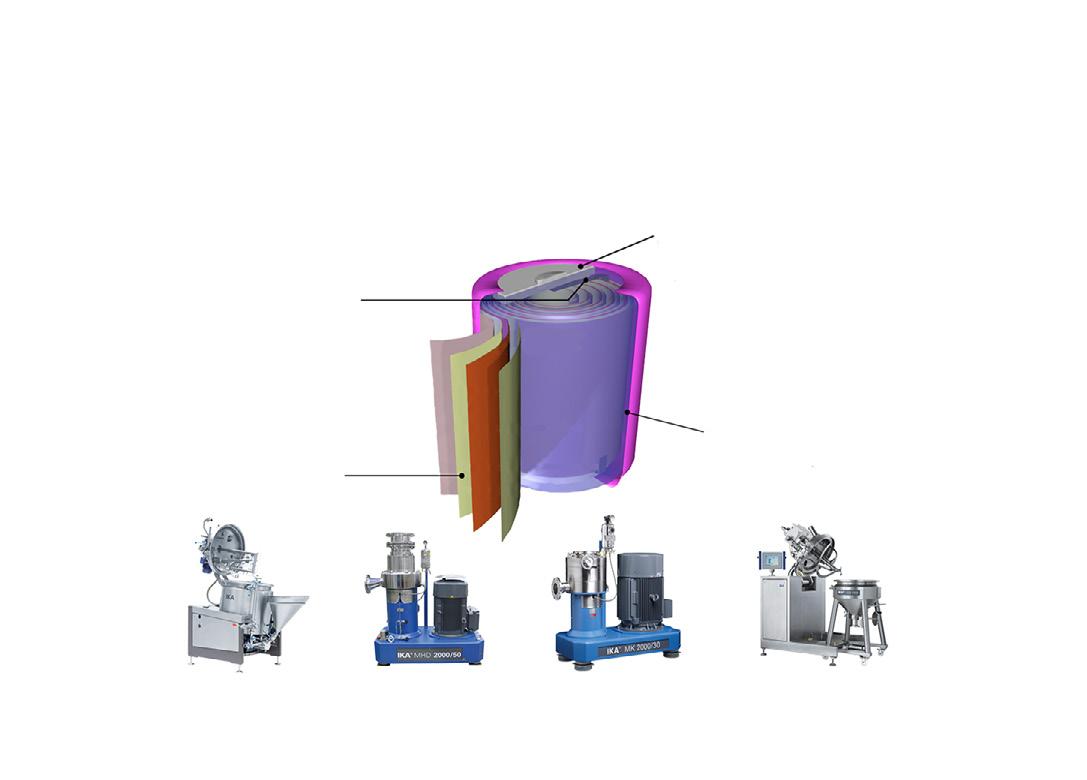
•Newhighvolumecapacityproductionfacility


•Modernstateoftheartproductionandlabfacilities


•Allfiberstypesavailable
•Worldwidedistributionandsupplybase
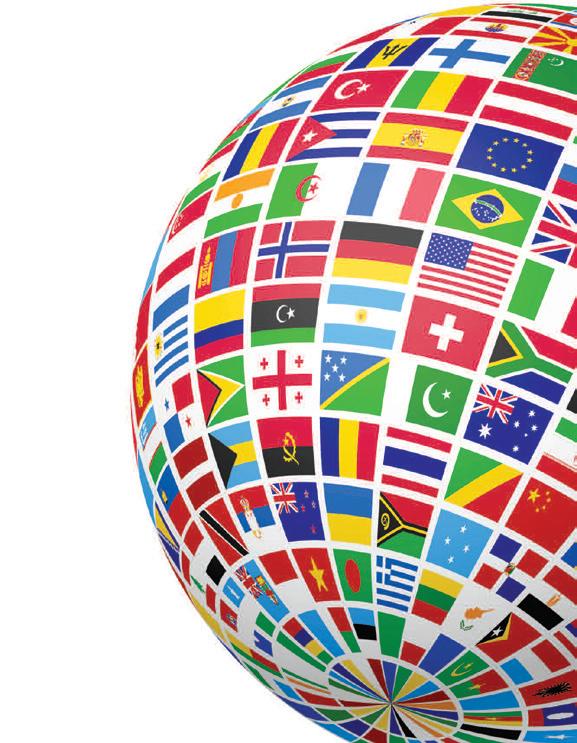
•ISO 9001:2015
1515ElmwoodRd. Rockford,Il61103USA
Tel:815-964-8619
Fax:815-964-7949 www.cellusuede.com
www.batteriesinternational.com Batteries International • Winter 2022/23 • 35
Consistencyyoucancounton...since1938
PrecisionPastingFibers CoveringTheGlobe
Time to fix Europe’s competitiveness problem

The Alliance, whose 800-strong membership includes companies involved in the battery supply chain, revealed talks had been held earlier in December, with EU Commission vicepresident and batteries czar Maroš Šefcovic.
He was told of the damage being done to Europe’s fledgling battery plans by billions of dollars in tax credits for plants being awarded under the US Inflation Reduction Act (IRA) — unveiled in August 2022 and which took effect on January 1 — plus similar support schemes in Canada, Japan and South Korea and Europe’s continued “unbroken dependencies” on Asia.
In a December 15 statement the Alliance, which was launched by Šefcovic in October 2017 to create an innovative, sustainable and globally competitive battery value chain in the EU, warned: “The upcoming weeks will be decisive for decision makers to act and prevent the outflow of investment from Europe.”
A make-or-break summit deciding Europe’s battery future looks set to be held by early spring Batteries International has learned. At issue is whether the continent can compete globally — and quickly enough — with its rivals.
This follows a warning that at least €100 billion ($106 billion) is needed to avert a potential investments meltdown for gigafactory plans, as the US and Asia is luring developers away with more lucrative deals and incentives.
Industry leaders and trade bodies issued a damning report in December
effectively accusing EU leaders of not doing enough to successfully steer policies aimed at creating a home-grown battery manufacturing industry.
The European Battery Alliance report cited a litany of failings, including how permit procedures for battery and raw materials projects in the EU and individual member states lacked “speed and clarity, compared with that of other global economies… contributing to additional risks and delays in investment and project execution”.
Batteries International understands a follow-up summit will be held in March, although the European Commission declined to comment as this issue went to press.
Meanwhile Commission executive vice-president Margrethe Verstager, who has responsibility for competition issues, wrote to all EU member states on January 16 to get their views on whether state-aid rules should be loosened further to allow governments to support companies that may be affected by the IRA.
Any relaxation of the rules would be in addition to the ‘temporary crisis framework’ adopted by the Commission last March, which was drawn up to support national economies in the wake of energy price hikes caused by Russia’s invasion of Ukraine.
A spokesperson for Verstager told
COVER STORY: EUROPE’S GIGA DREAM IN TATTERS 36 • Batteries International • Winter 2022/23 www.batteriesinternational.com
Europe’s ambition to become an EV batteries powerhouse could stall as lucrative US tax breaks lure gigafactory investors away and China extends subsidies. John Shepherd reports on EU crisis moves to salvage its electric dreams as industry leaders accuse policymakers of being asleep at the wheel
The EU lacks speed and clarity in handling permit procedures needed to launch battery and raw materials projects and still suffers from “unbroken dependencies” on Asia
Batteries International that member states had already used that “flexibility” to generate a total of more than €672 billion of funding so far, adding: “In the current context, however, more may be needed.”
Market fragmentation risk
The spokesperson did not refer explicitly to the IRA, but she said Verstager’s consultation would consider further simplification of EU state aid rules, possible new measures to accelerate the green transition and the need to “balance support for production in certain types of sectors strategic for the green transition with the possible risk of fragmentation of the single market”.

Industry insiders say Europe’s political leaders know they have to act fast. Independent analysis says the US is already outpacing the EU in the batteries investment race.
Meanwhile gigafactories being built in emerging markets such as India and Malaysia will have a combined battery production capacity of 104GWh by 2030.
Verstager’s letter to member states is, in part, a response to proposals discussed in the Alliance’s December round of talks with Šefcovic, which included calls for emergency measures to unlock more than €100 billon ($108 billion) of investments and speed up projects through 20232024.
The Commission was also urged to make the entire battery manufacturing chain, including raw materials through to recycling, a priority for cash awards under a planned new EU sovereignty fund.
If state-aid rules are loosened further, battery industry leaders say this could get cash quickly pumped into battery-related projects, together with the fast-tracking of planning applications and permits for batteryrelated projects.
An energy task force is also expected to be set up to ensure spiralling energy costs for industry in the wake of the Russia-Ukraine war are brought to a “competitive level” across the EU in the next two years.
The Alliance also urged EU chiefs to find ways to combine European measures with US incentives laws and create a “level playing field, where battery manufacturers producing in Europe compete on equal terms, independent of higher subsidies or lower sustainability standards in Asia and the US”.
WTO challenge
It is not clear if, when or how quickly the proposals might be adopted and the US is not expected to drastically dilute its renewed domestic support for battery manufacturing to help Europe overcome its own difficulties — Chinese and other Asian battery makers less so.
However, the nuclear option understood to be under consideration is to challenge US financial support for its battery production and related supply chain industries at the World Trade Organization (WTO).
This could be coupled with a review of existing EU trade rules, including duties for EV components and EVs from third countries with different regulatory requirements and incentive schemes.
Thierry Breton, the Commission’s internal market chief, discussed technological sovereignty and European industrial policy with French prime minister Elisabeth Borne on December 19, when he said there was no time to lose in formulating a response to the IRA.
The spectre of taking the US to the WTO, risking a full-blown trade war, does appear to be a real prospect. France’s economy and finance minister Bruno Le Maire and Germany’s vice-chancellor and economic affairs
minister, Robert Habeck, said in a joint statement after talks on November 22 that they would “closely coordinate a European approach to challenges such as the IRA… to prevent downside effects of protectionist measures by third countries and ensure that WTO rules are respected by all”. However, it remains to be seen just how EU leaders will agree on a coordinated response to pressures from Asia and the US. Swedish EU affairs minister Jessika Roswall, whose country took over the presidency of the EU for six months as of January 1, has been widely quoted as telling a conference in Stockholm just days later that “a subsidy race is not the answer” in tackling US competition.
US policy ‘game-changer’
Tensions between the EU and US are a far cry from the harmonious tones of less than two years ago, when in June 2021 Commission president Ursula von der Leyen and US president Joe Biden established the US-EU Trade and Technology Council with a commitment to renew and reinvigorate the transatlantic partnership and deepen cooperation.
Biden said during a visit to the White House last December by his French counterpart, Emmanuel Macron, he was confident “we can work
COVER STORY: EUROPE’S GIGA DREAM IN TATTERS www.batteriesinternational.com Batteries International • Winter 2022/23 • 37
Margrethe Verstagen consulting EU member states amid calls to challenge US tax credits for batteries sector.
Photo: Roberto Schmidt / EC-audiovisual service
The Inflation Reduction Act has been a game-changer in its potential to draw investments for battery manufacturing projects away from Europe to the US
out some of the differences that exist” over the IRA.
At the end of that month, in an attempt to reduce tensions, the US Treasury Department indicated in a white paper that some imported cars would qualify for EV tax credits under the IRA. However, the move has not cooled EU tempers.
A senior official in one of the European industry bodies that is closely involved in Brussels talks aimed at coordinating Europe’s response, said on condition of anonymity that it was “beyond doubt” that the IRA had been a “game-changer” in terms of its potential to draw more investments and battery manufacturing projects away from Europe to the US.

The problem for Europe is that there is still no clear plan of action by way of response, he said.
The official warned that there was a real risk, however small, that if part of Brussels’ response is to refer the issue of US incentives and subsidies to the WTO, this could trigger a trade war
that could further undermine recent EU-US efforts to forge closer economic ties.
Such a move would also undoubtedly see the US question its pledge to cooperate with the EU in shoring up energy supplies disrupted by Russia’s invasion of Ukraine.
“Some may argue that IRA-like tax incentives run the risk of creating boom and bust cycles for technology adoption, much as we have seen in the renewable industry in Europe over the last decade,” the official said.
‘No silver bullet’
However, he warned that if Europe were to launch a copycat economic strike to expand incentives and subsidies, especially for the energy storage sector, that in itself would not be a “silver bullet that is going to make the European Union the leader in this field”.
“If incentives are deployed, they must be coupled with other ambitious initiatives,” he said. Indeed, incentives can only work if energy storage
“already has a market-based path toward technology adoption” — but Europe still appears to be floundering.
He cited the example of US states such as California, where clear investment strategies have been put in place to actively encourage development of battery energy storage projects.
Industry initiatives in the state include the development of pilot programmes announced last May by utility Pacific Gas and Electric, working with auto giants such as General Motors and Ford, to test how bidirectional EVs and chargers can provide power to the grid.
Europe needs a “better energy market design, so that battery energy storage potential can be deployed in multiple sectors, such as microgrids for residential areas and supporting utilities at grid level”, the official said.

A spokesperson for the European Association for Storage of Energy (EASE) told Batteries International much still needed to be done beyond EV applications.
“While the Batteries Regulation focused extensively on EV batteries, which is to be expected as the market is huge, it is important to avoid focusing on that type of application alone.
“Energy storage uptake is extremely relevant and it’s a market where the EU can lead — we are talking about 200GW of storage needs in 2030 in Europe alone.”
In its review of energy policy developments for 2022, EASE said the Batteries Regulation draft approved by the European Parliament failed to reflect “the diversity of the battery ecosystem and could add regulatory complexity in an already extremely regulated segment, such as battery safety, recycling and reuse”.
The stark warnings of failings in EU policies to date have overshadowed the unveiling of what was supposed to be one of the jewels in its green energy policy crown, when it was announced on December 9 that a provisional deal had been agreed that would pave the way to introducing the long-awaited battery laws.
Now even that seems to be a hollow achievement. It immediately became clear that the new regulations still require secondary legislation to be passed between 2024 and 2028 before they can become fully operational — further highlighting, if it were needed, the glacial pace of decision-making in the EU at a time when the battery industry is crying out for urgent attention.
COVER STORY: EUROPE’S GIGA DREAM IN TATTERS 38 • Batteries International • Winter 2022/23 www.batteriesinternational.com
Northern lights over Freyr Battery’s Mo i Rana customer qualification plant in Norway. Freyr intends to install 200GWh of annual battery cells production capacity by 2030. Photo: Freyr
Joe Biden gets into an electric Jeep Wrangler at the White House in 2021.
Photo: C-SPAN




















WISHING ALL A PEACEFUL AND PROSPEROUS 2023 www.sorfinyoshimura.com USA: sorfin@sorfin-yoshimura.us JAPAN: tokyo@sorfin-yoshimura.jp CHINA: qingdao@sorfin-yoshimura.cn FRANCE: paris@sorfin-yoshimura.fr BRAZIL: vendas@sorfin.com.br THAILAND: sorfin-yoshimura.co.th INDIA: sales@sorfin-yoshimura.in SY INNOVATIONS : agurevich@sy-innovations.com Feliz Ano Novo Bonne Année Happy New Year FROM OUR GLOBAL COMMUNITY
Global giga investments tip scale in favour of US

the battery component manufacturing and assembly threshold will rise to 100% by 2029,” Nakono said.
“If companies wish to access the credits, they will need to change their production plans and build new supply chains, potentially slowing EV deployment.”
However, she said the share of EVs in the total light-duty vehicle sales was still expected to hit 57% by the end of the decade as a result of the Inflation Reduction Act.
Since the US Inflation Reduction Act was unveiled on August 16, 2022, billions of battery investment dollars in the country have been announced.
On August 29, LG Energy Solution and Honda Motor said they had agreed to establish a joint venture company to produce lithium ion batteries in the US exclusively for Honda plants in North America to power battery electric vehicles (BEVs) sold in North America.
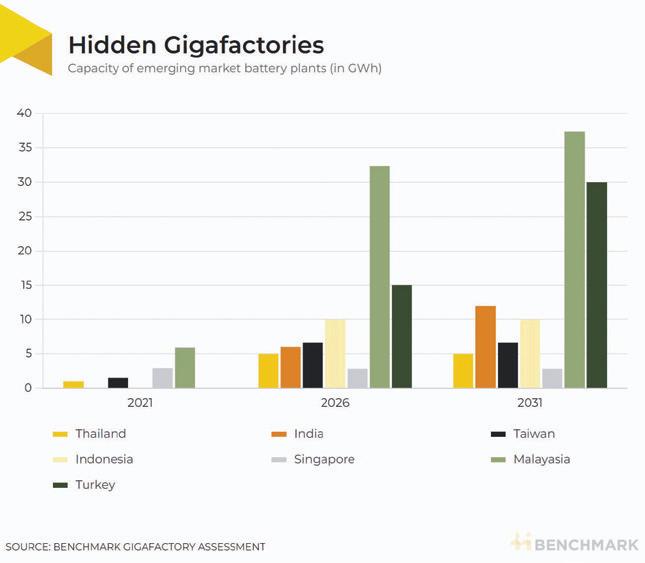
Fast forward to January 13 and the partners revealed their 40GWh plant would be in Ohio, with their overall investment related to the joint venture projected to reach $4.4 billion.
LG has a majority 51% stake in the tentatively-named L-H Battery Company joint venture. Construction of the plant is to start this year with completion scheduled by the end of 2024 and the start of mass production by the end of 2025.
Meanwhile, Toyota is pushing ahead with an expansion of its Toyota Battery Manufacturing North Carolina site following the announcement last August 29 of $2.5 billion in additional investment for the project.
Toyota said battery production is to start in 2025 for hybrid electric vehicles and BEVs.
Jane Nakano, a senior fellow in the energy security and climate change program at the Center for Strategic and International Studies in Washington, said that under the Inflation Reduction Act, tax credits that came into effect in January are available at different levels to both new and used
EVs, and also for non-passenger vehicles.
Specifically, half of the EV tax credit is available if EV battery components are manufactured or assembled in North America. The other half of the credit is available if battery minerals are extracted, processed, or recycled in the US or come from a country that has a free trade agreement with the US.
“The number of eligible models will likely decrease as the mineral content threshold rises to 80% by 2027, and
Nakono said the US vision for secure EV supply chains has “an undeniable dose of geopolitical assertiveness”, because the law prohibits the application of EV tax credits where any components or critical minerals are sourced from a foreign entity of concern, such as China, Russia, Iran, or North Korea.
But how the US addresses trade concerns from close partners such as the EU, South Korea or Japan is an issue. Some of them are also “important investors in the emerging US EV battery supply chains and this warrants close attention,” said Nakono.
European fears of battery investments draining away to other parts of the world were heightened by
COVER STORY: EUROPE’S GIGA DREAM IN TATTERS 40 • Batteries International • Winter 2022/23 www.batteriesinternational.com
the publication of analysis indicating that 13 gigafactories being built in seven emerging markets are set to lead a surge in batteries capacity to around 104GWh by the end of the decade.
Benchmark Source’s ‘Gigafactory Assessment’, released on December 13, said the new plants being built across seven countries including Malaysia, Indonesia and India would be enough for nearly two million EVs.
Further analysis by Benchmark indicates that the US is outpacing Europe in the battery gigafactories investment race, following tax incentives unveiled by the federal government in the Inflation Reduction Act.
A total of 242GWh of battery capacity was added to the US pipeline in the second half of 2022, an increase of 34.3% since July, according to Benchmark’s separate ‘Lithium ion Battery Gigafactory Assessment’, released on November 23.
In comparison, Europe’s battery capacity pipeline increased by 16.7% or 170 GWh over the same period, with Chinese companies responsible for all new gigafactories.
Benchmark analyst Evan Hartley said: “The effect of the Inflation Reduction Act can be clearly seen within the announced North American pipeline, and while the European pipeline has increased, that growth is more stable, continuing the trend seen throughout the year.”
In its December 13 Gigafactory Assessment, Benchmark said the list of developing economies where 13 gigafactories are being built includes Turkey, where South Korea’s SK Innovation plans to build a battery plant with Ford and local player Koç Holding.
The plant in Ankara is to start production of high-nickel NCM batteries in 2025.
Benchmark says the developing economies’ gigafactories should come online by as early as 2026 and add about 78GWh capacity initially, which would be scaled to 104GWh by the end of 2030, led by Malaysia.

According to the analysis, the gigafactories would contribute about 37.6% of Asian (excluding China) capacity of 205GWh by the end of 2026 and about 40.5% by the end of 2030.
Benchmark says the investment in gigafactories in emerging markets comes as EV sales start to accelerate in Southeast Asia and India, highlighting the growth potential beyond the major developed markets.
CHINA WARNS US OVER TAX CREDITS AS BEIJING EXTENDS EV SUBSIDIES
China has kicked off 2023 by extending government subsidies for purchases of EVs for the rest of the year — with a warning that it suspects that US tax credits could be in breach of WTO trade rules.
Tax exemptions on EV purchases had been set to expire at the end of 2022, but new energy vehicles bought up to December 31 of 2023 are now also exempt from vehicle purchase tax, the finance ministry and other government bodies confirmed.
Despite Beijing’s own attempt to boost EV sales, the government said it was reviewing US polices aimed at favouring domestic EV battery investment.
Chinese commerce ministry spokesperson Shu Jueting claimed on September 22 that granting tax
credits for EVs in the US on the condition of final assembly in North America discriminated against other similar imported products and could violate WTO rules.
Meanwhile, data from the China Automotive Battery Innovation Alliance, published by state news agency Xinhua on January 14, said the country’s battery manufacturing capacity for new energy vehicle batteries totalled 294.6GWh in 2022, which the organization claimed was a year-on-year increase of 91%.

The installed capacity of batteries in December 2022 alone increased 38% year-on-year to hit 36.1GWh.
The China Association of Automobile Manufacturers said China sold nearly seven million new energy vehicles in 2022 — a year-on-year increase of 93%.
COVER STORY: EUROPE’S GIGA DREAM IN TATTERS www.batteriesinternational.com Batteries International • Winter 2022/23 • 41
Production of the fifth generation of high-voltage batteries at the BMW Brilliance Automotive joint venture factory in China
Toyota is pushing ahead with an expansion of its Toyota Battery Manufacturing North Carolina site
Investment needed to secure critical materials to power EU’s electric future
As EU leaders are under pressure to do more to support investments in gigafactories, European institutions are also calling for urgent action to plan for a reliable and sustainable battery materials supply chain — including new mining and recycling projects.
The European Commission says it will publish legislative proposals for raw materials critical to the battery industry in the first quarter of 2023.
On issues of materials supply the Commission is under pressure from industry representatives too including Europe’s metals association, Eurometaux, which is warning that the US Inflation Reduction Act also risks draining much-needed investment in the supply chain away from Europe.
Eurometaux sustainability director Kamila Slupek said on December 12 new rules set to be introduced as part of the EU’s Batteries Regulation must be accompanied by “an even stronger industrial plan to grow Europe’s battery materials supply chain in the face of US subsidies and China state support.
“In the next two years we need much more European investment into mining, refining, and recycling operations for battery materials,” Slupek said.
Recycling will be Europe’s best longterm opportunity to establish strategic autonomy for battery metals, she said, but the batteries market will expand rapidly this decade and no one knows now how much battery scrap will be available by 2030.
Eurometaux said in a study published last spring that Europe needs to combine long-term recycling growth with new primary metals supply and make “strategic choices on how it will supply its accelerating metals demand”.
According to the study, the EU will require significant new supplies of nickel, lithium, and cobalt for its domestic battery cathode manufacturing plans. Of these metals, Europe only has a significant existing market for nickel, which is mainly used in stainless steel.
By 2050, batteries will be Europe’s major use for lithium, nickel, and cobalt under all the study’s scenarios,
with new demand reaching up to 3500% of Europe’s lithium consumption today, 350% of cobalt, and 110% of nickel.
The battery market will need to be the subject of regular attention because uncertain technology developments after 2030 will likely impact these long-term projections, and so regular attention will be required to the battery market.
For the next 14 years, Europe’s energy transition will predominantly require new primary metals supply from mining and refining, Eurometaux said.
However, plans for most new mines expected to be started up in Europe face an uncertain future due to lack of local acceptance, technical uncertainties or permitting challenges.
Secondary supply from recycled sources will take a more prominent role as current clean energy technologies begin reaching their end of life.
After 2040, recycling could be Europe’s major supply source for most transition metals, alongside the continued need for primary metal, but Eurometaux said this would need major efforts to build new recycling capacity and overcome bottlenecks.
Research by Batteries International shows little has changed since the European Commission’s lofty ambitions for lithium ion battery recycling were unveiled several years ago.
A report by Germany’s independent non-profit environmental research body the Oko-Institut, published in March 2018, told the Commission that the best thing it could do was to follow the example of the lead acid industry in recycling batteries to create a “sustainable” process for conserving raw materials and repurposing EV batteries for energy storage.
That report — ‘Ensuring a Sustainable Supply of Raw Materials for
Electric Vehicles’— showed that China was already “well ahead” in having a transparent structure that efficiently regulated the use of materials in the electro-mobility sector.
Fast forward to the present day and the needle on the Commission’s sustainability dial has barely moved into more positive territory.
In its most recent study, ‘Mobility sector: roadmap for responsible sourcing of raw materials until 2050’, published in August, the institute notes that lithium is still not being recycled in the EU.
And the study warns that while there is a transition in cell chemistries away from “expensive resources like cobaltand nickel-containing lithium nickel manganese cobalt oxide towards cheaper materials like lithium iron phosphate… there is as yet no recycling concept specified for LFP, as the focus of material recovery has been on cobalt, nickel and copper”.
The study also highlights a growing trend where used batteries are, in the institute’s words, donated to countries outside the EU for use in projects such as solar power systems in Africa.
The institute says it is hard to justify the shipping of old batteries to lowand middle-income countries while using new batteries to cover the need for electricity storage in the EU.
“In many countries around the world, recycling structures for LIBs are still lacking. Exporting the batteries back to Europe for recycling, as often announced, is also nearly impossible, as shipping companies are reluctant to take on board LIBs at their end of life due to the risk of fire and the resulting insurance costs.”
Now the institute is calling for restrictions on exports of cars and used batteries from the EU and a program of “mandatory recycling”.
COVER STORY: EUROPE’S GIGA DREAM IN TATTERS 42 • Batteries International • Winter 2022/23 www.batteriesinternational.com
After 2040, recycling could be Europe’s major supply source for most transition metals, alongside the continued need for primary metal







Tried and tested Improved inside
Our genuine system - your first choice
• Highest quality
• Constant improvement
• Excellent performance
• Reliable service
Over 40 years of developing and perfecting battery filling products allow us to provide you with the most reliable system focusing on innovation and usability – a valuable contribution to an extended battery lifetime.
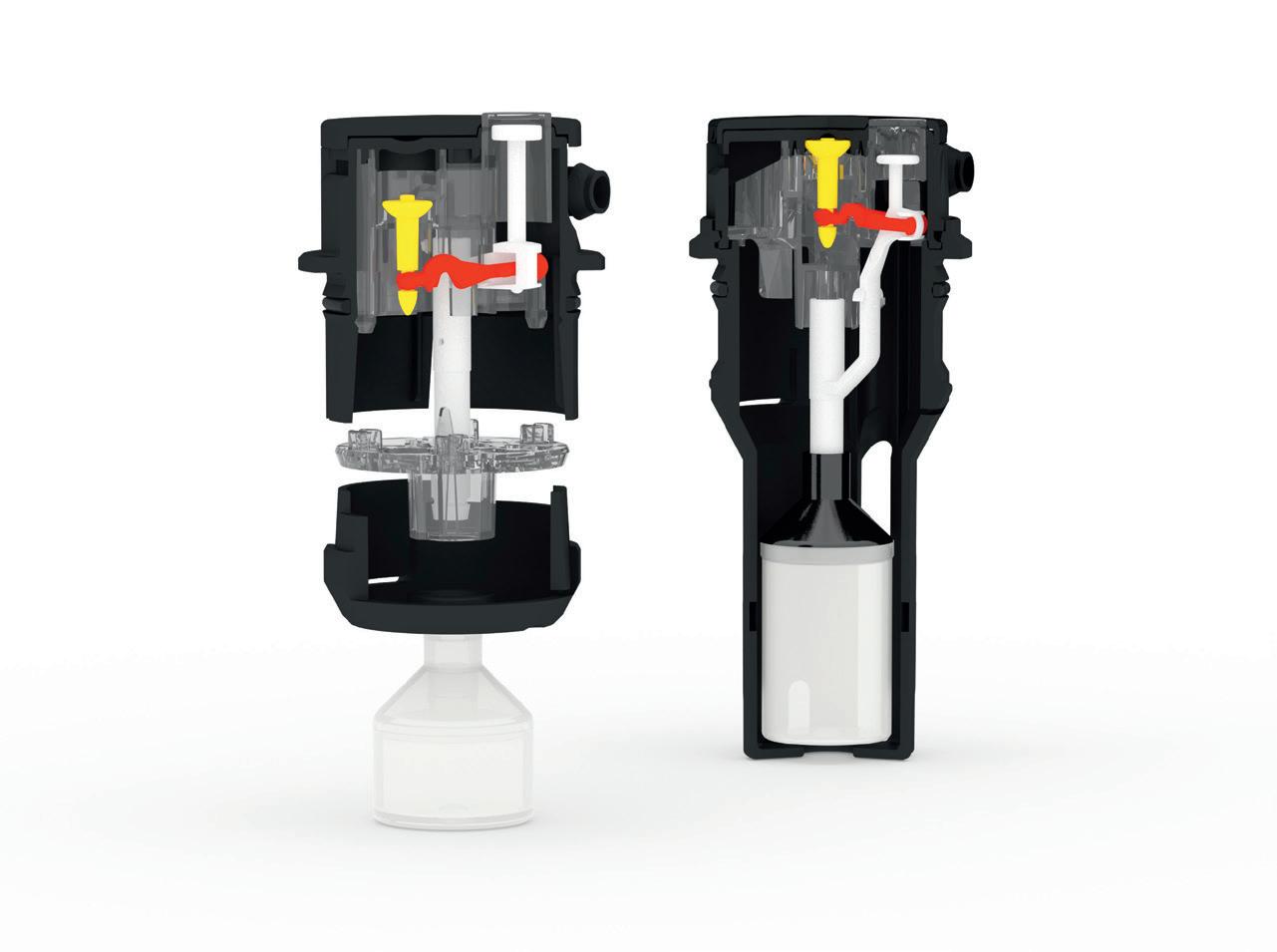
batterie füllungs systeme GmbH info@bfsgmbh.de Mitterweg 9/11 | 85232 Bergkirchen | Germany bfsgmbh.de | +49 8131 36400
bfs
The faltering march of the gigafactories
Rising energy costs, disruptions in the supply of equipment components, hikes in the cost of raw materials and potential shortages have delayed giga-projects across Europe in 2022.
Some major projects seem to have stalled almost completely.
In December, for example, Volkswagen postponed a decision on where to build a battery gigafactory in eastern Europe. And in January Britishvolt’s gigafactory at Blyth in England went into administration after a long tangle with raising enough finance.
Rescue packages from the UK government were being discussed as Batteries International went to press.
In Europe — see other parts of the cover story — two defining situations have hampered the continent’s giga dreams: the introduction of the Inflation Reduction Act in the US with its tax breaks and China’s extension of subsidies to its battery manufacturers.
But other factors are also in play.
One commentator points to the overall lack of expertise in creating, managing and operating these giga plants. “There is only a finite amount of talent to go round,” he says. “So in one sense it will make sense to consolidate this expertise in partnerships.”
There’s also the post-Covid recovery where the shortage of materials has hit price expectations. “In 2020, it was thought EVs would hit price parity with ICE vehicles around this year or next,” says one industry commentator. “But increasing battery prices have put paid to that.
“It could happen by 2026, or even 2025 though,” he says. “As massive
battery gigafactories start to come online and supply ramps up dramatically.”
Simon Michaux, associate professor of geometallurgy at the Geological Survey of Finland believes that gigafactories need to be part of larger thinking.
The supply of lithium, cobalt, nickel and graphite will not be enough to manufacture enough renewable units to replace the existing fossil fuel based system, of which batteries make up a large proportion.
“The simple solution is to make batteries out of another material set such as fluoride, sodium, zinc or even silica,” he says. “These don’t have the same supply shortage problems.”
A UK perspective
Stephen Gifford, chief economist at the Faraday Institution in the UK, regards the energy and supply chain crises as short to medium-term issues: “Geopolitical risks and disruption to global supply chains after the pandemic have resulted in rising commodity prices,” he says.
“Average battery costs had fallen by around 80% since 2013 but increased for the first time in 2022, with a 7% increase in real terms”
Meanwhile, in the UK alone, there is a demand forecasted of 22,000 tonnes of cobalt, 135,000t lithium carbonate equivalent and 170,000t nickel under a projection of 196 GWh of UK EV battery production.
Gifford does not believe current market issues and supply bottlenecks will affect the gigafactory industry in the longer term given, for example, the transition to net zero by 2050 in
the UK and ending of new ICE vehicle sales by 2030.
“With global commodity prices increasing, the market for EV batteries has begun to move to lower cost chemistries to remain competitive, particularly lithium iron phosphate,” says Gifford.
Shortening the battery raw materials supply chain, or finding ways to minimize the use of certain minerals because of availability or expense, has become a priority
The current production of raw materials is far from sufficient.
Globally, in 2040 there is projected to be demand for around 520kt cobalt, 3,000kt lithium carbonate equivalent and 4,000kt nickel under a projection of 5.9TWh of global EV battery production.
One analyst predicts that: “there should be demand for 100GWh and five large gigafactories in the UK by 2030, with each producing 20GWh per year of batteries. By 2040, demand rises to nearly 200GWh and the equivalent of 10 gigafactories.”
However, says Gifford, “There are more than enough resources to supply the manufacture of EV batteries to 2050, giving time for the EV battery recycling industry to become widely established.”
When assessing planned cell capacity figures, not all that capacity will come online, with many gigafactories projects unable to produce the quantity and quality of cells right for the market, says Benchmark Minerals analyst, Evan Hartley.
Lithium is the key raw material causing significant supply disruption and driving up cathode and cell prices.
Some cathode manufacturers in China are reporting recent failures to receive deliveries of material from long term supply contracts, having to resort to the tight spot market.
Demand is outpacing supply, with new lithium mines taking longer
COVER STORY: EUROPE’S GIGA DREAM IN TATTERS www.batteriesinternational.com Batteries International • Winter 2022/23 • 45
A net zero world will require a global network of battery gigafactories, but these have to be properly resourced, function independently and within a local energy and industrial landscape.
“There are more than enough resources to supply the manufacture of EV batteries to 2050, giving time for the EV battery recycling industry to become widely established”
to achieve viable production than downstream projects.
Gifford says that global production of lithium and cobalt will need to increase by six times and three times respectively up to 2040. However, nickel supply does not need to increase to the same degree.

Hartley says some companies are shifting their battery materials business towards localization, and vertical integration. “Cities such as Debrecen
in Hungary provide an example of these strategies; now host to a number of projects planning to produce pCAM, cathode material, cells, and EVs, increasing supply chain integrity,” he says.
“However, as energy-intensive operations, we are beginning to see gigafactory plans hit by energy price crises, with multiple cell producers in Europe for example, either delaying plans, or reconsidering the location of
Gifford says that global production of lithium and cobalt will need to increase by six times and three times respectively between to 2040. However, nickel supply not need to increase to the same degree
LIFE AFTER LITHIUM — ALTERNATIVE TECHNOLOGIES
planned gigafactories, with countries offering subsidies to counter rising energy costs now more likely to be favoured.”
Geopolitics is also key to gigafactory success with preferential treatment such as the US tax breaks from the Inflation Reduction Act moving markets. “Since the act was announced, North American pipeline capacity has grown significantly, with many of the companies scaling up their plans from Japan, and South Korea,” says Hartley, “while the large tier 1 Chinese producers have been excluded from the market.”
Recycling
Reducing reliance on battery raw materials is part of gigafactory strategy. Consequently, there are moves to overcome the difficulties in recycling EV batteries.
Unfortunately, says Gifford, current end-of-life battery processing techniques do not optimize or maximize the recovery of all of the materials contained in EV batteries.
Making better use of resources and minimizing the amount of raw materials being sourced to manufacture is an imperative for battery production. That includes an increase in recycling.
There are limits to the performance improvements that can be expected from Li-ion technology.
“Next generation battery technologies such as solid-state, sodium-ion and lithium-sulfur offer exciting opportunities for EVs but also for applications in marine, rail, aviation and heavy goods transportation,” says Stephen Gifford, chief economist at the Faraday Institution. “Solid-state batteries are expected to be the next successor to lithium-ion batteries, offering a step-change in energy density, range and safety advantages.
“Sodium-ion batteries have a much lower cost than lithium and solid-state batteries, making them an attractive next generation technology. Simpler manufacturing techniques are needed, with inexpensive and naturally abundant materials used.
“Sodium-ion batteries are well suited for future large-scale
stationary storage applications, particularly where large amounts of storage are required to help balance electricity grids with a high supply of renewables.
“They have potential usages in low-cost and low-performance vehicles, particularly micromobility vehicles such as e-bikes, e-scooters, two-wheelers and three-wheelers.
“Lithium-sulfur batteries offer greater gravimetric energy density than lithium-ion, and are cheaper to make. These should open up new markets and have a transformative effect on aerospace applications, such as drones, high altitude satellites and unmanned aerial vehicles.
“For the moment, lithium-sulphur cells suffer from short cycle lives and research to solve these challenges is underway.”
The Faraday Institution’s LISTAR project led by University College London is looking at how to fix this.
Key steps suggested by Gifford include: ensuring that EV batteries are designed in a way that enhances recycling; ensuring that EV batteries are designed with second-life applications in mind; use policy and regulation to help to manage environmental impacts; encourage investment in the infrastructure for recycling lithium-ion batteries from EVs; and to consider government support.
“What a gigafactory looks like in 20 years will depend on the type of batteries being manufactured, particularly whether there has been the successful development of alternatives such as solid-state and lithium-sulphur batteries,” says Gifford.
Multiple cathode and cell producers have versatile production lines capable of switching focus in line with demand — between different NCM cells, or between NCM and NCA, says Hartley:
“As battery technology evolves, we will continue to see versatile production lines brought online, or further investments into existing facilities to redesign the manufacturing process, as the development of existing infrastructure will be cheaper and more efficient than new gigafactories for new technology.”
COVER STORY: EUROPE’S GIGA DREAM IN TATTERS 46 • Batteries International • Winter 2022/23 www.batteriesinternational.com
UK giga-project runs out of road
As Batteries International went to press Britishvolt, the company behind one of the UK’s flagship gigafactory projects collapsed into administration.
On January 17, Dan Hurd, Jo Robinson and Alan Hudson of EY-Parthenon’s Turnaround and Restructuring Strategy team were appointed joint administrators of Power by Britishvolt Limited — incorporated in 2019 as the main UK company in the wider Britishvolt Group set up to build and operate the plant.
The move was due to insufficient equity investment for the research the company was undertaking and the development of its sites in the Midlands and the north east of England, according to the administrators.
Hurd said the priorities were to protect the interests of creditors, explore options for a sale of the business and assets and to support the impacted employees.
However, most of Power by Britishvolt Limited employees have been made redundant. No other entities in the Britishvolt Group, including a number of UK entities, are in administration.
The omens had not been good for some time and came to head on November 2, when Britishvolt confirmed it had received an undisclosed cash injection, after reports that the lithium batteries start-up was on the brink of collapse.
Company CEO and president of global operations, Graham Hoare, also revealed that top executives would be working “without pay for the next month or so, while an overwhelming number of employees had volunteered to take substantial pay cuts”.
The identity of the investor that had provided short-term bridging aid remains confidential.

Speculation about the firm’s future had mounted after the UK govern-
ment reportedly refused a request for an advance on promised state funding, said to be worth £100 million ($115 million).
The Department for Business, Energy and Industrial Strategy declined to comment when contacted by Batteries International
CEO Hoare said the funding would be available to draw down in 2023.
The financial crisis came just months after Britishvolt lost its second CEO in the three years that the project had been underway. The departure of Orral Nadjari, a co-founder of the company, was announced on August 20 but no reason was given for his leaving.
Nadjari founded the company with former CEO Lars Carlstrom, who had stepped down in December 2020.
Carlstrom went on to launch a namesake but entirely separate gigafactory project in Italy, Italvolt, of which he is now CEO.
Ironically, the collapse of Britishvolt came after the UK government announced a new post-Brexit subsidy
control system, which came into force on January 4 and which scrapped the “restrictive aid scheme the UK was subject to as part of the EU”.
Previously, the EU would regularly block local authorities and others from delivering funds to businesses “that most needed it in their communities”, the government said.
Work began on building Britishvolt’s facility in northeast England in September 2021. The total investment cost was put at an estimated £3.8 billion ($4.3 billion).
Curiously, former Conservative opposition leader and now member of the House of Lords, William Hague, blamed Britishvolt’s failure on Brexit at this January’s World Economic Forum in Davos Hague said that such projects “need scale and access to a big market”. However, one industry commentator told Batteries International at the time: “If that were the case, why is the EU saying its giga projects could also be at risk?”
Britishvolt had agreed a number of deals and partnerships over the past year and the demise of the company will have an impact on other international firms.
Last February, Britishvolt said it had secured the further backing of an existing investor, mining giant Glencore, to launch a £200 million ($270 million) funding round.
The gigafactory developer announced on May 24 it had signed a sales purchase agreement
to acquire German battery cells producer EAS Batteries from the Monbat group, in a cash and shares deal worth €36 million.
And on June 7, Britishvolt said its plant would use large scale production lines from Swiss manufacturer Bühler for the production of electrode slurries for the first go-to-market phase of 4.8GWh, which would be expanded to 38GWh towards the end of the decade.
COVER STORY: EUROPE’S GIGA DREAM IN TATTERS www.batteriesinternational.com Batteries International • Winter 2022/23 • 47
As the EU scrambles to keep its gigafactory ambitions on course, the demise of Britishvolt underlines the high stakes involved in securing investment to power an electric future
INTERNATIONAL IMPACT OF BRITISHVOLT’S FAILURE
‘Insufficient equity investment for both ongoing research the company was undertaking and development of sites in England’
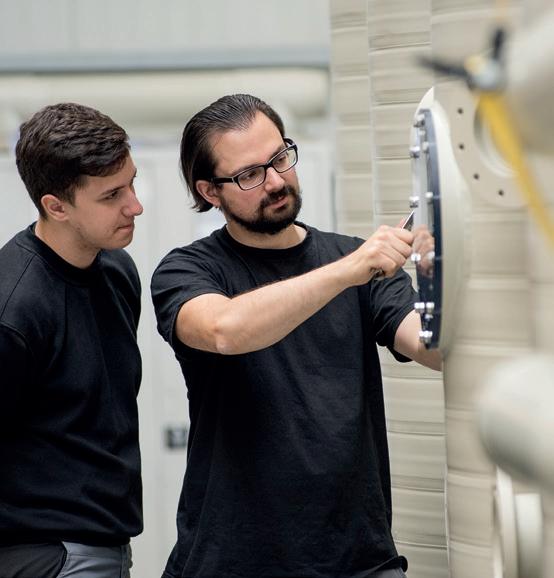
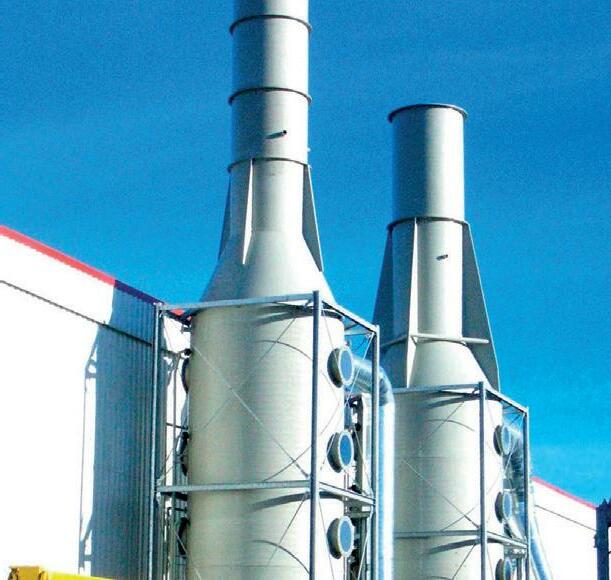

Excellence in Engineered Formation Solutions.
One Team. Stronger Together.
Early in 2020, INBATEC and KUSTAN combined our talents and manufacturing expertise to create a new company focused on engineering excellence. As one team, we are industry leaders in the lead-acid formation process.
Going forward, we focus beyond just acid recirculation to be your consultant for formation solutions.
Our Threefold Mission Is Simple.
• Quality Engineered Solutions by working with our customers to provide all aspects of a formation system that leads to you meeting your specific formation goals while focusing on operator safety.

• Process Innovation that pushes the lead-acid industry forward with products and services that help you build and form batteries safer, less expensively and with the highest quality possible.
• Satisfied Customers over the life of our equipment. We listen and consult when offering a system and then partner with you through the years to responsively maintain safety and the highest production standards.

www.inbatec.de | www.kustan.de
Private equity and venture capital investors have been circling the lead battery industry for well over the past decade. Their ownership can bring benefits but also difficult times — the only certainty with this type of parent is change. Wyn Jenkins and Michael Halls report.
For good, or for bad … here come the money men
A huge chunk of the lead battery industry — just think of such big names such as Clarios, Stryten, Ecobat, Microporous, C&D/Trojan — is under the throes of two types of aggressive investment ownership: venture capital and private equity.
Although there are differences between the two (see panel) both have one common aim. To buy into a company at one price and sell at a much higher one later on.
Profits from the investment and sale normally comes from a variety of types of banking endeavour.
For smaller start-ups, this may simply be enabling the financial backdrop for a company to succeed while it moves from transferring the technol-
ogy of the laboratory to that of the manufacturing line.
This supportive behaviour enables the founders of the firm — who are frequently more technically oriented than commercially gifted — the scope to advance product development and marketing untroubled by the vicissitudes of financial pressure.

It is equally as likely to involve de-
tailed financial oversight and management — particularly of cashflow — to achieve the advancement of the company.
For financial oversight and management read one word. Control. And that for the good or the bad.
For the bad it can be stultifying. One UK start-up, with a technology that has since been brought to market by another firm, failed in the early 2010s. “The problem we found was the opposite of what was meant to have had happened,” the former CEO told Batteries International after the closure.
“Rather than achieve a fast roll-out and the ability to sell the company at a healthy profit within a few years, we had problems with the technology.
ANALYSIS: INVESTOR FOCUS 50 • Batteries International • Winter 2022/23 www.batteriesinternational.com
For financial oversight and management read one word. Control. And that for the good or the bad
Our investing group of VC firms then tried to stem our losses by every which way they could. We lost staff through downsizing (firing) and a natural attrition as we all became demoralized.
“We had to produce finance reports each week and each month we’d have to spend several days preparing for a management meeting with the investor group. They didn’t provide the financial backdrop we needed — rather they became the problem rather than the solution.”
The shame of it all was that the micro-management resulted in the firm’s demise and the technology being successfully finished elsewhere.
Some of the tales of micro mismanagement are legendary and the rise of the so-called “bean counter”, the financial director out of kilter with the mood of the workplace.

Consequences
One battery start-up was apparently brought to its knees by the loss in morale caused when a free-to-use toprange coffee machine for the firm’s 40 staff was replaced with a kettle and a coffee kitty.
For larger firms the control is more absolute. The aim is for the financiers to examine all parts of the business and — typically — look at ways of improving the business model. This may involve huge structural changes, selling off or scrapping whole sections of a diversified business to provide a leaner more efficient business.
So, for example, one of the odd trends from the 1960s onwards was, the way corporate giants expanded their business into seeming growth areas that were unrelated to their core businesses.
The former Johnson Controls, for example, entered the battery business from its acquisition of Globe-Union in 1978, only to sell it to Brookfield Business Partners and create Clarios in May 2019. (This was in fact part of a larger restructuring including the merging with Tyco International in January 2016 to create a company headquartered in Cork, Ireland and (legally) away from many US tax requirements.)
In an odd fashion this underpins theories of capitalism, one business model is outdated or no longer fit for purpose, and is replaced with another.
The death of hugely successful firms such as Kodak which ignored the rise of the digital camera — perversely enough invented by one of its own staff — and successive restructurings
were in the end unable to resist the momentum of a new business model that was eventually to prove suitable for the masses on the phone.
As one financier told this reporter decades ago: “the lifeblood of successful capitalism is the ability it gives companies to reinvent itself, to shred off bits of its business that don’t work and invest in the parts that do.”
(Oddly enough the same financier said that one of the successes of the US financial system was that it enabled businesses to fail — particularly
the so-called Chapter 11 and Chapter 7 provisions — but allowed them to pick themselves up and get going again until achieving potential success.)
“This isn’t an economic model that seems to fit with that found in Europe,” he said. “But it works with the way US businesses work and thrive.”
The history of restructurings and the like are also riddled with tales of financiers ripping the flesh of what could have been successful businesses in their search for easy profits. “People
WHEN IT GOES WRONG — RIGHT-SIZING OR ‘TIGHT-SIZING’?
“Downsizing is so 1990s? It’s rightsizing!” That was the merger and acquisition mantra of years gone by.
Now, insiders from three firms talking to Batteries International, on the grounds of confidentiality, say the process of preparing their companies for a later sale, is better called “tight-sizing”.
Put simply: cutting costs to beef up the balance sheet to enable the sale — but not necessarily for the greater good of the firm.
“I’ve never seen the morale in our company so low and I’ve seen us go through some very rough times,” one senior executive confided to Batteries International before Christmas. “The new management
has got cut swathes of our top leadership starting at the top and replaced it with their own hires.
“Middle-management people have left in droves — are they the next to be axed they wonder? And now we have a culture not of can-do but how much does can-do cost?
“Their attempts, in my opinion, to cut costs and pretty-up the balance sheet have resulted in (probably) a better balance sheet but a less worthwhile company.”
Another executive told a similar story. “When I found that people in the accounts department were the ones approving my business trips for the firm, I gave up. For heaven’s sake, I’m the head of a department!”
ANALYSIS: INVESTOR FOCUS www.batteriesinternational.com Batteries International • Winter 2022/23 • 51
“What people don’t realise is that from the moment we invest in a firm we’re also looking for the way to cash this in. Only an idiot invests without an exit strategy from the very get-go”
hate the term ‘asset strippers’” one financier told Batteries International several years ago, “but these practices keep industries lean and competitive.”
But at its basic it’s the way that outside investment entities — be they private equity or venture capital firms
THE CLARIOS SAGA
It’s the case study that cannot be ignored — the story of how Clarios (formerly Johnson Controls Power Solutions) whose lead-acid batteries are used in about a third of cars globally.
Towards the end of 2018, the company, which boasts $8 billion in revenues, was sold by parent Johnson Controls International to investment firm Brookfield Business Partners, a listed private equity limited partnership that makes its investments through Brookfield Asset Management, for $13.2 billion.
The reason the business was sold is probably indicative of a trend, say industry observers, which is of larger conglomerates seeking distance from the negative associations with lead acid batteries — mostly as an established technology with no disruptive game-changing product and also, in terms of image, using a metal perceived to be unenvironmental.
At the time, Johnson Controls International said the sale would allow it to focus on its building technologies and solutions business, which makes heating, ventilation and air conditioning systems, as well as building access control and fire detection systems.
While the batteries unit boasted healthy margins, it had been capital intensive for its parent. Investors overall welcomed the deal.
Equally, also in line with this trend, Brookfield eyed a different future for its new purchase, based on it moving in a greener direction. In
— take control of battery and related companies and try to push them into better financial circumstances.
The implications
So where does this all fit with today’s lead battery business? And, with a
May 2019, the investment company rebranded the business as Clarios and mapped out a future in which it would become a “world leader in advanced energy storage solutions” including a move into making batteries for electric vehicles.
“Our vision is to power progress by creating the world’s smartest energy storage solutions that benefit people, business, and the planet,” said Joe Walicki, president of Clarios, at the time.
“As a global leader with a product used in virtually every vehicle from conventional to fully electric, we are well positioned to capitalize on market trends, including a move toward more electrified and autonomous vehicles that are elevating the critical role of the battery and accelerating the need for more advanced batteries.”
Such a strategy would appear to align with broader trends in the industry towards diversification.
According to market research company IMARC Group, the global automotive lead-acid battery market reached a value of $12.7 billion in 2021 and it is anticipated to reach a value of $15 billion by 2027. At the same time, the top automotive lead-acid battery companies are increasingly focusing on extensive R&D activities to introduce miniaturized automotive lead-acid batteries with enhanced efficiency, an IMARC report said.
“Several leading players are heavily investing in the deployment of high-
high number of lead- battery manufacturers and suppliers now owned by private equity or venture capital entities, what implications are there given the investment timelines and horizons such companies work to?
Geoffrey May, director at FOCUS
tech methods and the manufacturing of advanced and maintenance-free battery variants, which are propelling the market growth. Along with this, the growing environmental concerns and the increasing awareness among individuals about the harmful impacts of carbon emissions are providing lucrative growth opportunities to key players on the global level. In line with this, the widespread adoption of EVS among the masses is creating a positive market outlook.”
To a private equity company, therefore, a strategy for a newly acquired lead-acid batteries might be clear. The business is already successful and profitable: realign its strategic direction towards innovation and greener technologies and increase its desirability to investors in the process — as well as its product range and ultimate growth prospects.
One success it had in this regard was Clarios being selected in 2021 as a winner of the US Department of Energy (DOE) Office of Energy Efficiency and Renewable Energy’s Lithium-Ion Battery Recycling Prize competition.
Clarios’ project, “Powering the Future,” was intended to develop and apply innovative technologies to identify and separate lithium-ion batteries from lead-acid batteries, ensuring the proper and safe recycling methods for each chemistry.
Yet for all its ambition of moving the company in a new direction — perhaps a greener one more agreeable to mainstream investors — Brookfield has not so far succeeded in mapping a succession plan for the business. In May 2021, two years after a new strategic direction was unveiled, it filed paperwork with the SEC for an initial public offering.
Analysts suggested at the time, the company could seek a valuation of some $20 billion.
However, by July 2021, the flotation had been delayed. The company cited unsatisfactory market
ANALYSIS: INVESTOR FOCUS 52 • Batteries International • Winter 2022/23 www.batteriesinternational.com
To a private equity company, therefore, a strategy for a newly acquired lead-acid batteries might be clear. The business is already successful and profitable: realign its strategic direction towards innovation and greener technologies and increase its desirability to investors in the process — as well as its product range and ultimate growth prospects
Consulting, a business that provides technology and business support to the battery industry, reckons that while trends can be seen in why leadacid battery-focused businesses have ended up in private equity ownership, what the future and future ownership
conditions. “While we are looking forward to taking Clarios public … we have elected to defer the IPO given current market conditions,” the company said at the time. Certainly the huge volume of IPO flotations already that year would have certainly been a dampener on investor interest.
Analysts say the IPO will have to resurface — partly because Brookfield has so few other options. The business is too big for a trade sale; the number of potential suitors is limited plus regulators may well raise anti-trust or competition law concerns.
“That’s not to say Clarios is not a good investment opportunity it’s more that its size and market position limits its parent’s options,” says FOCUS Consulting’s, Geoffrey May.
“Johnson obviously saw batteries as non-core and private equity gave them that exit. Assuming they [Brookfield] did their due diligence, it must be regarded as a reasonably good investment, but they will need an exit at some point,” he says.
“The opportunities for further consolidation on the trade side are limited. It was different in the past but if another major player tried to gobble up more competitors that could fall foul of antitrust regulators. They are clearly trying to change the company and move towards the sexier side of electric vehicles. But that is not necessarily easy, and their core business is automotive lead acid batteries. They are very successful at that.”
May believes it is hard for leadacid focussed companies to step into the lithium space in a meaningful way. “There are few common skillsets between lead and lithium,” he says. “The process is completely different, almost nothing is shared on the manufacturing side. So it is one thing wanting to innovate but simply moving from one chemistry to another will not be straight forward.”
of each company looks like is less clear.
Each need to be considered on a case-by-case basis. “There are good and bad aspects of being private equity owned, and that very much depends on the unique circumstances of businesses — you have to look at each individual scenario,” he says.
“When large companies have decided to push out their lead operations, private equity can be a good solution. They have found some willing buyers. What happens next is less clear, however. In the case of the biggest companies, a trade sale seems problematic; equally the equity markets have not had the appetite for an IPO in some cases.”
An IPO — an initial public offering — is a major exit strategy for both private equity and venture capital in-
vestors. In the IPO the shares of the new or restructured company can be bought by institutional and private clients.
Valuations of the profits private equity and VC firms make can seem extraordinarily high. In part this is to do with opportunity, but also to that of risk. For venture capital investors taking a firm from scratch to a high market capitalization also means taking the risk that other investments that don’t succeed at all, or don’t succeed in any hugely profitable way.
“If only one in three firms you invest in have a workable exit strategy then you have two that you’ve lost money on. It’s part of the business model,” one venture capitalist firm told Batteries International. “You balance the returns from the overall portfolio.
“What people don’t realise is that
Lower Prices. Better Service.
Using the expertise acquired through more than 25 years, we offer our international customers top quality, excellent service and the lowest prices.
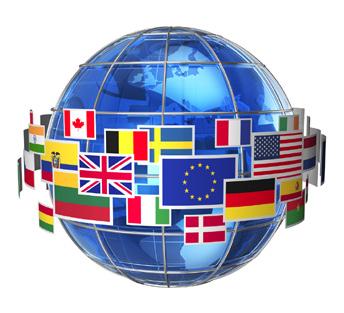
New Equipment
From All Major Manufacturers
Spare Parts
Quality built, reliable replacements keeping your machines up and running
Material Supplies

Negative Expander, Fiber Flock, Flux, Cork Powder, Pasting Belts & More
Clean-All Heavy Metals®Soap
The only soap that allows workers to eliminate lead residue from their skin without harsh scrubbing. Keep your workers safe and clean.
Global Shipping
We offer full air, ocean and courier services at low rates. Or ship with your own carrier. You are in control.
ANALYSIS: INVESTOR FOCUS www.batteriesinternational.com Batteries International • Winter 2022/23 • 53
Sasha’s International, Inc. The World’s Price Leader for the Battery Industry
LOCATIONS: CONTACT: Miami Beach, FL 33139 U.S.A. TEL: 305-695-8990 Denver, CO 80234 U.S.A. FAX: 305-695-8991 www.sashas.net Email: sashas@sashas.net English · Français · Español · Italiano · Deutsch · български · Pусский C M Y CM MY CY CMY K Final Ad.pdf 1 9/17/2019 3:13:17 PM
IT’S NOT JUST THE BIGGEST OF THE BIG FIRMS …
Private equity firms and VC firms own at least far more than 40 “significant” companies in the battery industry, says one analyst. These include batteries manufacturers such as Lionano, which raised $22 million in Series ‘B’ funding in 2018 led by WAVE Equity Partners, Helios Capital Ventures and NXT Ventures; and EaglePicher Technologies, which, also in 2018, was sold by parent Vectra to GTCR, a Chicago PE firm.
A number of companies classed as battery distributors also fall into this category. In 2017 PR firm High Road Capital Partners acquired Storage Battery Systems. In 2018 it added Nolan Power to its portfolio; it plans
to combine the two businesses.
A similar story can be found in battery recycling. In 2018, Gopher Resource was sold by parent Norwest Equity Partners to Energy Capital Partners; in 2017, Eagle Battery was acquired by Cardinal Equity Partners.
Each of these companies will be on its own journey of change. Its investors may be investing or cost cutting, rationalizing or expanding the offering of each. Only one thing is certain: another change of ownership will occur for each at some point in the future. This may provide long term stability, or be yet another steppingstone to another owner — or worse.
VENTURE CAPITAL FUNDING DECLINES OVERALL BUT NEW ENERGY INVESTMENTS STAND UP WELL
The latest KPMG Private Enterprise Venture Pulse report, released this January, shows that global venture capital investment dropped for the fourth consecutive quarter in 2022 — falling from $102.2 billion on 9,767 deals to $75.6 billion on 7,641 deals. Global investment has fallen to its lowest levels since Q2’ 2019. The decline comes despite large deals in the energy sector, including alternative energy vehicles, battery technologies, and alternative power generation and distribution technologies as governments seek to secure energy independence and meet their climate obligation.
The Americas and Asia secured the largest deals during Q4 ’22 accounting for the largest share of VC investment globally.
The US recorded the largest proportion of investment with Asia second, despite attracting three $500 million + megadeals across the quarter. Top deals from China included GAC Aion ($2.56 billion) and SHEIN ($1 billion) with the largest US deals including Anduril ($1.48 billion) and TerraPower ($830 million).
“Overall investment continued to decline this quarter, falling to the lowest levels since Q2 ’19. The combination of economic and geopolitical pressures, alongside turbulent capital markets and low IPO activity, have taken their toll on
venture capital investment,” says Conor Moore, national venture capital co-leader for KPMG in the US.
“However, we continue to see encouraging levels of investment in the new energy and electric vehicle ecosystems, as venture capitalists continue to align with government initiatives and incentives in these areas deemed critical to energy independence.”
Private equity deals have slowed down and look set to stay that way. With war still raging in Ukraine and inflation still putting pressure on businesses, the buyout industry is bracing itself for another year of volatility.
Deal value in the first half of 2022 totaled $529 billion, a healthy figure by historical standards, but the latest figures for H2, due out shortly, are expected to show lower volumes. From a private equity point of view, it’s important to note that the investor landscape has changed considerably — less than 10 years ago, a key statistic was that companies were staying private for four to six years and there were fewer than 100 private companies with a billion-dollar valuation or more.
Today, there are more than 1,170 companies that have a billion-dollar valuation and, on average, have been private for 10-13 years.
from the moment we invest in a firm we’re also looking for the way to cash this in. Only an idiot invests without an exit strategy from the very get-go.”
Perhaps distressingly for the longer good of some parts of the battery market, however, the venture capital play is generally — not always — for an investment window of around three to five years. Private equity tends to be a longer play given the complexities that can be involved.
Investing with purpose
This does, however, lead to the question of whether private equity owners are more likely or less likely to invest in and drive innovation in a company for the longer term. That said their aim will be to increase the value of a company within a specific time frame. That can mean cost cutting and rationalization but also investment and innovation, in an attempt to realign a company’s offering.
Especially in the case of lead-acid batteries, it might seem prudent, as Stryten has done, to move towards alternative technologies. In the last two years, for example, it has moved into manufacturing sodium ion batteries, flow battery technology and the recycling of lithium batteries.
Andrew Haughian, general partner, Pangaea Ventures, a venture capital firm that invests in early-stage advanced materials, energy and environmental technology companies backing entrepreneurs “who are making a meaningful impact in the world” offers some context on this point. He says there are several reasons a company might invest in a company operating in the energy storage/battery space.
“VC funds invest in companies that have a highly differentiated technology solving a significant pain point. The battery industry is one where economies of scale and supply chain are critical factors to success and therefore new entrants must have enough of a differentiation that leapfrogging incumbents (who are also improving every year) is a possibility,” he says.
“VCs also like companies that have the potential to be a large, standalone business that has the potential to go public versus a component or materials supplier that is most likely to find a home under the roof of a large incumbent industrial. Finally, the quality of the management team is a first and foremost consideration for any decision to invest.”
But he says that investors will also be looking to accelerate growth and
ANALYSIS: INVESTOR FOCUS 54 • Batteries International • Winter 2022/23 www.batteriesinternational.com
innovation. He says that, generally, investors want to invest in companies that can hit meaningful inflection points within 12-18 months.
This can provide a basis for future fundraising. Investors will also look to help set priorities and make introductions from their network in order to accelerate growth.
The potential exit plan will never be far from mind, however — but this can be longer in the battery space than in other sectors.
Haughian says most investors playing in the battery industry understand the exit horizon will be at least five years, but possibly closer to eight to 10 years. “And there are only a small number of investors willing to make very early-stage bets where the horizon is even longer,” he says.
In general, VCs like companies that have the potential to be standalone independent companies with the potential to go public. However, if attractive M&A options arise long the way, most investors will be rational about considering a likely smaller but lower risk pathway to exit.
On the specific question of innovation, and the wider impact that can have on a sector, he admits that too much investment in one area can muddy the waters and cause an element of uncertainty.
“A perfect example of this is in that for developments in silicon anodes for lithium batteries where there are dozens of start-ups and an equivalent number of in-house corporate efforts. In such a competitive space, the bar is elevated for everyone. The challenge with this is that it may be difficult for the top players to become dominant as the performance differential compared to others can be limited.”
The Trojan story
If finding the exit strategy is part of any investor private equity/VC approach it is also the start of a new saga for the firms themselves.
In 2013 private equity business
Charlesbank Capital Partners acquired Trojan Battery Company, a specialist in deep cycle lead acid technology formed in 1925 by the Godber family.
Charlesbank’s acquisition marked the first outside equity for the company, with the Godbers, for a while, maintaining a significant ownership position. “It stopped being a family business at that point but it was the best way to achieve the investment needed for growth that we needed,”
said a senior manager to Batteries International at the time.
In 2018, things had changed again when Charlesbank sold Trojan to C&D Technologies, a manufacturer of mostly flooded lead-acid batteries but also making lithium ion batteries and related products, and itself a portfolio company of another private equity firm: KPS Capital Partners. KPS had acquired C&D in 2017 with the stated intention of aggressively grow-
ing the company both organically and through strategic acquisitions.
It is not always a happy ending, as UK battery company Atraverda, which made ceramic bipolar batteries, found in 2012 when it was forced to call in the administrators. Formed in 1991, the company had previously secured two rounds of venture capital funding raising some £20 million (currently $34 million). Another round, however, was not secured in time.
PRIVATE EQUITY AND VENTURE CAPITAL
Private equity is sometimes confused with venture capital because both refer to firms that invest in companies and exit by selling their investments in equity financing, for example, by holding initial public offerings. (IPOs are the process of offering shares of a private corporation to the public in a new stock issuance for the first time,) However, there are significant differences in the way firms involved in the two types of funding conduct business.
Private equity and venture capital invest in different types and sizes of companies, commit different amounts of money, and claim different percentages of equity in the companies in which they invest.
• Private equity is capital invested in a company or other entity that is not publicly listed or traded.

• Venture capital is funding given to start-ups or other young businesses that show potential for long-term growth.
• Private equity and venture capital buy different types of companies, invest different amounts of money, and claim different amounts of equity in the
companies in which they invest.
Private equity is a source of investment capital from highnet-worth individuals and firms. These investors buy shares of private companies—or gain control of public companies with the intention of taking them private and ultimately delisting them from public stock exchanges.
Large institutional investors dominate the private equity world, including pension funds and large private equity firms funded by a group of accredited investors. Venture capital is financing given to start-up companies and small businesses that are seen as having the potential to generate high rates of growth and above-average returns, often fuelled by innovation or by carving out a new industry niche.
The funding for this type of financing usually comes from wealthy investors, investment banks, and specialized VC funds. The investment does not have to be financial, but can also be offered via technical or managerial expertise.
ANALYSIS: INVESTOR FOCUS www.batteriesinternational.com Batteries International • Winter 2022/23 • 55
in Austria
 Made
Made

The empires of the future are the empires of the mind
This year’s round-up of the great and the good in the battery and energy storage community reflected yet again the persistent preoccupations of the industry. Key themes were the precariousness of the supply chain, the disruptive economic climate we live in and a huge anticipated boost in battery energy storage projects.
In part these worries are a continuation of the thinking at the start of 2022 when the world was starting to heave a collective sigh of relief that the worst of the Covid pandemic was over. The concerns then were about what the world would be like after the two plague years.
Strangely enough many of the predictions for 2022 — supply

chain disruptions to continue, the confusing regulatory landscape to persist and only slowly improve, while lead battery sales would hold steady while EV battery markets would be volatile — held true despite the Russian assault on Ukraine last February.
The unprovoked attack caught the energy markets by surprise. There was an immediate energy crisis in Europe, which was over-reliant on Russian gas while attempting to impose sanctions. A mad scramble into energy storage ensued. One commentator at the time said: “Europe has now rethought its pricing strategy for the future. Every kilowatt of storage is being priced
against the cost of every cubic metre of Russian natural gas imported.”
The interesting point to make says another commentator is that the Ukrainian crisis has put a rocket under BESS projects across the continent and created a potentially world class market out of nothing.
“If there is any compensation for the tragedy that is Ukraine, it’s the way Europe’s energy transition has been accelerated.”
But the invasion was not just Europecentric, the price of energy storage went up around the world. With little sign of the war ending this year, the importance of energy storage will continue to be at the forefront of national and regional strategies.
The demand for energy storage is going to be incredible
Investments in energy storage by public and private entities around the world have increased exponentially, with the US leading the way with the Bipartisan Infrastructure Investment and Jobs Act and the Inflation Reduction Act signed into law in 2022.
Increased electrification and the transition to renewable energy sources will continue to drive the demand for energy storage with no end in sight.
With power consumption projected to triple by 2050 globally, capturing all available energy generated by traditional and renewable power sources is critical. This means ramping up production and installation of medium-to-long duration battery systems to ensure all energy generation is captured and available for use when it is needed.
Stryten Energy is uniquely positioned with three advanced battery technologies — advanced lead, lithium and vanadium — that will provide continuous access to reliable sources of power through microgrids and other backup power applications necessary for businesses, neighbourhoods, or even small towns to achieve energy security.
Stryten is focused on developing three of the most promising technologies to accelerate the availability of batteries designed and manufactured domestically to help the US achieve both energy security and energy independence.
Today’s energy infrastructure cannot support current needs, much less the ambitious goals of creating a carbon pollution-free power sector by 2035 and a net-zero emissions economy by 2050.
As electrification grows, experienced battery manufacturing companies, like Stryten Energy, have an advantage in the energy storage market with established production footprints, distribution networks and engineering expertise to bring new battery technologies to market and increase capacity to meet market demand.
THE YEAR AHEAD 58 • Batteries International • Winter 2022/23 www.batteriesinternational.com
Each December Batteries International asks leading figures in the battery and energy storage market for their take on the year gone by and the year ahead.
Tim Vargo, CEO, Stryten Energy
Tim Vargo
Stryten Energy Continued on page 59
The consolidation of security and strategy
In Europe, the REPowerEU targets to triple the installed wind and photovoltaic generating capacity by 2030 are an ambitious aspiration to decarbonise industry, but also to achieve greater energy security for Europe.
Reaching the REPowerEU targets will require an electricity system where roughly 70% on average of the generation comes from renewable energy sources. This bounty of European renewable energy will be lost without adequate energy storage.
The arguments for energy storage are getting stronger: fossil fuelled peaking generating plants can be put into long term standby, as they can be replaced by longer duration energy storage.
storage projects are likely to be quietly proposed, developed and brought into operation.

There will be several new project announcements this year — covering a range of applications — transport, commercial customers as well as energy companies.
Expect to see as much emphasis on distributed resources as on large scale projects, as distributed storage (and generation) can do so much to improve energy security.
We have been waiting a long time, but 2023 will be the year that consolidates national and international energy security strategy with an energy storage strategy.
There will be different strategies in many countries. The American Inflation Reduction Act, with its focus on US domestic energy production and the promoting of clean energy is giving a great stimulus to many clean energy technology types, and supporting the development and deployment of energy storage.
The ability to time-shift significant quantities of renewable energy can be achieved by moving energy storage plants from the current two to four hours duration to eight to 12 or more hours.
The case for building out these longer duration plants will become more persuasive when electricity markets value longer duration energy storage, and products such as long term capacity, standby capacity and upwards and downwards regulation are introduced.
The market will move quickly, smart investors will anticipate these changes and a small, but significant group of large scale, long duration energy
We will also see more emphasis on the supply chain for energy storage. We have grown used to disruptions for semiconductor chips, critical elements for battery manufacture, and delays in constructing new battery manufacturing infrastructure. 2023 is the year when we pay more attention to the energy storage supply chain and its own sustainability index.
Energy security needs energy storage, and we will need security of energy storage.
It’s little use exchanging reliance on imported energy with imported energy storage. Flow batteries are one of the leading technologies to be capable of delivering longer energy storage solutions, that have long cycle and calendar life, have low environmental impact in their manufacture, use and disposal, and manufacturing can be quickly built in local markets, strengthening the local content and the local economy.
THE YEAR AHEAD www.batteriesinternational.com Batteries International • Winter 2022/23 • 59
Anthony Price
Flow Batteries Europe, and the International Flow Battery Forum
Anthony Price, secretary general Flow Batteries Europe, and the International Flow Battery Forum
Additionally, the lead battery industry provides an economically viable roadmap to create a sustainable, circular economy for lithium and vanadium battery manufacturing with an emphasis on recycling and reusing raw materials as much as possible.
At Stryten Energy, we are bullish on our opportunities to grow in 2023. We continue to invest in our people, plants and R&D to not only meet the
growing need for stationary energy storage but also to manufacture advanced lead and lithium batteries for material handling and transportation applications.
Now and into the future, Stryten Energy is well-positioned to help our customers solve their energy challenges with the darn good batteries we manufacture every day.
Increased electrification and the transition to renewable energy sources will continue to drive the demand for energy storage with no end in sight
Tim Vargo, CEO, Stryten Energy — continued from page 58


 Terry Murphy, CEO, Hammond Group International
Terry Murphy, CEO, Hammond Group International
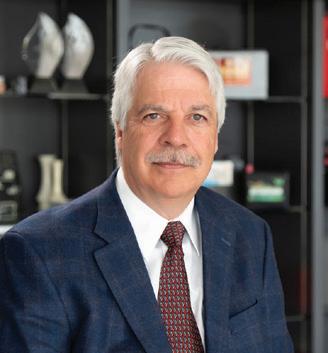
Energy storage: the next big thing for lead battery industry

for the lead battery industry and several emerging technologies, including flow batteries. Seeing this opportunity, we formed a new entity to demonstrate the lead battery’s suitability for the LDES market.
Our new group, Holy Grail Industries (HGI), will be working with a regional utility NIPSCO and the Pacific Northwest National Lab (PNNL) to better understand the grid requirements and duty cycles necessary for 10 hours of continuous operation.
tencies of solar and wind absolutely require energy storage to make them a practical energy source. Energy storage also allows the arbitrage of cheap, baseload power generated during off-peak hours to be shifted to satisfy peak demand. Energy storage plays a critical role in grid stability, resiliency, and transmission deferral required in rural communities.
The most important requirement for LDES is to develop systems that are operationally compliant and sustainable.
The energy storage market needs alternatives to the current misapplication of lithium-ion batteries in stationary energy storage systems, as these materials are in short supply due to the massive push in electrifying our transportation systems.
The US Department of Energy has recognized the requirement for Long Duration Energy Storage (LDES) and has released a Funding Opportunity Announcement (FOA) specifically requesting non-lithium solutions.
We believe this recognition by the DOE is a tremendous opportunity
HGI is a consortium of battery manufacturers, energy systems developers, and other stakeholders working to build a first-of-its-kind, multi-chemistry energy storage system and technology center to demonstrate the ability of non-lithium battery technologies to provide LDES.
The energy storage market is massive, far larger than markets lead batteries serve today.
The energy generation intermit-
The HGI team will be working with the DOE to develop systems that would be in front-of-the-meter and have a minimum of 5MW for 10 to 24 hours and as well as behindthe-meter systems of 500kW for a minimum of 10 hours.
The HGI hybrid system approach will show that lead and flow batteries are a timely and relevant solution for these energy storage applications. DOE awards are expected this summer.
The HGI team will be working with the DOE to develop systems that would be in front-of-the-meter and have a minimum of 5MW for 10 to 24 hours and as well as behind-the-meter systems of 500kW for a minimum of 10 hours.
I see five key trends for the coming year.
First, the public charging network will continue to expand. Charging as a Service (CaaS) is therefore expected to grow in 2023.
Second, technology will improve customer experience. One bugbear that is emerging is when EV users don’t move their cars once charging has finished.
For consumers, this leads to frustration and unnecessary delays. For providers, a clear loss of revenue. In 2023, we’re likely to
see new and innovative solutions unveiled to tackle the challenge. From charging point sensors and a wealth of new apps, to charges/fines for malpractice.

Third domestic charging will become king. While the headlines often surround public charging, it’s important to remember that more than 85% of charging takes place at home. I’m confident that the domestic charging market will see the fastest growth in 2023.
Fourth, Eco-smart charging will become commonplace. Data from
the Microgeneration Certification Scheme suggests that more householders than ever are adopting renewables to offset their reliance on mains supply and reduce their carbon footprint.
Fifth, V2G technology will develop further.
In the same sentence as smart charging, you’ll often hear the terms V2H (vehicle to home), V2X (vehicle to everything), V2L (vehicle to load) and V2G (vehicle to grid). After all, EVs are basically just mobile batteries.
THE YEAR
www.batteriesinternational.com Batteries International • Winter 2022/23 • 61
AHEAD
Jordan Brompton, co-founder and CMO, myenergi
Terry Murphy Hammond Group International
Roger Miksad, EVP, Battery Council International

Potential for significant growth
activities include OSHA’s efforts to rewrite the occupational standards for lead; EPA’s effort to tighten air emissions standards for battery manufacturers and recyclers; potential update to the National Ambient Air Quality Standards; and Superfund soil cleanup standards.
A review of lead under TSCA is coming. We will continue to see states take their own actions. BCI advocates in all these areas on behalf of the industry.
Looking ahead to 2023, the opportunities for battery applications have the potential to grow significantly, despite major regulatory headwinds in North America.
In 2022 we saw the re-emergence of wide-reaching regulatory challenges for domestic battery manufacturing, with a level of regulatory attention to lead not seen in decades. Significant regulatory
On the bright side, these regulatory threats are more than balanced by opportunities. With the federal government’s deepening commitment to cleaner energy policies, BCI’s engagement with policymakers is opening doors to government support for key efforts such as basic science research and demonstration projects. The US is to invest tens of billions of dollars in batteries to help secure a green future and a sustainable electric grid.
BCI works closely with DOE experts and staff to promote federal investment in the basic science R&D that will produce the next generation of lead batteries. BCI is also actively engaged with legislators on Capitol Hill to ensure that our members’ batteries are part of the nation’s future energy policies.
We are optimistic about new market opportunities like EV auxiliary batteries and local energy storage fast charge stations, behind the meter energy storage, and other grid-connected applications. The federal government has set a goal of achieving 50% of the nation’s fleet by EVs by 2030, and states such as California have set deadlines as early as 2035 to end the sale of internal combustion engine vehicles.

A barrier to meeting those goals will be the deployment/availability of EV fast chargers: an estimated 1.2 million public, and 28 million private EV chargers are needed.
Dry electrode processing, a key trend for next generation manufacturing
Traditional electrode manufacturing relies on slurry mixing, slurry casting, solvent evaporation, and compressing. The wet coating process is costly, energy and time-intense and on the cathode side relies on hazardous organic solvents.
Even though this process is wellestablished and has a track record for safety and reliability, battery experts from all over the world are investigating various strategies to optimize electrode manufacturing.
In Bühler’s view, the most promising strategy is to completely skip the solvent in this process and implement a fully dry process, aka dry battery electrode (DBE): electrode raw materials (active material, conductive additives) are mixed with a polymeric binder.
The most widely used binder is PTFE for a very good reason: PTFE fibrillates under shear which in turn results in a network of micro- and nanoscale fibers — this network immobilizes the powder materials and generates a soft composite structure.
Bühler is a process solution provider to many different industries. Apart from a major footprint in the food industry, Bühler is an important partner for equipment and technologies in the automotive industry (aluminum die casting, vacuum deposition, wet grinding and mixing solutions).
For more than 10 years Bühler has actively shaped the LiB electrode manufacturing by introducing a
fully continuous mixing process for electrode slurries. This process is based on twin-screw extruder technology. Opposed to traditional batch mixing processes, major advantages are the high productivity per line as well as consistent product quality.
Over the past years, the twin-screw extruder technology has proven to be the adequate tool for DBE. Raw materials are continuously dosed into the mixer, unit operations such as homogenization, dispersing and fibrillation of the polymer are combined in one machine.
The discharged composite material is of flaky and soft nature — it is subsequently calandered into an electrode film and laminated to the current collector.
As DBE is equally interesting for conventional LIB cells as well as future battery generations, such as all-solidstate batteries, DBE could very well be the next revolution in electrode manufacturing.
THE YEAR AHEAD 62 • Batteries International • Winter 2022/23 www.batteriesinternational.com
Roger Miksad
Battery Council International
Adrian Spillmann
Bühler
Adrian Spillmann, director market segment battery solutions, Bühler
ACCELERATING TOWARD A BRIGHT FUTURE

 Andy Bush, managing director, ILA
Andy Bush, managing director, ILA

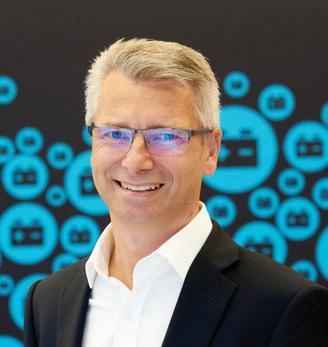
Uncertainty is the only certainty
feature strongly in the year ahead.
American mathematician John Paulos once wrote: “Uncertainty is the only certainty there is, and knowing how to live with insecurity is the only security.”
Worldwide we will strive for legislation that is fair, proportionate and allows the lead and lead battery industries to maintain their support for greater electrification and decarbonization.
In Europe a political agreement has been reached on the text of a new Batteries Regulation signalling a commitment to sustainable EU battery value chains for all technologies.
production — which is important, given that access to raw materials is such a major issue both in Europe and North America.
Despite this, the drive to achieve a ‘toxic free’ environment means many of the metals essential for battery manufacturing including cobalt, lithium, and lead are subject to EU chemical policies including REACH Authorization and Restriction as well as severe classification and labelling proposals.
Some years see major shifts in global trends and business conditions, and last year was just such a year.
The impact of war in Europe and the lingering consequences of a global pandemic have left their mark and will continue to do so in 2023.
Issues including energy supply and security, global trade flows, geopolitical tensions, achieving a carbon neutral future and ensuring effective stewardship of our products will all
If, as anticipated, the Regulation comes into force from April, we can expect more intensive discussion and debate as most of the detail in this important package has yet to be agreed.
The EU will hope that it creates a competitive advantage over less sustainable battery manufacturing elsewhere. But decision-makers need to be careful not to heap additional bureaucracy on industry thereby hampering the growth of the EU battery value chain.
On the positive side, the EU has identified lead as one of the key “valuable materials” in battery
We will probably hear early in the year if Europe’s chemicals agency ECHA chooses to recommend including lead metal on its list of authorized substances, a step that potentially damages EU investment in a critically important battery chemistry.
Just as important as our regulatory work, is the need to plan for the future. Thinking not just two or three years ahead, but 10, even 20 years, when the market for lead and lead batteries will likely be very different.
We need to focus on the new applications where lead batteries can play an important role and understand what performance improvements will be needed to meet demand and users’ expectation.
The times, they are changing
As seismic shifts go, the transition to electric vehicles is significant, but depending on your location in the
world, it is moving at a different pace.
The market for automotive lead batteries will continue to dominate for many years to come, with hybrid vehicles still playing an important role in many regions of the world, but as the EV revolution takes hold more and more advanced batteries will be required to support low voltage auxiliary functions.
In other applications associated with the transition to EVs, lead batteries will play an important role backingup charging stations as increasing demand for EV charging takes hold. CBI will continue with projects this year which will provide the technical support needed to support the roll out of lead battery-backed charging stations. We will also build on the success
of our project wins with new funding proposals. Last year we launched a $3.5 million military microgrid project in the US, and won €10 million ($10 million) funding for a lead battery microgrid project in Africa. Our focus this year is to secure more government and partnership funding for new projects in both the US and Europe.
We will continue to expand our performance research and targets for advanced lead batteries through our new technical program designed to take the technology to a new level of reliability and achievement.
Energy storage is a key market for the future. This drive will result in a huge demand for all battery technologies.
THE YEAR AHEAD 64 • Batteries International • Winter 2022/23 www.batteriesinternational.com
Andy Bush
ILA
Alistair Davidson, director, Consortium for Battery Innovation
Alistair Davidson Consortium for Battery Innovation
Adam Moore, CEO, Event Partners
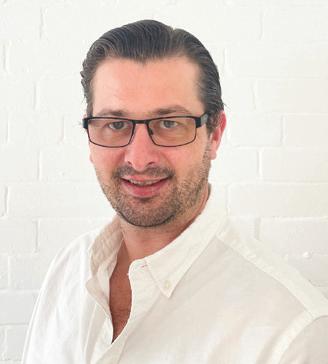
Internationally challenging factors
emergency funding and a booming UK battery business has been hampered by Brexit and uncertainty over the UK automotive sector.
The invasion of Ukraine has completely shifted the global energy map, with coal power stations once thought consigned to history being turned to for back-up solutions with the energy crisis turning 63% of drivers off electric vehicles according to a September 2022 AA survey of 12,500 drivers.
In addition to this EV subsidies are being targeted as governments look to reconcile with a global financial crisis.
been fully made to EV technology. Questions over range anxiety and suitability for covering long distances are being met head on by investments such as Biden’s Bipartisan Investment Law which is putting $7.5 billion in 500,000 EV chargers across the US.
This level of investment will lead to further discoveries which will aid energy density, battery management, safety and cost that will lead to further adoption.
2023 is going to be a very interesting year for the global battery industry with many internationally challenging factors. Clearly the unravelling of Covid restrictions in China is going to cause a tumult internationally.
Batteries International recently wrote about the European Battery Alliance seeking €100 billion in
All of the above is clearly going to hit industry forecasting from 2019 and although there will be severe delays in automotive deliveries caused by issues across the supply chain there are still many reasons for the global battery industry, along with investors to seize a great deal of opportunity.
2022 has seen further commitment from some of the world’s biggest auto makers such as General Motors and VW fully committing to electrifying their portfolio. The commitment has
Tim Harris, CEO and managing director, Redflow
2023 will be another challenging year but this is an industry with a long vision for a proven technology that has as close to guaranteed growth as one can reasonably ask for.
Across various markets this year we will see winners from those companies fast enough to adapt quickly, or with the reserves enough to last a long cold winter.
With the industry finally able to return to in-person meetings in 2022 it will be incredibly interesting to see what comes out of exhibitions and conference across the world in 2023 with the best indications for short, medium and long term investment.
Market for long duration to grow
2022 has been a very busy year for Redflow and one where we have made significant progress against our strategy.
We now have over 280 active deployments spread across nearly 20 countries and we are finishing the year with a pipeline of really exciting opportunities.
2023 promises to be another exciting year for us. The market for long duration energy storage continues to grow as businesses recognize the critical importance of energy storage in meeting climate change targets.
Continuing supply chain pressures, extreme weather events and the Ukraine war will continue to create opportunities for other energy storage technologies.
In Australia the new federal government’s commitments to an
accelerated pathway to a renewable future presents an exciting pathway for a proudly Australian developed technology like Redflow. This is supported by various state initiatives, including the Queensland renewable energy target of 70% renewables by 2030.
The focus on domestic supply of renewable energy supply has also accelerated — including the supply of batteries which is a positive shift. In addition, the passing of the transformative Inflation Reduction Act in August in the US will make long duration energy storage projects more viable to the market and customers in the largest energy storage market in the world.
We have built a solid pipeline of well over 1GWh of project opportunities. A number of those projects are multi-MWh in size
which follows our strategy of focusing on larger scale systems as well as executing on smaller energy storage solutions for commercial and industrial customers.
Our focus for 2023 will be converting some of the key deals in our pipeline into orders and projects, ramping up our Thailand factory to 80MWh a year as demand increases, extending our set of strategic partners in our key target markets and generating more traction in the market for our proven world leading energy storage technology.
We also will look to build the capabilities — such as UL listing in the US — which will be core to our future success.
Material sourced from public statement by Redflow in December
THE YEAR AHEAD www.batteriesinternational.com Batteries International • Winter 2022/23 • 65
Adam Moore Event Partners
Scott Fink, president, Sorfin Yoshimura
Electrifying the world
batteries and I believe we are adapting as an industry to successfully attack this. The lead acid battery industry is defined by its simplicity as it remains the safest and least expensive way to store energy, and that is not changing in the near term.
Although the emergence of advanced chemistries is upon us, lead acid batteries will certainly have a large piece of the pie along with devices like lithium ion, solid state, sodium ion, or hydrogen fuel cells.
2023 will be another year closer to electrifying the world and batteries are the undeniable key to consumers accessing this energy on demand. Decarbonization of the planet is part of a clean-up project unlike anything the world has ever seen.
When I joined the industry 20+ years ago and discussed with acquaintances socially about my vocation, they looked at me with a confused stare and waited for the conversation to end.
Today, when I am engaged in similar conversations, it immediately captivates stimulating chatter about their EV, or their love for smaller electric bills thanks to their solar panels, or the overall interest in the future of battery technology.
The universal need for batteries is growing, and it will continue to grow throughout this decade and probably into the next. We have an extraordinary opportunity to meet future demand for
Sorfin Yoshimura is well positioned to continue to support the industry as it evolves. We have leveraged our more than 40 years of industry experience and continue to add resources around the world. Our infrastructure of eight offices will grow in 2023 as we add our newest location in Monterrey Mexico.
Mexico is a critical manufacturing and trading partner for the Western Hemisphere which made our decision to add technical and commercial personnel as well as warehousing capabilities there an easy one.
SY has been working on various projects in the areas of advanced chemistry both for laboratory and production. Our global procurement team can identify supply-side partners to help the battery-making community execute their plans. Alignment with the right supply partners is critical. SY has a critical supply chain service role supporting the battery industry, and we will continue to listen to the needs of our partners and adapt our services so we can be as valuable as possible.
Hopeful for the year ahead
2022 has not been as good a year as we had anticipated. After
the normality we had reached in dealing with the Covid pandemic, the war in Ukraine started and — besides the terrible consequences for all people living in Ukraine — has created a new set of problems for our business.
Nevertheless, we are starting 2023 in a hopeful frame of mind. By increasing our
efforts being with our customers, listening to them, creating better solutions and services for their needs, and finally offering them a wider portfolio of products, we at Inbatec/Kustan feel in a good position for the coming year.
My prayers are with all the people in Ukraine.
Doug
Bornas, president, MAC Engineering & Equipment Company
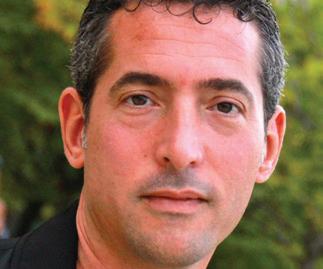
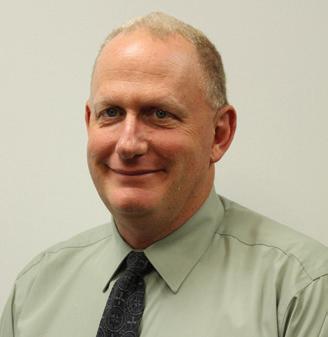
Optimistic on supply chain and prices

I can state unequivocally that the supply chain has made 2022 challenging in so many aspects. Delays and price increases has forced many companies to scramble to keep up with needs. When companies cannot get accurate information from vendors it affects the entire process and that is what has happened in 2022. That said, I remain optimistic that 2023 will see the supply chain get under control and prices to stabilize.
One factor here in the US has been the inability for most companies to find employees. That has been a 2022 theme. Clearly if you can’t get employees you can’t meet deliveries. This is starting to change as we end the year and that bodes well for 2023.
I have talked to several companies that have seen applicants coming in the last two months of the year looking for work. If this continues it will help solve what has been a huge problem for many companies in this industry in 2022.
As for MAC, we see a very positive 2023 as we are continuing many innovative projects that we see coming to fruition. We are hopeful this will bring needed equipment to the industry to help compete going forward.
THE YEAR AHEAD 66 • Batteries International • Winter 2022/23 www.batteriesinternational.com
Doug Bornas MAC Engineering
Scott Fink Sorfin Yoshimura
Christian Papmahl, managing director, Inbatec
Christian Papmahl Inbatec/Kustan

Global grid storage to feature prominently in 2023
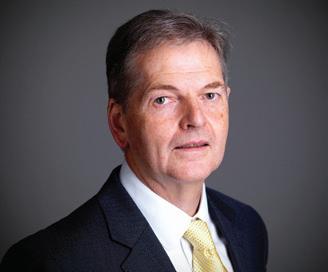
Battery energy storage is to accelerate in 2023 due to market demand and government policies to enable renewables to provide baseload power. A good example is the Sacramento Municipal Utility District in Northern California where, through a partnership with ESS, the utility plans to deploy up to 200 MW/2GWh of storage alongside renewable energy sources to provide power to some 60,000 California homes.
In 2023 we will see microgrid deployment increase, long-predicted solar interconnects to become a reality,
while the world starts looking at renewables as strategic reserves.
Utilities are increasingly focused on the resilience and reliability of solar and energy storage systems as much as cutting carbon emissions. With increased climate-driven natural disasters and increasing unreliability of grids reliant upon centralized generation in some parts of the world, microgrids will play an increasingly important role to deliver reliable, sustainable energy.

Long distance HVDC transmission will forge new connections between regions with substantial renewable resources and areas of high demand. For example, the Xlinks project between Morocco and UK will provide 3.6GW of reliable energy for an average of 20+ hours a day by 2030, equivalent to 8% of the UK’s electricity needs.

Similarly, a 2027 project in Australia will see a combination of the world’s largest solar farm and battery system in the north of Australia connected to Singapore via 4,200 kilometres of HVDC submarine cables.
The interconnects from clean energyrich regions to demand centres will provide new energy sources that will cut costs, improve energy security and cut carbon emissions.
The so-called “strategic reserve” will become an integral business strategy for IPPs, utilities and large C&I players seeking to deploy renewable energy projects.
Ongoing geopolitical issues, trade barriers and the pandemic have contributed to a disparity between global energy demand and available supply. As the demand for renewable energy grows, the strains on global supply chains will become difficult to manage.
Renewable energy infrastructure producers are already sold out over the next few years with solar panel producers and inverters accepting new orders from 2026. Due to this, the competition for securing equipment for long-term supply agreements and manufacturing capacity is set to increase, as project developers look to mitigate resource scarcity.
The coming year will see “strategic reserves” established to ensure equipment access is possible to meet demand going forward.
THE YEAR AHEAD 68 • Batteries International • Winter 2022/23 www.batteriesinternational.com
Alan Greenshields ESS
Watt-Flex® heaters hav e a p a t e n t e d s p l i t - s h e a t h d e s i g n t h a t e l i m i n a t e s c o s t l y B O R E S E I Z U R E . C o n t i n u o u s c o i l t e c h n o l o g y o f f e r s the longest lasting, most even heat used in: - GRID CASTING and FORMATION - COS DIE and LEAD PUMP - COVER SEALING PLATEN It's time you switched to Watt-Flex® cartridge heaters. DaltonElectric.com 978-356-9844
Alan Greenshields, director EMEA, ESS
In 2020 Inbatec and Kustan forged a partnership aimed at blending their special engineering skills in acid circulation and gel mixing in the battery formation process. John Shepherd reports on their progress to date.
Supply chains and the new world order
As the world emerged from the dark days of the pandemic lockdowns the lead batteries sector was not alone in being eager to return to business as usual.
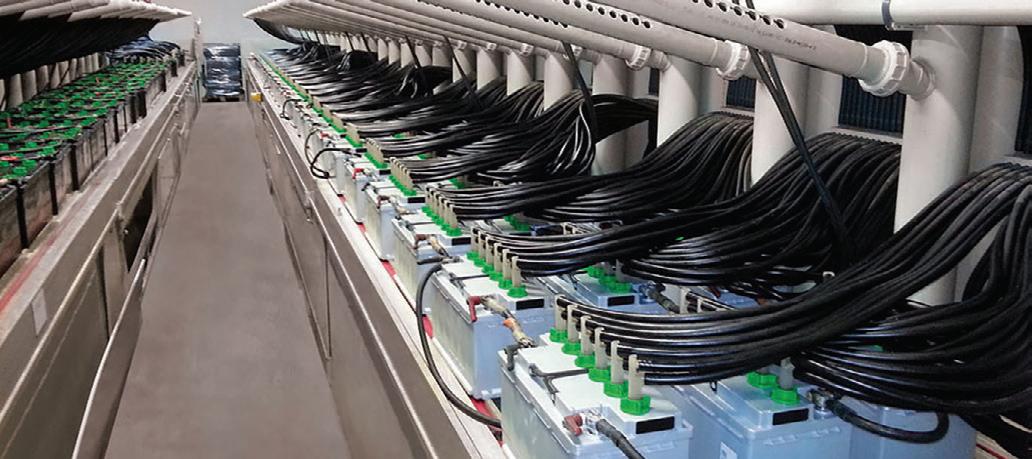
However, ‘normal service’ has not resumed, particular in terms of supply chains, which is now a legacy issue of Covid.
“Everyone is struggling with supply chain issues,” says Inbatec MD Christian Papmahl. “Components needed to build equipment now need much longer lead times than before the pandemic hit.
“In the past, customers planned for projects with an equipment lead time of around six months, now they need to be planning ahead much earlier, a year or more.”
Global VP of sales and business development, Nick Hennen says the days of having warehouses filled with parts, ready to be shipped off the shelves at a moment’s notice, are long gone.
“Now people are manufacturing direct to order. To be honest — and we’ve been told this by firms such as the big players in electronics — they are now putting their end users first
before supporting machine builders.
“So if the end user places an order to keep their operations up and running and we need the same part, we’re just so far down the list between the volumes that we buy and the fact that we are a machine builder, which puts us kind of toward the end of the pecking order.”
Both Hennen and Papmahl believe the situation is the new world order as far as supply chains go and if things do change, they doubt the situation will ever revert to pre-covid delivery levels.
Nevertheless, they rely on longstanding relations with customers to try and speed up supplies of parts they need.
Another challenge the partners have had to overcome is securing supplies of oil, which is the lifeblood of manufacturing a key product — plastic.
In addition to getting hold of the raw material in a timely manner, there is the whole dynamic of price fluctuations to contend with against the backdrop of a global energy crisis.
Hennen says they been fortunate in that they have had a couple of “very good global partners”.
“They helped us put together a three-year plan under which we were able to buy some bulk supply at certain points, which helped us out when we did not know what our needs were going to be coming out of Covid. That also helped us to avoid some of the huge price increases.”
Hennen says Inbatec Kustan “lifetime customers” have been invaluable for the future planning of the business.
“These are people who know they are going to buy a certain amount of machines from us in one year or the next, which in turn helps our planning. Those kind of partnerships with our customers have given us some flexibility.”
Hennen says his first impression coming out of the pandemic was that it took about a year for investment to pick up again and to start painting a picture of where the battery formation market was heading.
He says the investment pipeline is opening up again, but the reasoning behind purchasing decisions have changed.
“One thing I’m hearing a lot more, not just in Europe and the US but other places too, is that people are
BATTERY FORMATION www.batteriesinternational.com Batteries International • Winter 2022/23 • 69
really looking closely at energy efficiency. Just how much energy is a plant consuming and — with formation being the highest user of electricity in a lead acid plant — are there better ways of doing things?”
The attention of industry leaders is also turning to the management of efficiency and costs across all lead battery plant operations, such as dealing with wastewater and looking far more closely at ways of reducing energy usage.
A key area of focus involves the age of the rectifiers.
“As rectifiers from the 1990s and early 2000s age, they just generate more heat and less actual energy to the battery.”
Another important consideration, where Hennen says Inbatec Kustan “really shines”, is with what would be considered charge acceptance — how much energy needs to go into the battery to create the final product.
“When you compare the charge factor to other methods, in any type of lead acid formation the acid circulation is always going to come out ahead and so that’s become a point for discussion.”
Supporting companies’ desire to increase the level of production while also improving the performance of batteries is in play to and for that, says Hennen, the lead sector could take a leaf out of the lithium production book.
One thing that the lead acid sector has not really taken advantage of in the past is a vertical formation process, Hennen says.
“Traditionally, everything is done on the ground, stretching from points A to B. We’ve been taking a very good look, working with customers around the world, on specific ideas to making battery formation go vertical.
“Anyone who has been into a formation room for lithium will have seen how they can form batteries 40 feet up in the air using trains that are moved around using robotics, which is something that’s not unusual but it is for the lead acid world.”
Hennen says taking advantage of the space that exists above existing formation floors for lead batteries could increase density of production while avoiding huge floorspace expansion costs.
“For lead, it’s just about thinking differently.”
So does Inbatec Kustan have a prototype in play and who else might
they be up against in thinking ‘vertically’?
Papmahl says the partners are not yet in a position to talk about their plans in detail. “It’s not something that’s secret, but the secret will be in doing this effectively, with technology that we can provide to our customers. That is what we want to achieve.”
Talk of ‘secrets’ and tantalizing hints about the commercial and technological wizardry at play behind the scenes is always a tantalizing prospect for any reporter…
Pressed further, Hennen says: “We are at a point now where we are getting close to wanting to prototype something we’ve been working on for around 18 months.
“One of the dynamic changes I wanted to bring to the Inbatec Kustan teams when I joined the company two years ago was to ensure we had greater customer involvement when it came to business and product development.”
Instead of Inbatec Kustan teams huddling in a room to develop, conclave-like, a product that they might emerge with in the hope that customers like it, Hennen says the approach has been to spend time listening to customers about their needs.
“Using that approach, we have come up with prototype 3D models of different ideas which we then share with our customers who know the practicalities of the production world in a lead acid environment.”
The goal is simple — increasing the production of batteries per square metre.
However, the Inbatec Kustan group as an organization (both sister firms within the Red Dot holding company), has been working to expand the range of services they are known for.
Today, only about 50% of the group’s business has anything to do with formation, Hennen says. Wastewater management projects are now a key element of the business portfolio.
“We have worked hard over the past couple of years in identifying ourselves as experts in the manage-
ment of any of the caustic or corrosive liquids in a plant,” says Hennen.
Papmahl says the group has been particularly active in supporting companies in Europe, helping them to conform to sulphate requirements for wastewater streams.
“Most of the authorities dealing with wastewater streams are increasingly limiting sulphate content and we have developed a process that enables our customers to meet the given limits.
“This is an area where we expect to see a lot of projects in the future, especially with an increasing focus on issues of sustainability.”
In terms of the future direction of the lead battery industry, St Louisbased Hennen says there are around six large producers remaining in North America and all are taking fast-charging seriously.
He cites work by the Consortium for Battery Innovation that is pushing fast-charging as a growth market specifically for the stationary storage industry.
“With my background being somewhat in grid development for EVs, I can tell you that it’s a terrific market for the lead acid industry. From the US side and with CBI’s involvement, people are really gearing up for going after that market space over the next few years.”
Hennen says his company is also a player in India’s lead acid market. “There appears to be a significant amount of investment and a big growth curve going on in India right now.”
Papmahl agrees that there are still opportunities for lead acid to shine, not least in the European market because of a need to combat energy and economic crises.
“There is a recognised need for all battery technologies to expand energy storage systems and lead acid has a role to play alongside other chemistries,” he said.
“I am very optimistic about the further development of the lead battery industry. Lead is still a serious challenger in the mix of technologies.”
BATTERY FORMATION 70 • Batteries International • Winter 2022/23 www.batteriesinternational.com
“I am very optimistic about the further development of the lead battery industry. Lead is still a serious challenger in the mix of technologies”
Christian Papmahl, MD, Inbatec

Essential reading - Batteries International magazine WARNING MAY BE ADDICTIVE To receive your complimentary free copy contact Karen Hampton at publisher@batteriesinternational.com Tel: +44 1243 782275 www.batteriesinternational.com Each issue includes: n Global news round-up n Exclusive in depth features on new and promising battery and energy storage applications n Case studies of advances in battery productions to bring high performance, cost effective products to market n Analysis and forecasts on different markets and technologies from leading consultants and experts in the field n Examination of policy around the world that is enabling investment and growth in battery and energy storage technologies n Updated events calendar Accurate, intelligent and incisive reporting on the global battery and energy storage technology world
Battery formation is the last electrochemical stage in preparing a battery for market. Sara Verbruggen reports on the firms and machinery servicing this essential developmental process
The bright sparks at batteries’ journey end
BATTERY FORMATION – OVERVIEW
Lead acid battery manufacturing is made up of multiple steps, spanning the oxide and grid production process through to final assembly and inspection.
The formation process is a distinct, critical step, which typically used to be a manual process. However, demand by the lead acid battery industry for competitive products, higher volumes and better performing batteries has led companies to design and produce equipment for automating the formation process.
Today, formation equipment manufacturers supply to a global market, for making different types of lead acid batteries for various industrial and automotive applications. Most specialize in formation equipment that uses water bath processes, while some also specialize in acid recirculation.
Battery formation
During the battery formation process, the first chemical reaction occurs which prepares the battery to receive an electrical charge. After the battery’s positive and negative plates have been produced, the forming step occurs, which is when the battery is prepared to receive an electrical charge.
Formation can be performed with the plates installed in the battery case or before their installation.
The plates are immersed, either singly or in positive/negative pairs, into a solution of sulphuric acid for several hours. The reaction between the lead and sulphuric acid causes layers of lead sulphate to form on the plate surfaces, which
is critical to the electrochemical reaction that allows a battery to do its job.
In the forming step an electrical current is introduced to the battery. In dry formation, the plates are charged outside of the battery case in a large tank of electrolyte solution, while wet-formed batteries are charged inside the battery case. During wet formation, the battery cases are often submerged in a water bath to dissipate heat generated by the charging process as too high temperatures can decrease battery lifespan and impact performance.
The charging process comprises several charges, with breaks between, and so can take many hours to complete. The battery is then discharged and recharged. After forming, the battery acid is then dumped, the battery is refilled and the charge is topped off. Dry formed plates are removed from the electrolyte tank, dried, and assembled into the battery case. Dry formed batteries are shipped dry, without electrolyte solution in the battery.
After formation, the battery is given a high-rate discharge test using a high rate of current for a short period of time and after receiving the finishing charge, the battery is sent for final assembly and shipment.
After forming, the battery discharges a high rate of current for a short period of time. The high-rate discharge test is a quality assurance electrical load test conducted to verify the battery’s performance.
Zesar is an Istanbul-headquartered supplier of battery equipment and processing lines.
Since 2008 the company has been using its own patented designs for its equipment. The company’s factory for making its lead acid battery production tools is based in Manisa, in Turkey.
In 2014, Zesar developed its first formation line, delivered as a turnkey project for an automotive battery factory that year. Customers for Zesar’s end-to-end formation processing equipment include INCI GS Yuasa Turkey.
The company’s formation equipment consists of a water bath and associated equipment. The baths are operated to maintain a consistent temperature throughout the entire volume of water.
Zesar can provide a complete equipment package for the formation process, starting from planning the layout, ending with supply scrubber and cooling system, as well as charging jumpers.
Customers can be supplied with formation equipment all in one package, from a single provider, including water bath, loading and unloading equipment, as well as equipment for cooling, scrubbing and filtering processes.
The company says it also offers a quick turnaround for its turnkey battery formation equipment.
Additionally, Zesar manufactures acid and gel filling machines.
The main markets for Zesar’s formation equipment are in Europe, Africa and Australia.
Zesar’s newest innovation is an AGM lead battery water bath with capacity for 80 batteries, designed to speed up the loading and unloading process, since the AGM battery chemical reaction starts almost as soon as acid filling is completed.
WHO’S WHO IN BATTERY FORMATION 72 • Batteries International • Winter 2022/23 www.batteriesinternational.com
Zesar
DITEC Engineering
Established around 20 years ago, in Vicenza, DITEC Engineering is an Italian manufacturer of equipment for the production of lead acid batteries. The company has, over the years, designed solutions and built machines for the formation of lead acid accumulators and offers complete equipment from assembly to finishing, including formation.
In more recent years the company has focused on formation and acid preparation equipment.
DITEC’s machines are mainly used in production lines for motive as well as industrial batteries.
The company has installed its equipment in countries mainly in the EMEA region, including Turkey, Egypt, Greece, Italy, Hungary, Belarus, Slovenia, Russia, Algeria and Qatar.
DITEC provides equipment that can be customized for different customers’ requirements. Its machines can be supplied with different levels of automation for OEMs. Recent installations include supplying a complete formation plant to a customer in Hungary.
The formation water baths can be operated to maintain a homogeneous temperature of the water in all the areas of the bath, to achieve a better quality battery.
DITEC provides complete turnkey delivery of battery formation equipment, including design of the line, based on customers’ requirement, manufacturing the equipment, transport, installation and commissioning.
Innovations include an automatic formation system with a smaller footprint, aimed at battery manufacturers that want to increase production capacity within same available space.
The company cites the growth of the lithium ion battery market as a longterm challenge but also is confident about the future of for lead acid batteries. It is seeing new sources of demand in the Americas, with its first equipment installation in Argentina occurring in the coming months.
DITEC’s formation equipment range:
• Formation water baths
• Automatic loading and unloading systems
• Motorized conveyor belts
• Handling units (rotation, translation, cadencer)
• Buffering system
• Air suction and treatment plant
• Water treatment plant
• Cooling plant
• SCADA supervision
OMI
OMI, based in Milan, Italy, is a family-owned company founded by Osvaldo Maggioni, who has worked in the battery industry for more than 40 years.
OMI specializes in manufacturing formation equipment, ranging from individual formation equipment to turnkey projects for new battery manufacturing lines.
The company’s equipment spans production of lead acid batteries for different markets, including automotive and industrial, as well as different lead acid technologies, including flooded, AGM and VRLA.
All OMI equipment is produced in its factory in Italy and exported all over the world to lead acid producers, from Ecuador to the Philippines.
OMI says its acid recirculation system has specific characteristics, a result of many years of experience of working with this technology investment in R&D.
Key differentiators include:
• Recirculation is not continuous but based on the batteries’ internal temperature during the formation process
• Acid filling and recirculation are by gravity force only
• Acid preparation and acid fumes treatment included onboard
• All circuits are independent to enable maximum flexibility in production schedules
Equipment is designed to obtain better quality batteries, with the usual PbO2 transformation between 85%92%, while charging a total lower amount of ampere (up to 20% less) compared to any other formation process.
OMI supplies two main equipment models. The ARS modules, with external battery positioning, are mainly used for industrial 2V cells formation. The BFRT acid recirculation formation bench has integrated conveyors for battery loading/unloading and is mainly used in production of monobloc batteries, from truck dimensions to industrial.
OMI’s water cooling formation systems consist of patented water baths designed to manage water flow
with a cooling system that maintains the internal battery temperature during formation. This intelligent management of all the parameters of the process reduces formation time while increasing battery quality.
All OMI equipment is managed by a software-based supervisory system, developed by OMI, which fully controls production parameters. All relevant process data can be stored in a database and analysed by the customer quality team. OMI Rectifier Management Protocol also allows the full integration of chargers.
OMI also manufactures stations for acid filling. These consist of a direct filling solution for flooded batteries, used for first filling or the levelling process after formation and a volumetric Filling system for flooded batteries first filling and for AGM batteries.
The company offers integrated solutions for a complete control of filling parameters and batteries weights for AGM battery production lines.
OMI also provides acid preparation, storage and recovery systems that can be connected to formation plant. For a total turnkey formation processing line, customers can also order machines for the battery finishing process, ready for dispatching to the final customer.
Additional services provided by OMI include design of all equipment in-house and customized specifically to meet customer requirements. After complete assembly at its premises, OMI tests equipment before shipping to customer factories. It can supply detailed instructions for equipment installation onsite or provide onsite support, as well as for commissioning and start-up operation.
OMI also provides remote support for equipment functioning and optimization as well as services equipment and maintains stocks of parts and raw materials to meet delivery times and control cost increases, which materials such as steel are experiencing.
The company says it is continuously upgrading its machines, to better fit with customer needs and to increase equipment performance.
Materials and components costs
WHO’S WHO IN BATTERY FORMATION www.batteriesinternational.com Batteries International • Winter 2022/23 • 73
OMI says it is continuously upgrading its machines, to better fit with customer needs and to increase equipment performance



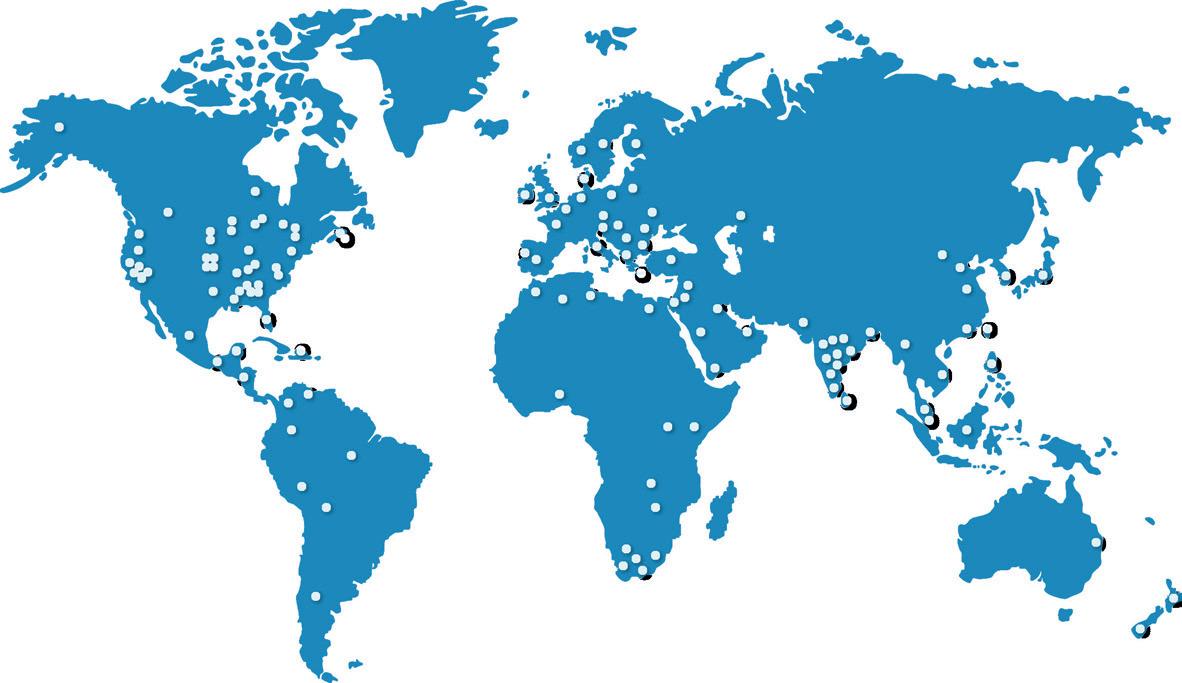








MAC ENGINEERING & EQUIPMENT COMPANY, INC. Install MAC and never look back MAC engineering offices and installations across the globe Visit www.mac-eng.com to see how we can bring the MAC Advantage to you!
increasing and lack of availability is an important criticality nowadays, as well as transportation costs.
OMI formation product range:
• Acid recirculation formation — fast formation for flooded batteries
• Advanced water bath formation — batteries are handled on free rollers, motorised conveyor belts, or with OMI’s exclusive tray system, from fully automatic to manual
• Filling process for flooded and AGM batteries — filling, levelling or recirculation stations, for car and truck batteries, for industrial cells, and for AGM and VRLA batteries
• Finishing and dispatching equipment — dumping stations, washing and drying tunnel, poles brushing, HRD and dielectric test stations and other equipment
• Acid preparation, storage and recovery — automatic and flexible systems, with continuous or batch preparation, based on customers’ preferences.
Inbatec
Inbatec, based in Hagen, Germany specializes in lead acid battery formation based upon acid recirculation equipment.

The company has developed customized systems that differ in their special type of process technology from conventional formation systems. Active circulation during the entire formation period reduces the formation time. with a high degree of reproducibility.
are used for the manufacturing of automotive starter as well as industrial batteries.
The standard module has a capacity of 320 cells per cycle, while the equipment can be customized for specific capacities based on customer requirements.
The company’s automotive modules have production capacities of up to 180 truck batteries or 600 car batteries as standard, while higher capacities are also possible based on customer needs.
Inbatec’s range includes:
• Acid mixer — for concentrated acid and demineralised water, to fully automate production of any desired process acid with a defined concentration and temperature
• Acid cooling unit — these draw off the heat produced in the mixing process and cool finished process acids down to a defined temperature and can be used as an integrated part of an acid mixing unit or as a standalone application
• Acid recycling — this is a closed circuit process reduces the cost for disposal and wastewater treatment, delivering fresh water and fresh acid that can be reused
• Process tanks — these are made to measure based upon required storage volumes, relevant space available and maximum permissible media temperature
Excellence in Engineered Formation Solutions.
The company’s formation machines
• Automation systems — measuring, instrumentation or control technology applicable optimally matched to production systems, including the planning and construction of control cabinets and PLC programming.
V-Efficharge
V-Efficharge Power Systems, in India, is an exclusively global licensed manufacturer of battery formation rectifier and test equipment, for Sweden-headquartered KraftPowercon.
Since 2021, V-Efficharge and KraftPowercon have been jointly offering solutions to the battery industry. V-Efficharge manages operations and KraftPowercon provides technological support.
The battery formation rectifier and testing equipment is used with lead acid batteries as well as with nickelcadmium and magnesium-sodium battery chemistries.
Key markets for the equipment include the Indian subcontinent, Russia, Turkey, South America, Middle East and south-east Asia.
Main features and advantages of V-Efficharge’s battery formation rectifier and test equipment:
One Team. Stronger Together.
• Highly efficient and reliable SCR controlled rectifiers
• True IGBT rectifiers with active front-end technology
• Web-based formation software
• In-house R&D facility to cater to the dynamic needs of battery industry
• In addition to manufacturing battery formation rectifiers and test equipment, V-Efficharge services this equipment, through annual maintenance contracts, and provides online technical support. It also upgrades older rectifiers through the addition of its control mechanism.
Early in 2020, INBATEC and KUSTAN combined and manufacturing expertise to create a new company on engineering excellence. As one team, we are industry in the lead-acid formation process. Going forward, we focus beyond just acid recirculation to be your consultant for formation solutions.
Our Threefold Mission Is Simple.
• Quality Engineered Solutions by working with customers to provide all aspects of a formation system leads to you meeting your specific formation goals focusing on operator safety.
• Process Innovation that pushes the lead-acid industry forward with products and services that help you form batteries safer, less expensively and with the highest quality possible.
Innovations include a 64 bit highspeed controller, composite material magnetics for higher efficiency and less power consumption.
• Satisfied Customers over the life of our equipment. listen and consult when offering a system and then with you through the years to responsively maintain and the highest production standards.
Globally, V-Efficharge is expanding into North America, Brazil, eastern Europe and also Africa.
The company has been diversifying its offering, beyond lead acid. New markets include formation rectifiers for lithium ion cells, DC fast chargers for electric vehicle charging and rectifiers for electric railway locomotives.
WHO’S WHO IN BATTERY FORMATION www.batteriesinternational.com Batteries International • Winter 2022/23 • 75
www.inbatec.de | www.kustan.de
Inbatec’s formation machines are used for the manufacturing of automotive starter as well as industrial batteries
Globally, V-Efficharge is expanding into North America, Brazil, eastern Europe and also Africa
International Conference on Lead and Lead Batteries
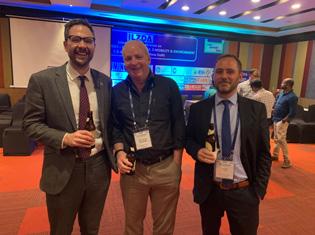
December 5-6, New Delhi, India
The lead industry in India is performing particularly well and battery makers and recyclers alike agree that lead batteries are also powering India’s economic growth. For delegates attending the India Lead Zinc Development Association, the good news kept on coming.
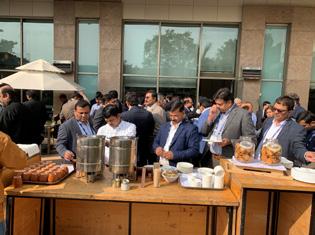
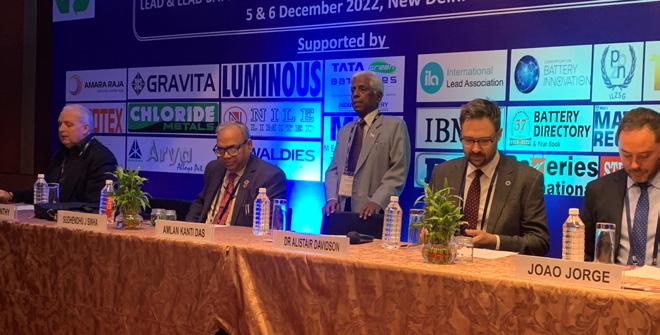
Firing on all cylinders … and more
There was an upbeat mood as the ILZDA’s executive director L Pugazhenthy, best known throughout the industry as Pug, swept in to welcome the early arrivals of what turned out to be a 150-strong attendance from at home and abroad for the conference proper — the association’s first international inperson meet since the lockdown years.
There was plenty to talk about at the post-conference evening reception, but not before delegates’ thirst for information about the lead scene in India had been quenched. With the pandemic gloom receding, the conference had much to discuss and much to cheer. Not least the presentation by the executive director of lead recycler Gravita India, Vijay Pareekh, who told delegates the value
of India’s lead batteries market stood at around $5 billion — representing 10% of the global market — and was set to reach nearly $8 billion in 2023.
Pareekh said that in addition to batteries, sectors expected to continue driving the growth of lead usage included cars, telecoms, renewable energy, e-bikes, e-tricycles and backup power systems for businesses.
And there was even more data to satisfy appetites for those eager to see India making headway in the economic fast lane. Analysis showed that India was the world’s fourth largest auto market in 2022 and set to accelerate into third place during 2023.
Meanwhile, he said the country’s EV market size, valued at $220 million in 2020, was expected to expand at a compound annual growth rate (CAGR) of more than 94% from 2021 up to 2030.
Total lead demand in India had increased at a CAGR of about 4% over the past five years and should reach 1.6 million tonnes by fiscal 2025, Pareekh said to audible murmurs of approval around the conference room.
Secondary lead should represent the major share of that growth, while primary lead is set to remain at about the same level of around 0.25 million tonnes, Pareekh said.
However, he warned that currency fluctuations continued to fuel volatility in the Indian market, which was as exposed as any other nation at a time of heightened geopolitical tensions and soaring energy prices.
India’s decade
Nevertheless, Pug insisted that India was “firing on all cylinders” — with lead batteries helping to drive the country forward as one of the world’s few growth economies in an otherwise troubled time.
In his opening address to the conference, Pug said global financial institutions such as the World Bank
EVENT REVIEW: ILZDA 2022 76 • Batteries International • Winter 2022/23 www.batteriesinternational.com
were acknowledging that this was “India’s decade”.
“We are planning to achieve a GDP of 6.5% for the current financial year and the batteries manufacturing sector and associated industries are playing a major role,” he said.
On the rise in popularity of EVs, Pug said that lead batteries were still a key requirement to keep most all of these new energy vehicles, as China likes to call them, on the road.
“The whole world talks about lithium battery manufacturing but where do lithium, cobalt, nickel and graphite really stand as sustainable sources?” he asked.
But he also cautioned against complacency in the lead industry, saying companies had to remain vigilant in cracking down on the informal, recycling sector.
He pulled no punches on this. “We must make sure that backyard recycling disappears from our dictionary,” he said. “We are a technologically-advanced country and we don’t need it.”
Navigating a spectrum of chemistries
He also highlighted a controversial ruling ahead of the conference by
the Delhi High Court, restricting the use of lead batteries in e-rickshaws, a move he said was “partly due to misinformation and partly due to lack of guidance.
“We’ve been using lead batteries in cars, motorcycles and scooters for decades without incidences of fires or explosions involving the batteries — unlike lithium products.
“This was a wrong move by the court and I hope that by talking to organizations and government ministries the situation can be rectified because lead batteries are such recyclable, reliable and affordable products,” he said.
A keynote speaker was Sudhendu Sinha, director of the powerful Niti Aayog policy think-tank — also known as the “brains trust” advising Indian prime minister Narendra Modi.
Sinha delighted delegates when he urged them to take every opportunity to stand up for their industry and be quick to counter any suggestions that new energy technologies could replace lead as a traditional battery industry”.

Indeed, India needed multiple battery technologies, he said.
Sinha, who advises on e-mobility and infrastructure in particular, said the think-tank had been part of India’s “national mission on transformative e-mobility and battery storage” since 2019.



“We want to become the world’s leading manufacturer of EVs and energy storage systems and, to support this, the government has invested around $7.5 billion in incentives in recent years,” he said.
Sinha said India could not become reliant on any particular battery chemistry or technology and warned that while a number of battery technologies could “co-exist, those that are not focused on safety, the
environment, safe and sound disposal and traceability will gradually become extinct”.
He said battery makers should work with the ILZDA to ensure the benefits of advanced lead battery technology continued to be brought to the attention of policymakers.
Sinha said “if any regulatory push were needed to further underscore the role of lead batteries, industry leaders should come and tell us”.
Meanwhile, the head of the country’s Luminous Power Technologies, CEO and MD Preeti Bajaj, said India’s battery storage sector was at a pivotal moment as the world embraces climate-friendly energy policies while facing energy supply challenges.
In an impromptu speech to the conference at Pug’s behest, Bajaj said data she had reviewed only a few weeks earlier indicated India was on course to see a compound annual growth rate in energy storage alone of nearly 16%.
Bajaj, who took up her post in July 2022, said prospects for the battery storage industry were bright, given increasing reliance and development of
EVENT REVIEW: ILZDA 2022 www.batteriesinternational.com Batteries International • Winter 2022/23 • 77
“We must make sure that backyard recycling disappears from our dictionary. We are a technologicallyadvanced country and we don’t need it”
Pug, executive director, of the ILZDA
“We want to become the world’s leading manufacturer of EVs and energy storage systems and, to support this, the government has invested around $7.5 billion in incentives in recent years”
Sudhendu Sinha, director, Niti Aayog policy think-tank



Bringing the industry together www.batteriesinternational.com To submit features, advertorials and artwork contact Jade: jade@batteriesinternational.com The Battery World Series Batteries International is exploring how India is set to become the new world battery superpower. Published by India, Asia’s next regional superpower, is about to challenge China’s supremacy in economic growth, future investment and cutting edge energy storage technology and manufacture. Read more about, and be featured in, Batteries International’s special publication in our Battery World Series starting this Spring. Scan this qr code to contact Jade INDIA
renewable power such as solar, the impact of geopolitical events on oil prices and the climate agenda, she said.
She encouraged battery developers to “navigate the spectrum of chemistries that will form energy storage solutions over the next five to 15 years.
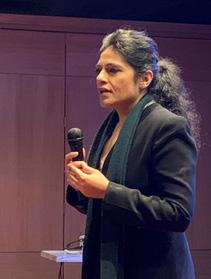
“We are in a growth industry it’s a transformational moment and a moment where storage absolutely is required across the world as a solution to power homes and ensuring grid stability.
“If there was ever a time to be in the battery storage market it is now.”
Rahul Walawalkar, president of the India Energy Storage Alliance and Customized Energy Solutions (CES) agreed that there were a myriad of opportunities for lead acid and advanced lead acid batteries in the stationary energy storage market in particular.
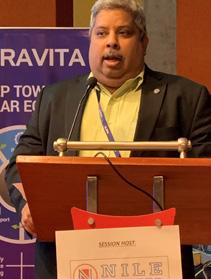
In addition to supporting infrastructure systems such as telecoms and railways, he said lead could make further inroads through rural electrification projects, rooftop solar and inverter backup towers.
Recent analysis by CES showed that in India’s e-mobility sector, lead acid batteries would continue to play a key role in powering electric vehicles.
Walawalkar said the market for lead battery powered two-wheelers and low-speed three-wheelers or e-rickshaws was estimated to be around 5.6GWh in 2022 and was likely to be about 5GWh-6GWh up to 2030.

He also said that India had become an emerging market for battery gigafactories. Based on latest project announcements, he said the country was forecast to surpass 100GWh of combined battery manufacturing capacity before 2030.
ILA managing director Andy Bush had to address the conference via an
online call, having been among others in the UK who could not attend in person.
Bush welcomed recent moves to introduce new waste management rules in India as a “starting point” for the country that could also work to the advantage of highlighting the environmental credentials of the lead industry.
recommendations from the alliance in the Indian market included developing a national roadmap that could reinforce commitments to sustainability and the environment, such as adopting an extended producer responsibility code for domestic battery manufacturers as part of efforts to tackle informal lead battery recycling.

The circular economy and lead’s role was a topic addressed in a wide-ranging and highly informative presentation by Asian Battery Conference chairman Mark Stevenson.
He asked how close the industry was to being a truly economically circular industry and said there were still challenges to overcome in a host of areas, such as reducing packaging, whether as much renewable energy as possible is used in manufacturing products and a clear-eyed look at other wastes generated.
Stevenson said achieving a truly circular economy involved tackling a number of complex issues that involved many aspects of a company’s activity and the industry as a whole.
But on the future of lead he was in no doubt.
However, he said the industry had to show leadership and it was in the hands of lead battery manufacturers to drive positive changes.
He also outlined how India could use recommendations from the Global Battery Alliance, which was founded in 2017 at the World Economic Forum to help establish a sustainable battery value chain by 2030.
Options for implementing
“When I’m asked if lead is going to be around for a long time I answer it like this… everyone is talking about EVs in Australia, where we have one of the richest copper mines in the world, Olympic Dam.
“The mine’s got 75 years of life in it, but for the upcoming EV market, the world needs seven of those to come online every year. Its rubbish to think you are going to find seven such mines year in year out. Lead is going to be around for a lot longer.”
EVENT REVIEW: ILZDA 2022 www.batteriesinternational.com Batteries International • Winter 2022/23 • 79
India is forecast to surpass 100GWh of combined battery manufacturing capacity before 2030
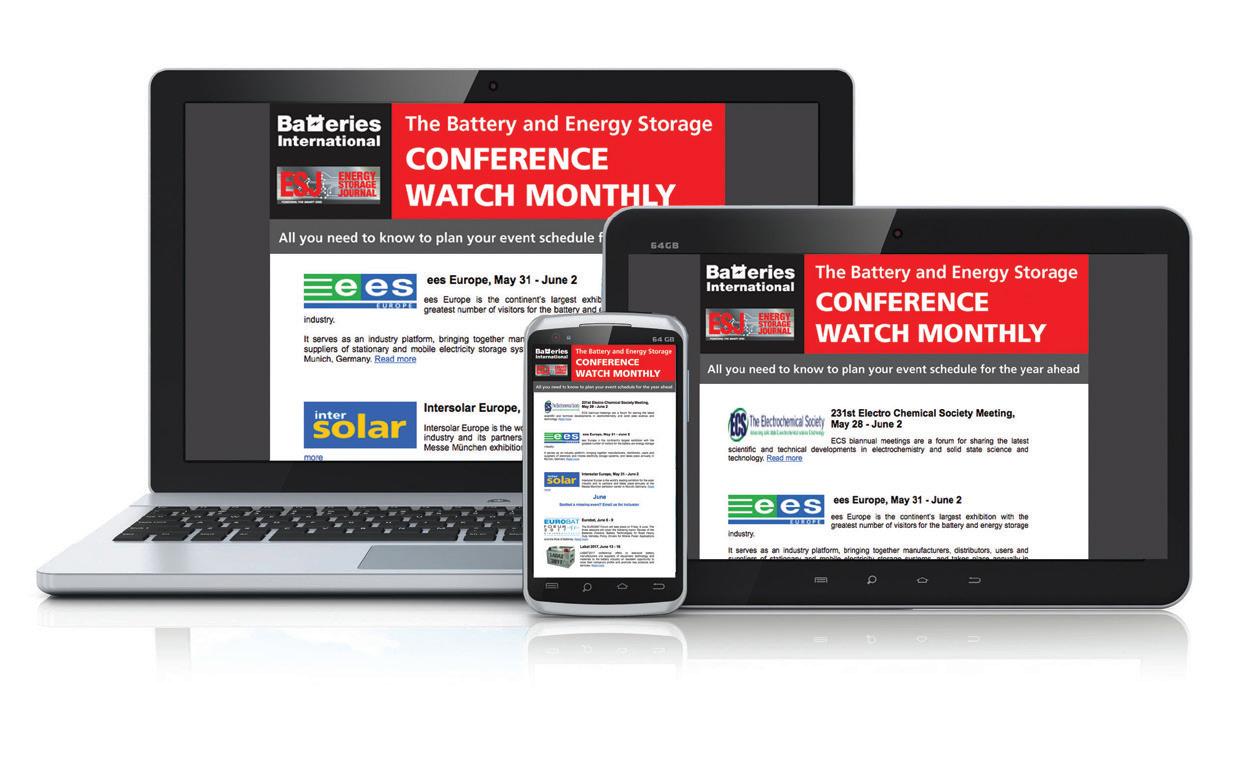
The definitive guide to battery energy storage conferences and meetings for the year ahead SUBSCRIBE FOR FREE Contact Jade Beevor jade@energystoragejournal.com The Battery and Energy Storage CONFERENCE WATCH MONTHLY
EV Battery Technology Conference and Exhibition
February 13 – 14
Long Beach, CA. USA
Battery technology is the future. The world’s emerging appetite is for electric vehicles. The automakers and companies for batteries are investing copiously to construct lighter, denser and affordable batteries. The formation and assembling of the battery is a key factor in performance and cost. But for the future, wholly different chemistries and bigger breakthroughs are expected to emerge.
Electric power is the latest technology that is revolutionizing the auto industry. There are many kinds of batteries, but lithium-ion is emerging as the dominating battery technology. However, research and development is continuing into alternative cell chemistries as developers strive to provide cheaper, more energy efficient products.
This is the area of focus for the EV Battery Technology Conference and Exhibition 2023. We will provide you with an exclusive platform from which to explore these issues and more in depth. Come and hear at first hand from the influential voices and key players that are driving the EV industry forward.
Contact Meta Tech
E: info@metatechevents.com
www.evbatterytechconference.com
Intersolar North America
February 14 – 16, 2023
Long Beach, California, USA

Dedicated to accelerating the energy transition #isnaesna23 will bring installers, developers, utilities, technology providers, policy makers, and key
stakeholders from around the world together for three days of impactful learning, networking and business.
With a comprehensive conference programme, lively Solar Games competition, and immersive exhibit hall experience, #isnaesna23 will deliver energy professionals an unmatched opportunities to gain critical insights, make meaningful connections and source quality products.
Contact Diversified Communications www.intersolar.us
EV Charging Infrastructure Conference and Exhibition
February 20 – 21
Long Beach, CA. USA
As the world embraces the e-mobility sector at pace, the importance of having access to a robust electric vehicle charging infrastructure will be a key enabler to accelerate the take-up of EVs.
This event will explore key challenges and issues facing the mobility revolution as countries strive to ensure they have a charging infrastructure ‘backbone’ to support the transformation to an electrically-powered mobility revolution.
Major players from across the EV industry will be on hand to share their expertise and provide insight and analysis for investors, policymakers, manufacturers and infrastructure developers alike.
From electric scooters to e-bikes EVs and e-buses, all sectors we will have it covered. Join us in Long Beach for what promises to be an invaluable experience.
Contact Meta Tech
E: info@metatechevents.com www.evcharginginfrastructureconference.com
NAATBatt Annual Conference
February 20 – 23
Arizona, USA.
NAATBatt 2023 will among the leading networking and market intelligence events in the North American advanced battery industry in 2023. Top executives, scientists and investors use the NAATBatt annual meeting to renew acquaintances, network with new companies and hear about the latest technology developments in the industry.
Joining NAATBatt International is a great way to build relationships in an industry that is helping to shape the 21st century, as vehicle technology, renewable energy, light aviation, maritime propulsion systems, robotics, weapons systems, medical devices, consumer electronics and the internet of things will all depend on electricity supplied by advanced battery technology.
Contact NAATBatt International
E: info@naatbatt.org
www.nac.naatbatt.org
Energy Storage Summit
February 22 – 23
London, UK
As Europe grapples with an energy security crisis, net zero targets and increasing amounts of intermittent renewable generation, energy storage continues to play an essential role in the power sector.
The 8th edition of the summit in 2023 will guide the market on how to maximise storage revenues and reduce energy costs.
Contact Solar Media
E: energystorage@solarmedia.co.uk
www.storagesummit.solarenergyevents. com
RE+ Northeast
February 22 – 23
Boston, MA USA
RE+ Northeast’s primary mission is to deliver on the objectives of both the Solar Energy Industries Association (SEIA) and the Smart Electric Power Alliance (SEPA) in a way that strengthens the solar energy industry domestically and globally, through networking and education, and by creating an energetic and engaging marketplace to connect buyers and suppliers.
Contact Smart Electric Power Alliance
E: customerservice@re-plus.com www.events.solar/northeast/
FORTHCOMING EVENTS www.batteriesinternational.com Batteries International • Winter 2022/23 • 81
Long Beach, USA
ACI Battery Recycling Europe
March 1 – 2
London, UK
The conference will bring together battery recycling industry experts, collection scheme operators and battery manufacturers to learn, share and discuss the current and emerging topics in the sector.
The two-day event offers an insight into the newest recycling technologies, latest updates in policy and regulations, and commercial benefits of recycling spent power batteries.
ACI’s Battery Recycling Europe will also showcase future opportunities in the battery recycling market and blend together inspirational keynotes, informative sessions and wonderful networking opportunities.
Contact Active Communications International E: luca@acieu.net www.wplgroup.com/aci/event/battery-recycling-europe/
The Distributed Energy Show
March 14 – 15, 2023
Telford, UK
The Distributed Energy Show is a freeto-attend exhibition and conference that will bring together the entire supply chain focused on distributed energy resources and provide a comprehensive overview of the array of technologies and systems that can enable them to generate, store, manage and distribute their own power and heat.
Contact Event Partners
Danny Scott, Exhibition Manager E: danny.scott@event-partners.org www.distributedenergyshow.com
Intersolar Middle East
March 14 – 16, 2023
Dubai, UAE
Middle East Energy (MEE), Intersolar, and ees, the leading energy exhibitions are joining hands to co-deliver an outstanding renewables and energy storage event at Middle East Energy. Renewables and energy storage at MEE is the largest gathering of solar and renewable energy industry professionals in the Middle East & Africa, offering the most effective trade focused platform to international manufacturers and distributors looking to meet regional buyers.
Intersolar and ees conferences provide solar and energy industries with platforms for sharing information and strategies. In collaboration with speak-
Seoul, Korea
ers, participants and partners, we shape the energy supply of the future.
Contact Solar Promotion www.intersolar.ae/en/home
Battery Japan
March 15 – 17, 2023
Tokyo, Japan
Battery technologies are the key to achieving carbon neutrality by 2050 as they will largely contribute to the popularisation of renewable energy and EVs.
BATTERY JAPAN gathers a broad range of technologies, components, materials, and devices for rechargeable batteries development & production. The show attracts professionals from all over the world.

Contact RX Japan
E: wsew.jp@rxglobal.com www.wsew.jp/hub/en-gb/about/bj.html
InterBattery
March 15 – 17, 2023
Seoul, Korea
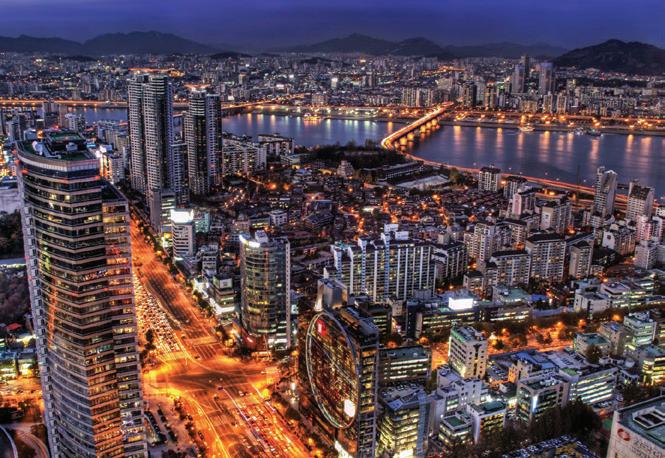
First launched in 2013 in Seoul, Korea, InterBattery is Korea’s leading battery exhibition showcasing various new products and technologies of battery industry.
InterBattery 2023 attracts more than 400 exhibitors(domestic/ overseas) and 1,200 booths including global top corporates of battery manufacturers such as Samsung SDI, LG Energy solution, SK On, CATL.
CHARGE Your Business through InterBattery 2023!
Contact InterBattery Secretariat
E: interbattery@coex.co.kr
www.interbattery.or.kr/en/
International Battery Seminar and Exhibit
March 20 – 23, 2023
Fort Lauderdale, Florida, USA
Founded in 1983, the International Battery Seminar & Exhibit has established itself as the premier event showcasing the state of the art of worldwide energy storage technology developments for consumer, automotive, military and industrial applications.
Key thought leaders will assemble to not only provide broad perspectives, but also informed insights into significant advances in materials, product development, manufacturing, and application for all battery systems and enabling technologies.
As the longest-running annual battery industry event in the world, this meeting has always been the preferred venue to announce significant developments, new products, and showcase the most advanced battery technology.
Contact
Cambridge EnerTech
E: ce@cambridgeenertech.com
Tokyo, Japan
www.internationalbatteryseminar.com
FORTHCOMING EVENTS 82 • Batteries International • Winter 2022/23 www.batteriesinternational.com
The Leading Exhibition Series for Batteries and Energy Storage Systems


JUNE 14–16, 2023, MUNICH, GERMANY
EUROPE’S LARGEST EXHIBITION FOR BATTERIES AND ENERGY STORAGE SYSTEMS www.ees-europe.com
AUGUST 29–31, 2023, SÃO PAULO, BRAZIL
SOUTH AMERICA’S HOT SPOT FOR BATTERIES AND ENERGY STORAGE SYSTEMS www.ees-southamerica.com
DECEMBER 2023, GANDHINAGAR, GUJARAT, INDIA
INDIA‘S LEADING ELECTRICAL ENERGY STORAGE EXHIBITION www.ees-india.in
FOLLOW US






2023
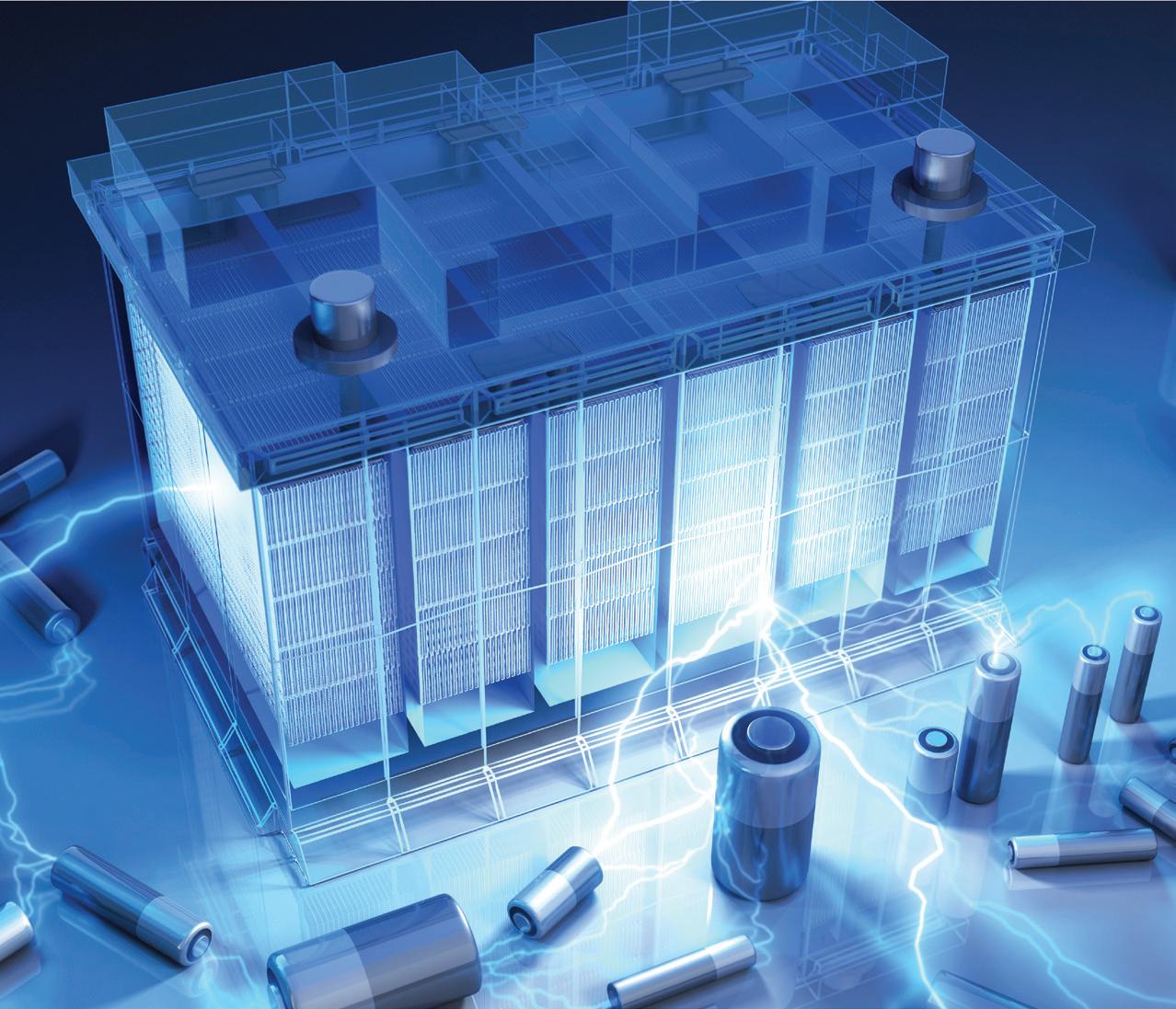

























SAVE THE DATE
8TH International Secondary Lead and Battery Recycling Conference — Recycle100
September 4–5
Siem Reap, Cambodia
Fourteen years ago, the first Secondary Lead Conference was held in Macau, China, bringing together all aspects of the leadacid battery recycling and smelting industry. It has successfully brought the industry together to discuss, debate and learn.
Over that period, the battery recycling industry has continued to develop and now expanded into an exciting new phase, the recycling of lithium-ion batteries.
The conference will discuss the many technical and market aspects of the recycling industry of various battery chemistries. The conference’s overall themes will not change, as we will hear from some leading recycling, smelting and environmental speakers worldwide about the best methods for collecting, breaking, and recovering valuable elements.
Contact Conference Works — CW3 Events
E: events@conferenceworks.com.au www.recycle100.events
RENMAD Storage 2023
March 29–30
Toledo, Spain

The energy storage market in Spain is expected to grow strongly in the next years. With the goal of achieving a 100% renewable country by 2050, Spain expects renewable electricity generation to account for 74% of the total by 2030 and energy storage to achieve an additional 6GW of power.
Although there is still a lot of uncertainty around it, there are already companies betting on energy storage… And they will be present at the fourth edition of RENMAD Storage! The event that brings together the main players in the industry and discusses the key issues of energy storage.
With more than 400 attendees and 60 panels and two entire days discussing the latest trends in energy storage, the fourth edition of RENMAD Storage is coming to Spain on March 2930, 2023.
Contact ATA Insights
E: manuel.bernaudo@ata.email www.atainsights.com/renewablesandstorage/en/
RE+ Texas
April 5 – 6
San Antonio, Texas, USA
RE+ Texas attracts energy professionals from across the solar and storage markets each year. Featuring two days of exhibition, a robust education schedule and networking opportunities, attendees will hear from visionary leaders on what’s next for the Texas clean energy market to propel businesses to the next level.
Contact RE+ Events / Solar Energy Trade Shows
E: customerservice@re-plus.com www.re-plus.events/texas
RE-Battery 2023
April 19–20
Bologna, Italy
RE-BATTERY 2023 is Southern Europe’s largest international trade show for the collection, sorting, processing and reduction of batteries, electric vehicles, e-mobility and e-waste.
RE-BATTERY 2023 is the first-ever professional event to be held in Italy, showcasing hundreds of exhibitors in a free-to-attend show which includes expert speakers from around the world–all invitees to various conference sessions that already anticipate 1000 participants.

Key topics discussed range from recycling technologies to materials recovery solutions, green electronics, sustainable materials, non-toxic substitutes and end-of-life strategies, as well as regulatory and business models to help reduce the environmental impact of all forms of consumer and industrial E-Waste.
The event will focus upon lithiumion batteries for e-mobility transportation, electric vehicles and e-mobility products, but will also cover PV panels, wearables, IoT, 5G and much more.
Contact A151 Srl
E: sales@re-battery.show www.re-battery.show
Battery Tech Expo
April 20
Silverstone, UK.
The battery industry is going through a power revolution with big technology companies investing heavily in the next generation of battery development and energy storage.
Battery Tech Expo brings together professionals from across the advanced battery technology and energy storage sector to connect, innovate and do business. The event will provide an opportunity to showcase the latest products, technologies and services covering battery management systems, EV batteries, battery storage and developments including for commercial and mobile power devices.
Contact 10fourmedia
David Reeks
E: david.reeks@10fourmedia.co.uk
www.batterytechexpo.co.uk
FORTHCOMING EVENTS 86 • Batteries International • Winter 2022/23 www.batteriesinternational.com
Toledo, Spain
Louisville, Kentucky, USA

SAVE THE DATE
20th Asian Battery Conference and Exhibition — 20ABC
September 5–8
Siem Reap, Cambodia
The Asian Battery Conference has a long and proud history of bringing together the world’s leading battery industry C-level executives, marketers, technical staff and sales teams biennially to remain updated on new and emerging technologies, understand future directions, meet new suppliers, conduct business and network with industry peers.
An integral feature of the Asian Battery Conference is the exhibition. A true international opportunity, the exhibition sees the world’s major battery companies come together to showcase their capabilities and leverage off the considerable business developments and direct sales opportunities the conference provides.
The Asian Battery Conference has seen tremendous growth since its inception in 1986, not only in terms of the size of the event but more importantly its ability to act as an educator and business development tool for all the worlds key battery industry executives.
The importance of the Asian Battery Conference to the global battery industry can be demonstrated by the success of the past four conferences.
Contact Conference Works — CW3 Events
E: events@conferenceworks.com.au
www.asianbatteryconference.com
BCI Convention + Power Mart Expo
April 23 – 26
Louisville, KY, USA
BCI brings together the leading lead battery manufacturers and recyclers in North America and around the world, and establishes technical standards for battery manufacturing and actively promotes workable environmental, health and safety standards for the industry.
Each year, hundreds of lead battery industry executives gather at the industry’s premier event, the BCI Convention + Power Mart Expo, for three days of networking and exposure to valuable industry knowledge. Past convention presentations have included global regulatory and legislative updates, lead market analyses, the BCI Failure Mode Study, and industrial and transportation batteries outlooks.
The Power Mart Expo allows suppliers to display products, equipment and new innovations to an audience of senior executives from major battery manufacturers.
Contact Battery Council International
E: info@batterycouncil.org
www.convention.batterycouncil.org
Energy Tech Summit
April 26–27
Warsaw, Poland
Over the past three years, Energy Tech Summit has become one of the main events in the clean energy industry.
Taking place in Warsaw, the event will convene the entire energy tech community developing relationships that truly move the needle. This year, we will put the emphasis on rethinking decarbonization pathways.
Join us for an unforgettable event
and be part of a movement pushing boundaries in the energy industry.
Contact Future events, UAB
E: info@energytechsummit.com
www.energytechsummit.com
International Advanced Battery Conference
April 26 – 28
Aachen, Germany
Now preparing for its 15th edition, the conference supported by partners Haus der Technik, Essen, the ISEA Institute, RWTH Aachen University and the MEET Battery Research Centre Münster, will bring together engineers and scientists from the entire field of battery technology at the Eurogress in Aachen in 2023. This event is always guaranteed to attract strong participation of young scientists and innovative companies among its global audience.
Contact Haus Der Technik — HDT

E: hdt@hdt.de
www.battery-power.eu/en/
Solar + Storage Mexico
April 26 – 28
Mexico
Solar + Storage Mexico turns the spotlight on developments in the energy and solar technology sector, as renewable energy is expected to attract investments worth more than $100 billion by 2031.
The exhibition is operated by Deutsche Messe, one of the leading trade show organizers worldwide, SNEC PV Power Expo, the world’s leading solar technology event based in Shanghai, China and Solar Power International, the organizers of North America’s leading events and conferences.
Contact Hannover Fairs Mexico
E: info@hmexico.mx
www.hfmexico.mx/solarpowermexico
FORTHCOMING EVENTS www.batteriesinternational.com Batteries International • Winter 2022/23 • 87
India Energy Storage Week
— IESW
May 1–5
New Delhi, India

India Energy Storage Week (IESW) is a flagship international conference and exhibition by India Energy Storage Alliance (IESA).
It is India’s premier B2B networking and business event focused on renewable energy, advanced batteries, alternate energy storage solutions, electric vehicles, charging infrastructure and micro grids ecosystem.
The forthcoming edition of IESW is expected to attract global participation with an intent to facilitate bi-lateral trade, which will invite 20+ countries, 100+ regulators and policy makers, 300+ industry leaders, 100+ partners and exhibitors and 1000+ delegates. Contact India Energy Storage Alliance — IESA www.energystorageweek.in
Battcon
May 9–12
Orlando, Florida, USA
Battcon is an educational program where users, engineers and manufacturers stay up-to-date by learning the latest industry trends and how to apply best practices to the manufacturing, safety, selection, installation, and use of stationary batteries.
The core conference provides an intense learning experience unavailable from any other industry source.
Presentations include cutting edge topics delivered by leading authorities. Open discussion panels and breakout workshops geared to the utility, datacentre and telecom segments are also included in the conference.
Data-centre, telecom or utility industry professionals who are working
in mission critical facilities or are involved in the development of stationary batteries and related equipment will find the Battcon experience is second to none.
Every year, more end users are discovering Battcon, the conference geared for industry novices and seasoned battery professionals alike. More than 600 stationary battery users meet at Battcon for three days of professional development and networking with industry experts and peers.
Contact www.battcon.com
All Energy and Decarbonize Summit
May 10–11
Glasgow, Scotland. UK

All-Energy takes pride in being the UK’s largest low carbon energy and full supply chain renewables event for private and public sector energy end users.
Each year, we connect suppliers of renewable and low carbon energy solutions and policy makers to developers, investors and buyers from around the world to discuss new technologies, and blow us in the right direction to tackle the biggest challenges of our time.
Contact Reed Exhibitions www.all-energy.co.uk
World Energy Storage Exhibition and Forum
May 10–11, Rotterdam, Netherlands
The Sustainable Energy Council is pleased to announce the World Energy Storage Exhibition and Forum will take place at the Rotterdam Ahoy, colocated with World Hydrogen 2023.
As we work towards a decarbonized world, energy supply will be primarily sourced from renewable power sources such as wind, solar, hydro, thermal, creating an unprecedented need for huge energy storage capacity, innovation and technology enabling the world to shift to a new energy reality.
The energy crisis and the war in Ukraine have highlighting the urgent need for countries to be less dependent on the spot trade of energy and increase their resilience through energy storage capacity.
The World Energy Storage Exhibition and Forum brings together the world’s energy and battery technology pioneers paving the way for crucial energy storage advancements to solve many of the current energy issues.
Contact
The Sustainable Energy Council
www.world-energy-storage.com
Future Energy Asia
May 17–19, Bangkok, Thailand
Future Energy Asia is the region’s leading energy transition event, providing a business platform that brings together Asia’s natural gas, LNG, renewable and power generation industries to identify solutions and strategies to foster a secure, affordable and low-carbon energy mix for the continent.
Contact
DMG events
E info@futureenergyasia.com
www.futureenergyasia.com
The Battery Show Europe
May 23–25
Stuttgart, Germany
The Battery Show Europe Expo provides attendees the chance to find solutions to their application needs, get a look at the latest technologies, and connect with their peers.
Meet manufacturers, suppliers, engineers, thought leaders and decisionmakers for a conference and trade fair focused on the latest developments in the advanced battery and automotive industries.
Contact
Informa Markets
E: thebatteryshowcs@informa.com
www.thebatteryshow.eu
FORTHCOMING EVENTS 88 • Batteries International • Winter 2022/23 www.batteriesinternational.com
New Delhi, India
Glasgow, Scotland

EUROBAT General Assembly/ Forum
June 6–7
Madrid, Spain
EUROBAT is the association for the European manufacturers of automotive, industrial and energy storage batteries.
EUROBAT has 52 members from across the continent comprising more than 90% of the automotive and industrial battery industry in Europe. The members and staff work with all stakeholders, such as battery users, governmental organizations and media, to develop new battery solutions in areas of hybrid and electro-mobility as well as grid flexibility and renewable energy storage.
Contact E: eurobat@eurobat.org www.eurobat.org
ees Europe
June 13–16
Munich, Germany
Discover future-ready solutions for renewable energy storage and advanced battery technology at ees Europe! Europe’s largest, most international and most visited exhibition for batteries and energy storage systems is the industry hotspot for suppliers, manufacturers, distributors, and users of stationary electrical energy storage solutions as well as battery systems.
In 2023, more than 450 suppliers of products for energy storage technology and systems will be present at ees Europe and the parallel exhibitions of The smarter E Europe taking place in Munich.
The exhibition will be accompanied by a two-day energy storage conference where leading experts delve into current questions of this industry.
Contact Solar Promotion GmbH
E: merz@solarpromotion.com www.ees-europe.com
Advanced Automotive Battery Conference Europe — AABC Europe
June 19–22, Mainz, Germany
Take part in this game-changing event where battery technologists from leading automotive OEMs and their key suppliers explore development trends and breakthrough technologies shaping the future of vehicle electrification.
As more European nations and international automotive OEMs invest in their commitment to vehicle electrification and eMobility, the 2023 AABC Europe event propels that momentum forward, presenting unparalleled coverage of the research and development that helps drive outcomes and supports the next generation of electric vehicle batteries.
Contact Cambridge Enertech www.advancedautobat.com/europe
Pb2023 — International Lead Conference
June 21–23, Athens, Greece
Pb2023 is the premier event for analysis, networking and discussions on all matters relating to lead, including mining, production, batteries, recycling and the environmental management of the metal and its compounds organized by the International Lead Association.
This year the Pb2023 programme includes the latest market trends and forecasts from world-renowned industry experts, a workplace lead exposure management workshop, together with all the latest updates on regulation, sustainability and advanced lead battery research from the Consortium for Battery Innovation.
Registration will open mid-February 2023.
Contact International Lead Association
Tel: +44 (0)20 7833 8090
E: enq@ila-lead.org
Battery Cells and Systems Expo
June 28–29
Birmingham, UK

Battery Cells and Systems Expo will bring together automotive manufacturers, electric utilities, battery system integrators, cell manufacturers and the entire manufacturing supply chain.
A truly unique showcase, companies from around the world will use the show to launch products and demonstrate their technology to an audience of over 4,000 professionals.
Contact Event Partners
Lana Fowler, event director +44 (0)1273 286362 | lana.fowler@event-partners.org www.batterysystemsexpo.com
Battery India
July 5–7
Bengaluru, India
Battery India will bring together from all of the world leading battery manufacturers interested in technology and business cooperation, battery equipment and component manufacturers, experts in waste management and in environmentally sound technologies for the recycling of batteries.
Contact
Battery and Recycling Foundation International — BFI www.bfi.org.in/index.htm
Plugvolt Battery Seminar
July 18–20
Plymouth, Michigan, USA
Plugvolt’s battery seminar is a conference fostering joint development efforts to advance energy storage solutions.
Event attendees will get an exclusive opportunity to tour INTERTEK’s 200,000+ square-foot Battery Testing Center of Excellence to learn about the latest testing methods for batteries of all sizes from coin-cell through electric vehicles.
INTERTEK performs a variety of tests out of this facility, to industry and global standards, including lifecycling, vibration, environmental, abuse and safety certifications. See this facility first-hand and ask questions to resident experts, and enjoy some light appetizers and beverages while networking with industry peers.
Contact Plugvolt
E: juratesoman@plugvolt.com www.batteryseminars.com
FORTHCOMING EVENTS 90 • Batteries International • Winter 2022/23 www.batteriesinternational.com
Birmingham, UK
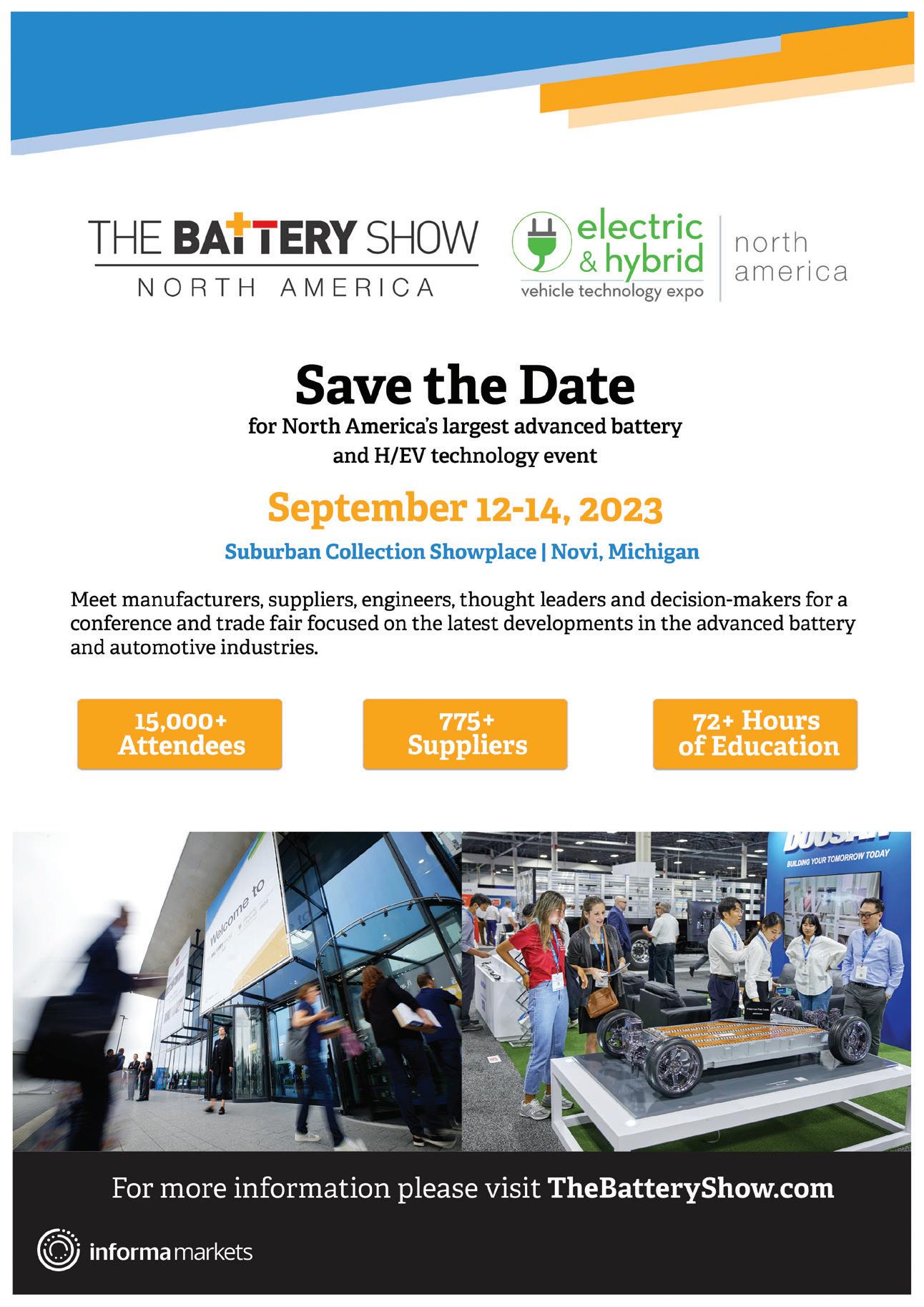
CAST ON STRAP FOR CAR & TRUCK BATTERIES
DO YOU NEED HELP TO IMPROVE YOUR COS PROCESSES?
GENERAL FEATURES
• SLI Battery Cycle time : Approx. 5 batteries/min. of L3 battery
• AGM Battery (optional) : 3.4 Batteries/min. of L3 battery
• Full automatic operation in each stations
• Changeover for Battery Size: Approx. 20 minutes
• Dust and fume extraction system for working environment

WE SPECIALISE IN

MANUFACTURING
We manufacture
Machinery and Parts
TECHNICAL TRADING
Contracts, Logistics and Customerisation
CONSULTING
We love to help with our expertise
Supplier of first class equipment and services to the Lead Acid Battery Industry since 1950

HVIDSVAERMERVEJ 135 · DK-2610 ROEDOVRE · DENMARK · TEL +45 4453 4546 · WWW.ACCURATE.DK
LIST OF ADVERTISERS www.batteriesinternational.com Batteries International • Autumn 2022 • 93 Our advertisers enjoy their elite status with us! Join them! Contact Karen Hampton: karen@batteriesinternational.com or call +44 7792 852337 Company Page number Accurate Products 92 Accumalux 94 Advanced Battery Concepts Inside Front Cover Asian Battery Conference and Recycle100 84, 85 Atomized Products 25 Batek Makina 43 Battery Show Europe 89 Battery Show North America 91 Batterie Fullungs Systeme 44 CAM srl 12 Cellusuede 35 Dalton Electronics 68 Dross Engineering 22 Eagle Oxide 18 Entek 63 Farmer Mold Inside Back Cover Froetek 30 Hadi Offerman 56, 57 Hammond Group, Inc 6, 7 Inbatec 48, 49 IKA 35 MAC Engineering 74, Outside Back Cover Maccor 3 Nanobase 11 Penox Group 16 Sashas International 53 Sorfin Yoshimura 39 Solar Promotion GmbH / ees global 83 STC 21 STTS Brazing Solutions 60 Wirtz Group 28, 29 Zesar 67



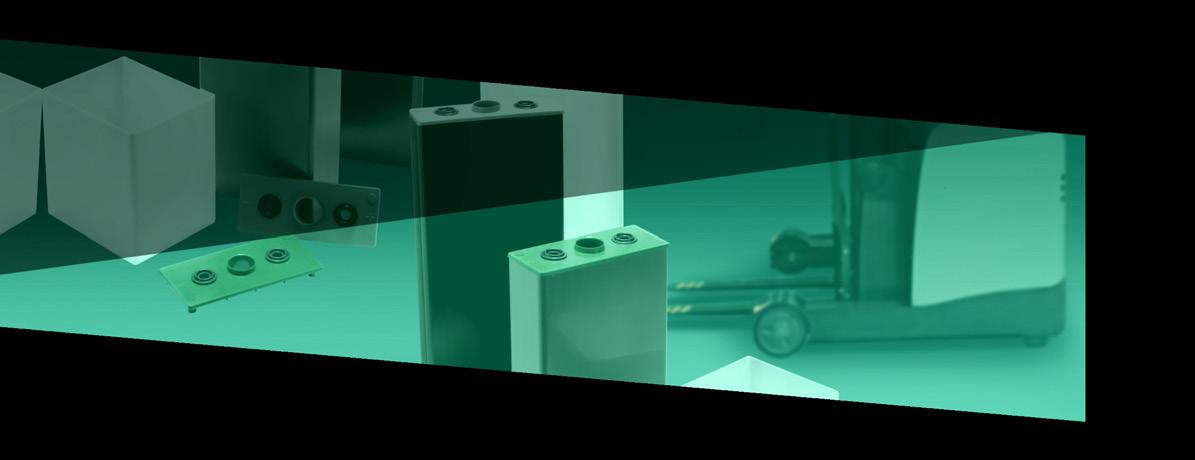
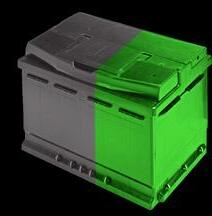


AUTOMOTIVE HEAVY DUTY INDUSTRIAL
know-how in Recycled PP for high-end, cost-effective & GREENER batteries
STRONG
The last word
Death of the Newshound? The News-puss cometh
For too many years journalism has been dogged by the idea of a newshound relentlessly following up leads, sniffing out stories and collaring the baddies.
But it’s just too canine for newsgatherers at Batteries International who have just launched their own News-puss.

This week’s News-puss is our proprietor’s Ragdoll cat. “They’re gentle, calm and sociable but also active, intelligent, and vocal — far better than all my staff put together,” he says.
“Watch out for our next bulletin’s NewsPuss where we’ll be featuring the British Shorthair … ‘pairing sweetness with strength’.”

The Curse of Moe returns
Long term readers will well remember the legendary Moe Demarais, former EVP at Battery Council International. Moe’s inability to nip out for a lunchtime snack without breaking a collar bone or leg or arm was legendary.
“We called it the Curse of Moe,” his colleagues used to say.
Chicago’s municipal authorities even printed warning signs by kerbs — “Careful Moe! Flat surfaces ending soon”.
Since then the Curse of Moe has claimed many a victim — inevitably always in the
The magic formula?
It’s a question that’s always perplexed. What was the secret behind our industry’s 2019 Nobel prize winners’ success for the invention of the lithium battery.
Although this magazine has interviewed all three Laureates — John Goodenough, Stanley Whittingham and Akiro Yoshino — none would reveal their enigmatic potion. But now a partial explanation has appeared courtesy of a paper published by Franz Messerli, MD, 10 years ago …
run-up to the Great Annual BCI Event.
One can only think of ILA’s Maura McDermott, Bitrode’s Laura Schlegal, BostonPower’s Vishnu Surajbali or Sovema’s Terry Hartman who have fallen under the spell of the curse.
And now Batteries International’s Senior Publisher-in-Chief Karen Hampton has succumbed to a double leg-break.

“I was just thinking of what fun this year’s drinks reception in Louisville would be when the stairs flew up and tripped me,” she says.
“The slope of the regression line allows us to estimate that it would take about 0.4 kg of chocolate per capita per year to increase the number of Nobel laureates in a given country by 1. For the US, that would amount to 125 million kg per year” — Franz Messerli
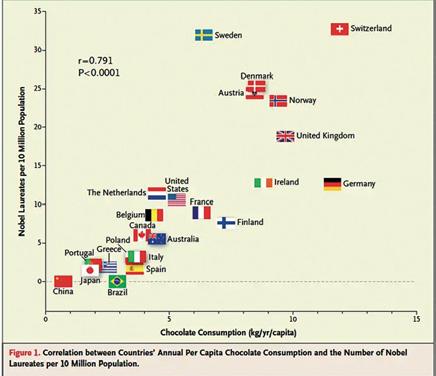
 Nobel Awards per country plotted against chocolate consumption
Nobel Awards per country plotted against chocolate consumption
The last word
Poster, poster on the wall who is the smartest of them all?
The Great BCI Poster Competition seems to have flown over the heads of European delegations attending the great BCI convention this April in Kentucky.
“Our illustrious colleagues from over the pond have flooded BCI with some elegant photos,” says Roger Miksad, EVP at the council. “But they’re rather missing the point — these aren’t the posters we’re looking for.”
Fine dining à la BCI
BCI delegates always reckon the opening reception will give them a fair taste of local cuisine — think gumbo (New Orleans), tuna sliders (San Diego), 10,000 things you can do with beans and steak (all points Texas) but it’ll be interesting to see what’s served up this April in Louisville.
Reminds one of the joke. What’s the difference between a Kentucky zoo and a New York one? A Kentucky zoo has a description of the animal on the cage … along with a recipe.

And so to India where John Shepherd — editor of Batteries International and once called the journalistic “Icon of the Industry” (you couldn’t make this stuff up) — could be found in early December rushing to the ILZDA conference.
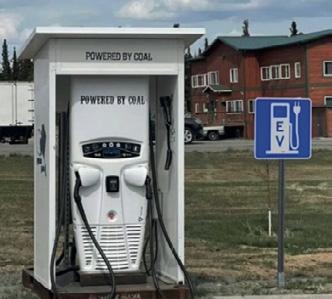
Despite a half-hearted attempt to go to Mumbai instead — “I thought it’d be more fun as a conference destination” — it soon became clear, he was up to his old tricks again.
Arriving at the Delhi conference hotel he demanded a room but was told that he was in the right hotel but the wrong day.
Shepherd, with complete aplomb, found another hotel immediately.
“After years of knocking on strange hotel rooms in the middle of the night this was child’s play”.
“This hotel looks nice. I think i’ll stay here”


‘Child’s play’ in Indian hotel mix-up
“Powered by coal: the great EV transition finally reaches the US!”
Saving the environment, the US way



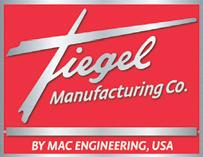

For over 55 years, MAC Engineering & Equipment Company, Inc. has sold more than 4500 machines, to over 300 customers, in 81 different countries, bringing the MAC Advantage worldwide. MAC ENGINEERING & EQUIPMENT COMPANY, INC. Visit www.mac-eng.com to see how we can bring the MAC Advantage to you!





















































































































































 Made
Made




 Terry Murphy, CEO, Hammond Group International
Terry Murphy, CEO, Hammond Group International





 Andy Bush, managing director, ILA
Andy Bush, managing director, ILA























































































 Nobel Awards per country plotted against chocolate consumption
Nobel Awards per country plotted against chocolate consumption
















